The best places to view the total solar eclipse in Texas in April 2024 include:
- Hillsboro: It lies along the center line of totality and is an easy destination, located on Interstate 35 where I-35E and I-35W split south of Dallas1.
- Lampasas: Situated near the center line of the eclipse path, offering a good viewing site for the total solar eclipse1.
- Kerrville, Bandera, and Fredericksburg: These places in the Texas Hill Country are in the most favorable position in the path of the eclipse and will experience a longer period of totality, with some areas getting around four and a half minutes of totality3.
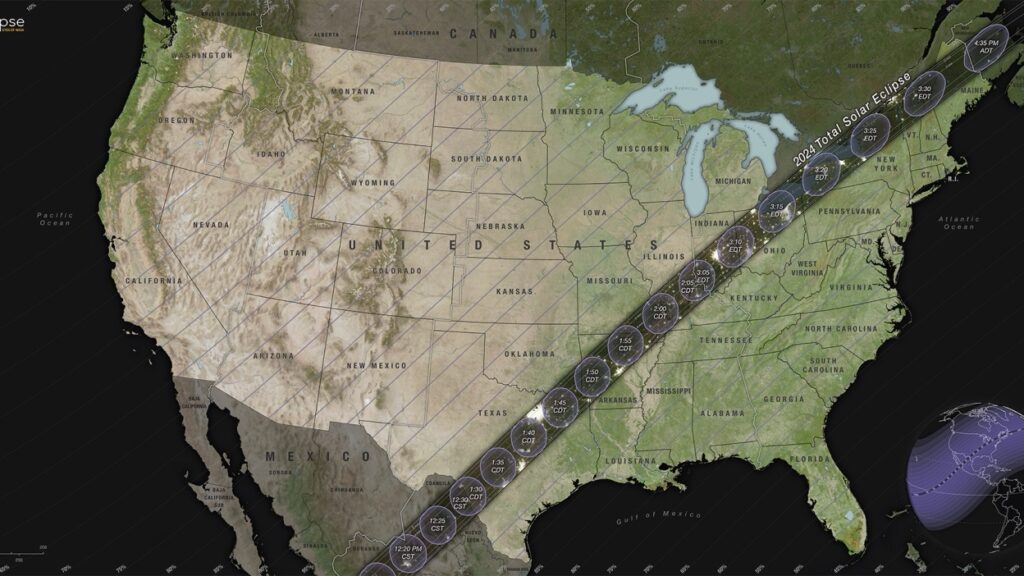
Other recommended cities for viewing the eclipse in Texas include Temple, Waco, Irving, Tyler, Boerne, and Dallas23.
Several events and festivals are planned in Texas during the total solar eclipse in April 2024. Some popular ones include:
- Natalia Bluebonnet Festival: This festival in Natalia, Texas, will coincide with the eclipse and feature a parade, vendors, music, food, and a carnival1.
- Shadow of the Moon Eclipse Gathering: A four-day festival with music, food, vendors, wine tours, hot air balloon rides, a farm-to-table dinner, and a polo match in Fredericksburg, TX1.
- Texas Star Party: An annual event with star parties, speakers, door prizes, and astronomy activities at Latham Springs Camp and Retreat Center in Texas1.
- Texas Eclipse Festival 2024: A celebration of music, art, space, and technology during the 2024 total solar eclipse in Burnet, Texas4.
- Fredericksburg Hot Air Balloon Solar Eclipse Festival: This festival will feature hot air balloons, music, and interactive activities during the eclipse3.
These events offer a range of entertainment and activities, making them popular choices for experiencing the total solar eclipse in Texas.
For more remote viewing spots, places like Boerne, Bandera, or Kerrville are also recommended2.
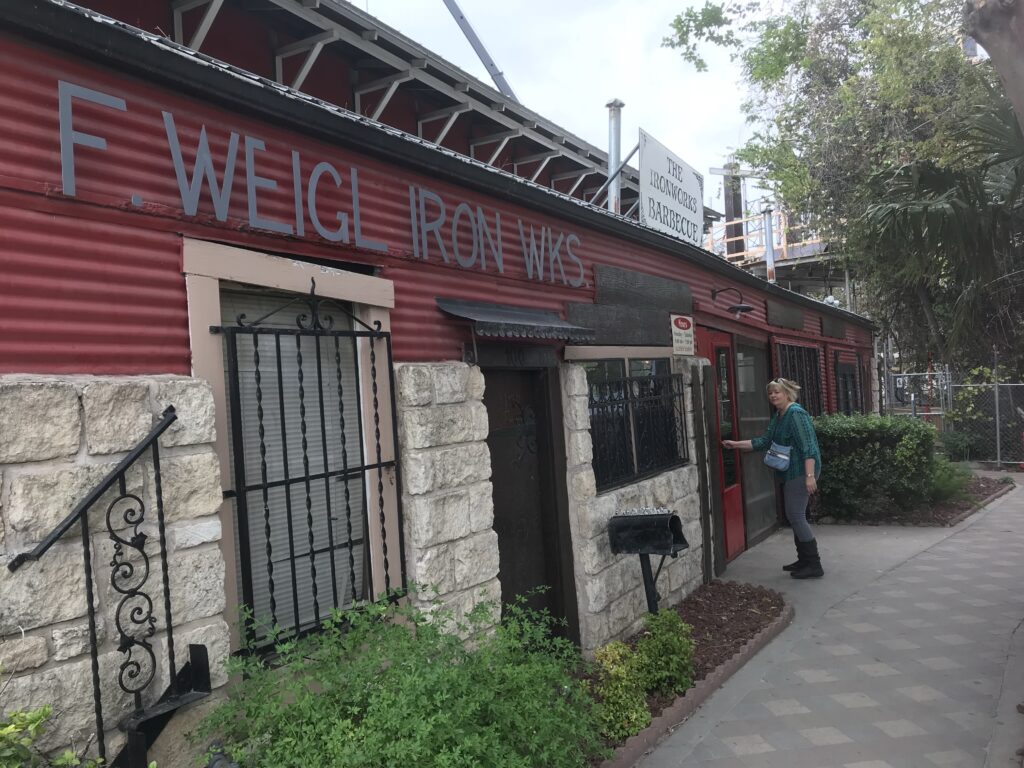
Texas is a popular tourist destination known for its diverse landscapes, delicious food, rich history, and vibrant culture. Some of the reasons people consider Texas a good place to visit include:
- Diverse Landscapes: Texas offers a wide array of climates, scenery, and cultures, from the country to the city, making it an ideal destination for various outdoor and nature adventures1.
- Delicious Food: Texas is a foodie lover’s paradise, known for its BBQ, Tex-Mex, and a variety of other cuisines2.
- Rich History and Culture: Texas has a rich history and culture, offering a unique blend of urban sophistication and rural charm. It is home to many popular tourist destinations, including bustling cities, scenic coastlines, and cultural attractions3.
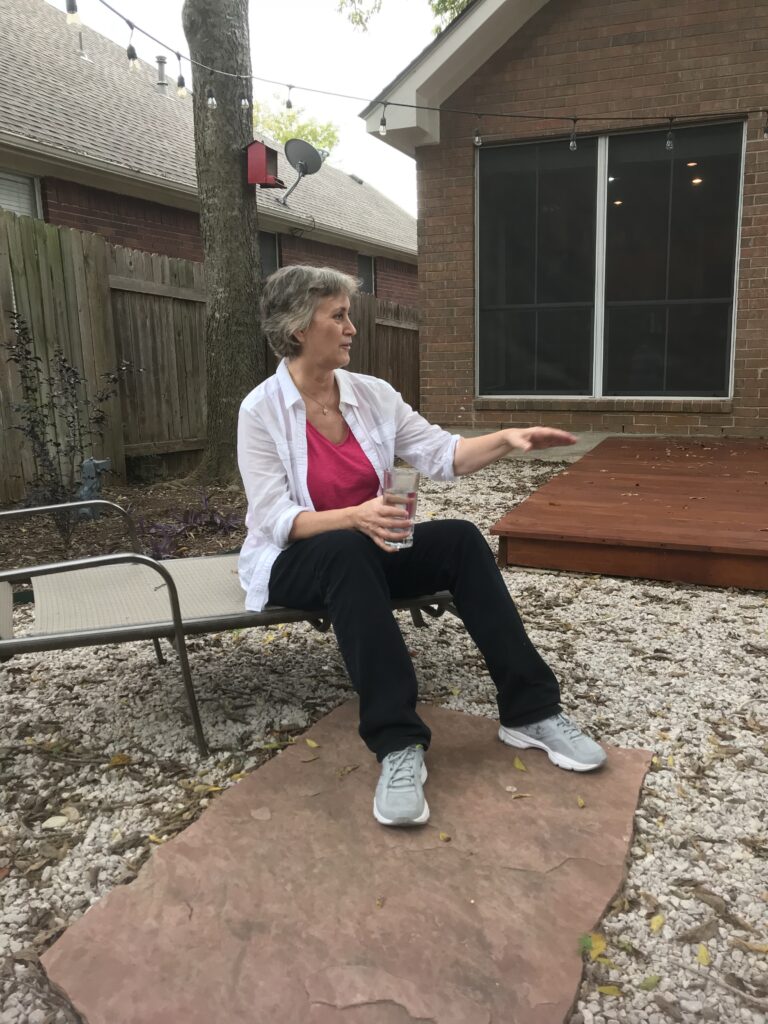
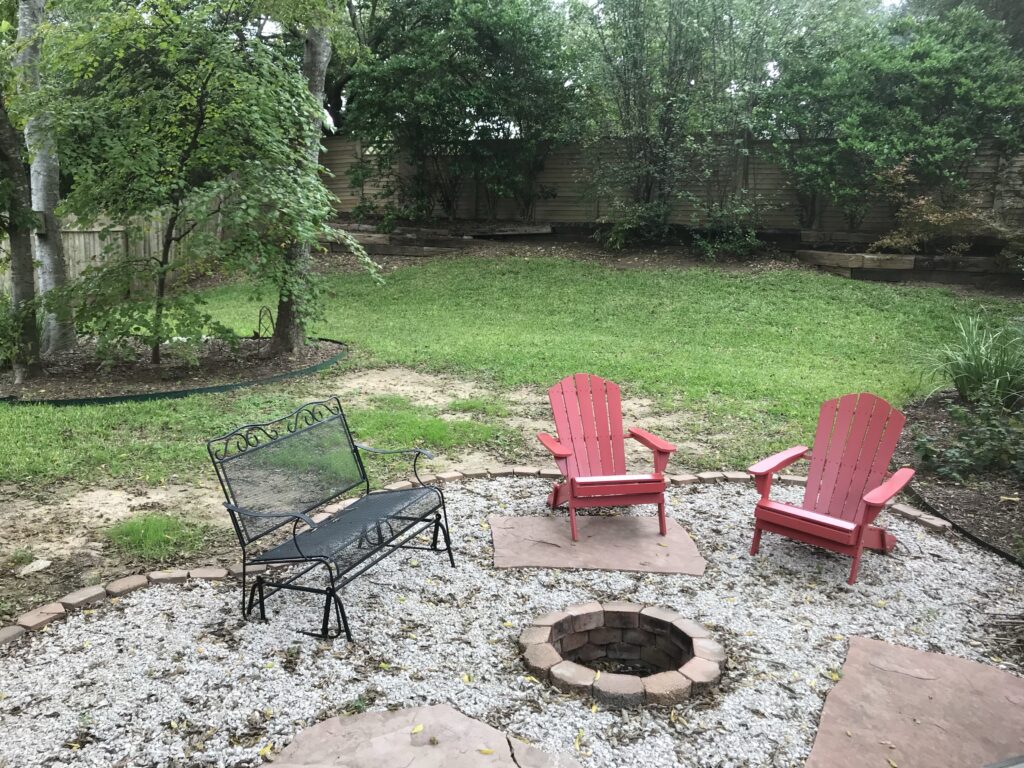
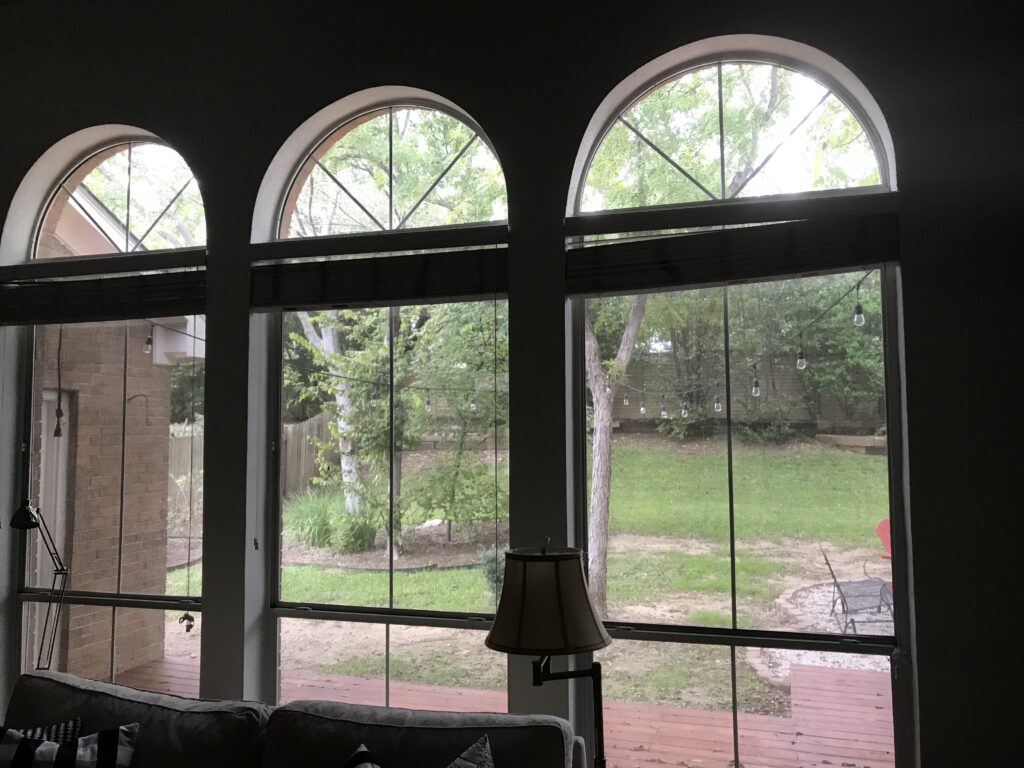

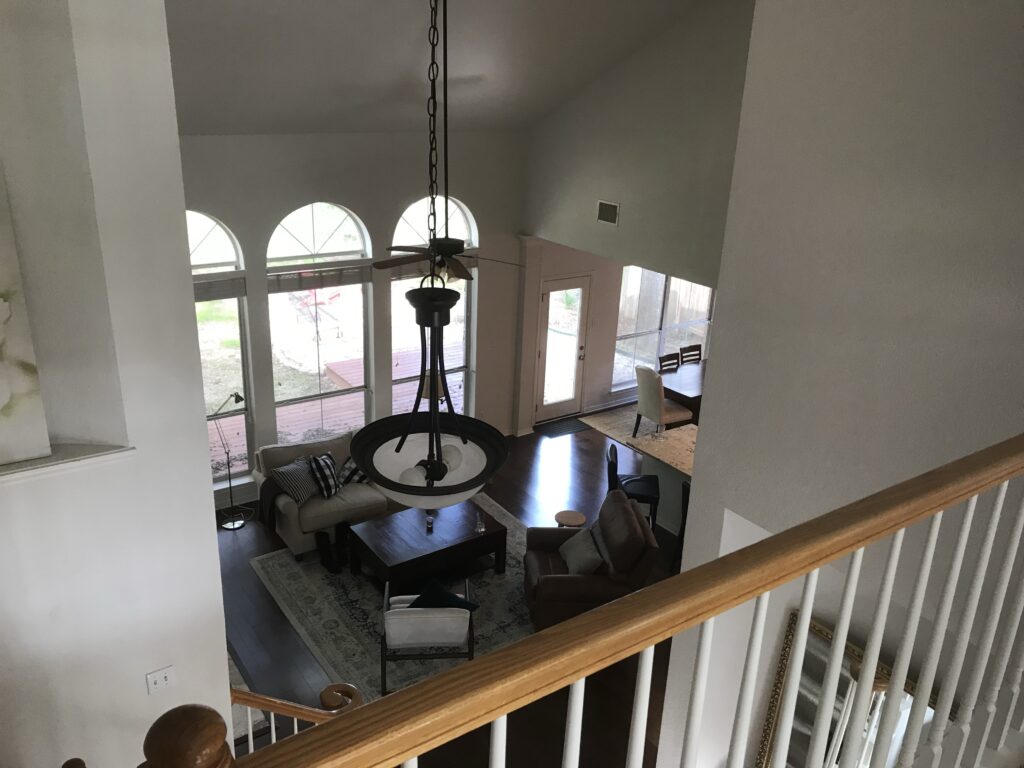
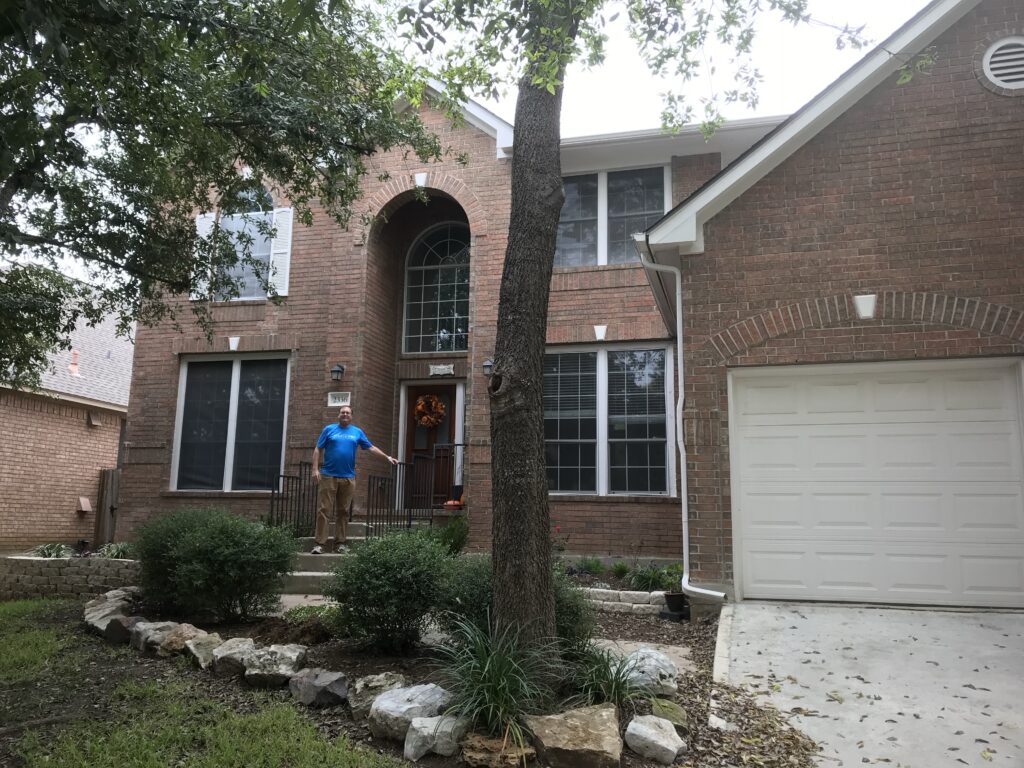
In addition to the total solar eclipse, Texas offers a range of attractions for different interests:
- Birders: Texas is a prime location for birding, with diverse habitats and a wide variety of bird species, especially during migration seasons.
- Hikers: Texas has numerous state parks, nature reserves, and scenic trails, including the Big Bend Ranch State Park and Galveston Island State Park.
- Historians: Texas is rich in history, with attractions such as The Alamo in San Antonio and various museums and historic sites.
- Boaters: The Gulf Coast and lakes in Texas offer ample opportunities for boating and water activities.
- Politicians: Texas has a unique political landscape and is home to various political landmarks and institutions.
- Architects: The state boasts a mix of modern and historic architecture, including the Texas State Capitol and the San Antonio Missions.
Overall, Texas has much to offer beyond the solar eclipse, making it an attractive destination for a wide range of interests.
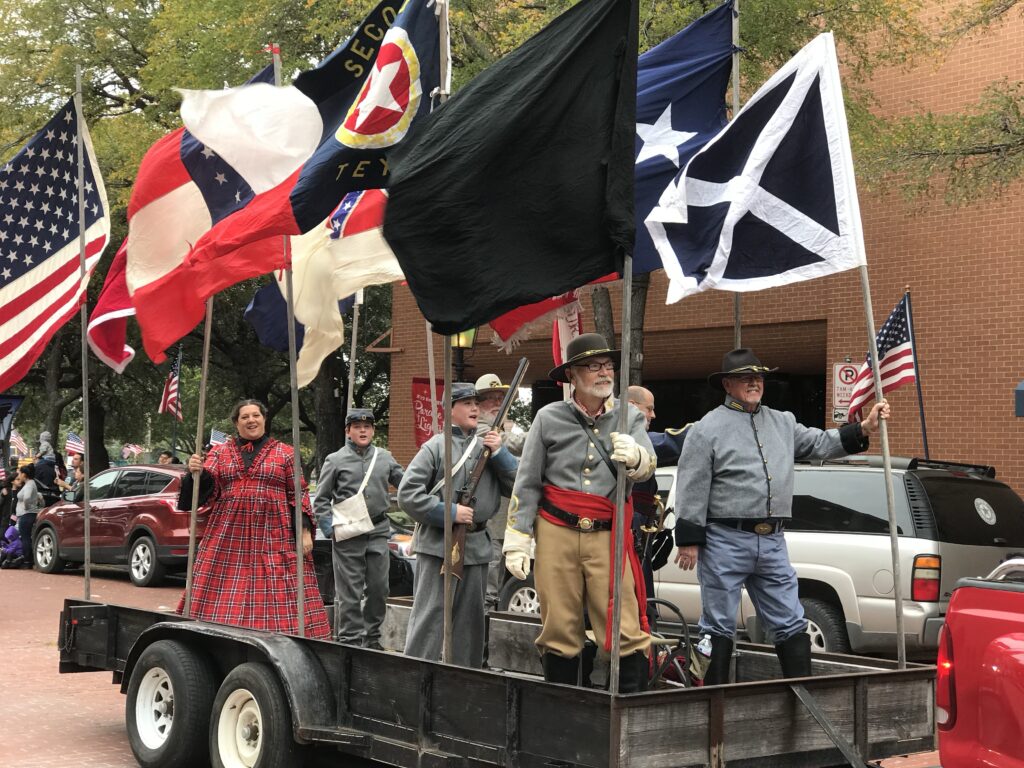
Visitors interested in the Confederacy in Texas may find historical sites and museums related to the Civil War, such as the Texas Civil War Museum in Fort Worth and the Confederate Reunion Grounds State Historic Site in Mexia.
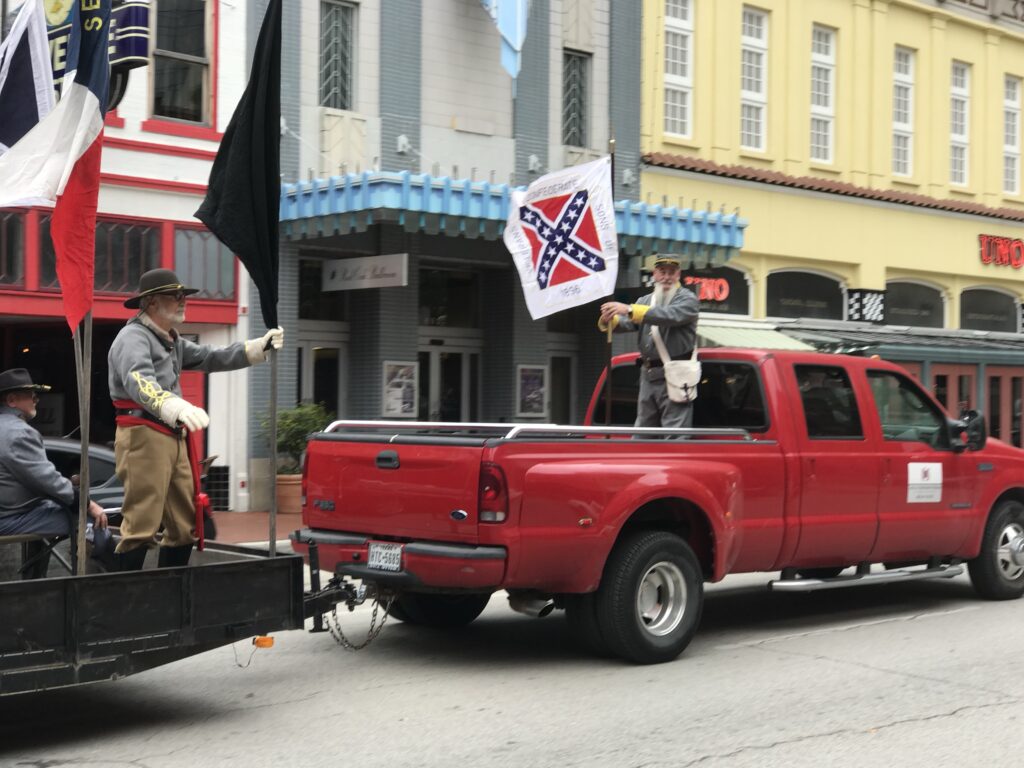
Texas is home to several national parks, offering diverse landscapes and recreational opportunities. Some of the notable national parks in Texas include:
- Big Bend National Park: Located in far west Texas, it is one of the largest and most remote national parks in the country, known for its varied ecosystems and stunning natural beauty12.
- Guadalupe Mountains National Park: Situated in west Texas, it features rugged mountains, canyons, and the highest peak in Texas, providing excellent hiking and nature exploration2.
- Padre Island National Seashore: This park protects a long stretch of barrier island along the Texas Gulf Coast, offering pristine beaches, dunes, and diverse wildlife, making it a popular destination for outdoor enthusiasts23.
- Alibates Flint Quarries National Monument: Located in the Texas Panhandle, it preserves historical and archaeological sites related to Native American cultures and flint quarrying4.
- Amistad National Recreation Area: Situated near Del Rio, it encompasses the US portion of the International Amistad Reservoir, providing opportunities for water-based recreation and outdoor activities4.
These national parks showcase the natural and cultural heritage of Texas, attracting visitors with their scenic beauty, outdoor recreation, and educational experiences. For example:
Some popular activities to do in Big Bend National Park include:
- Hiking: There are numerous hiking trails offering diverse landscapes and stunning views, such as the Lost Mine Trail, Santa Elena Canyon, and the South Rim Trail34.
- Scenic Drives: Explore the park’s beauty through scenic drives, including the Ross Maxwell Scenic Drive, which offers panoramic views of the park’s geology and landscapes34.
- Hot Springs: Visit the Langford Hot Springs to immerse yourself in the history and enjoy a relaxing experience4.
- Stargazing: Big Bend National Park is known for its dark skies, making it an ideal location for stargazing and observing the night sky4.
- Canoeing and Kayaking: The park’s border along the Rio Grande River provides opportunities for water activities such as canoeing and kayaking4.
- Wildlife Observation: The park is home to a diverse range of wildlife, offering opportunities for birdwatching and wildlife observation4.
These activities allow visitors to experience the natural beauty and diverse landscapes of Big Bend National Park, making it a popular destination for outdoor enthusiasts and nature lovers.

Dallas / Fort Worth
Yes, Dallas is a place to see the total eclipse on April 8, 2024. The entire Dallas-Fort Worth area is in the path of totality, and the city will experience approximately 3 minutes and 52 seconds of totality, with the eclipse beginning at 1:42 pm local time125. The Dallas Arboretum and Botanical Garden is one of the locations where the total solar eclipse can be observed, offering an opportunity for visitors to experience this rare and spectacular astronomical event3. Therefore, Dallas is a recommended location for witnessing the 2024 total solar eclipse.
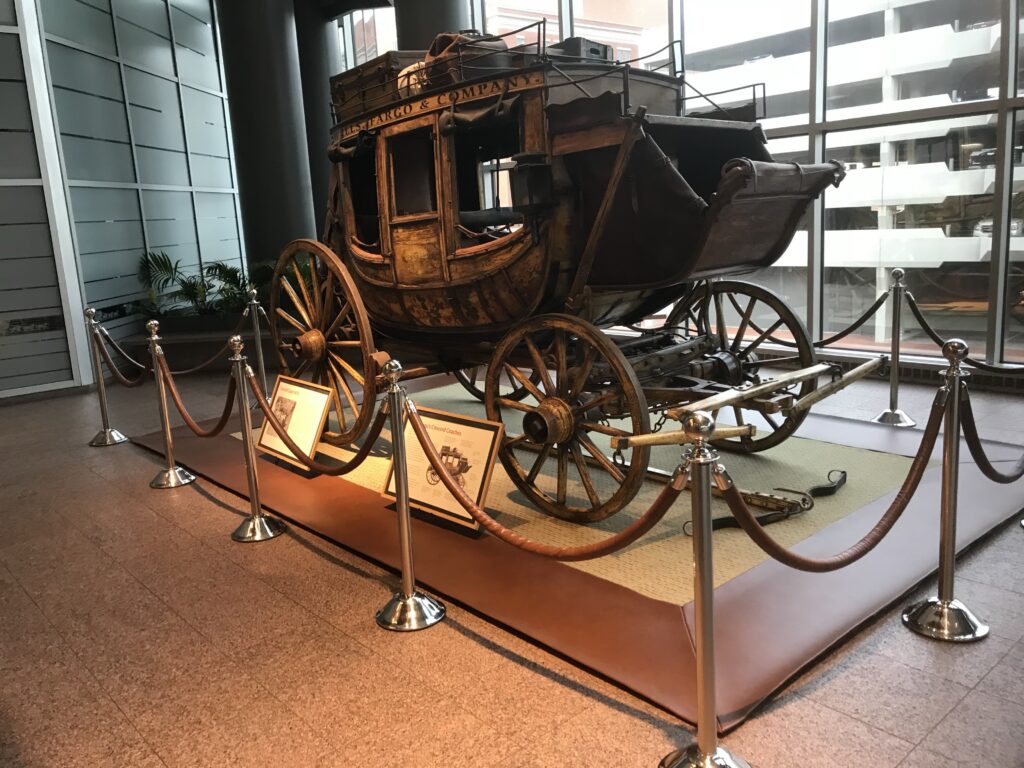
Dallas is known for its rich history, vibrant arts scene, and modern architecture. One of the most notable memorials in Dallas is the John F. Kennedy Memorial, located in the West End Historic District of downtown Dallas. The John F. Kennedy Memorial Plaza was dedicated on June 24, 1970, and is a significant landmark in the city. The memorial, designed by renowned American architect Philip Johnson, is a cenotaph that symbolizes the freedom of President Kennedy’s spirit. It is a square, roofless room with 72 white pre-cast concrete columns. The memorial is intended for reflection and remembrance and has become an integral part of the city’s urban landscape and cultural heritage24.
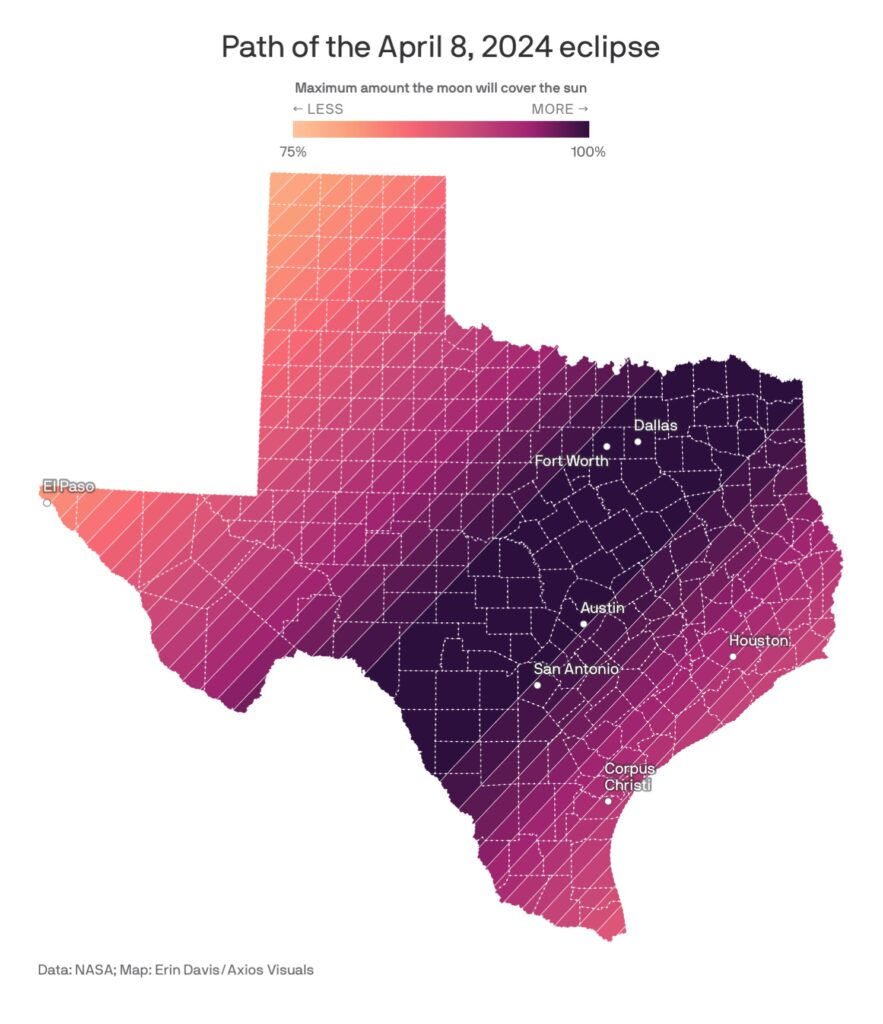
In addition to the John F. Kennedy Memorial, Dallas is also known for its diverse cultural attractions, including the Dallas Arts District, the Perot Museum of Nature and Science, the Dallas Museum of Art, and the Dallas World Aquarium. The city offers a wide range of entertainment, dining, and shopping options, making it a popular destination for tourists and visitors5.
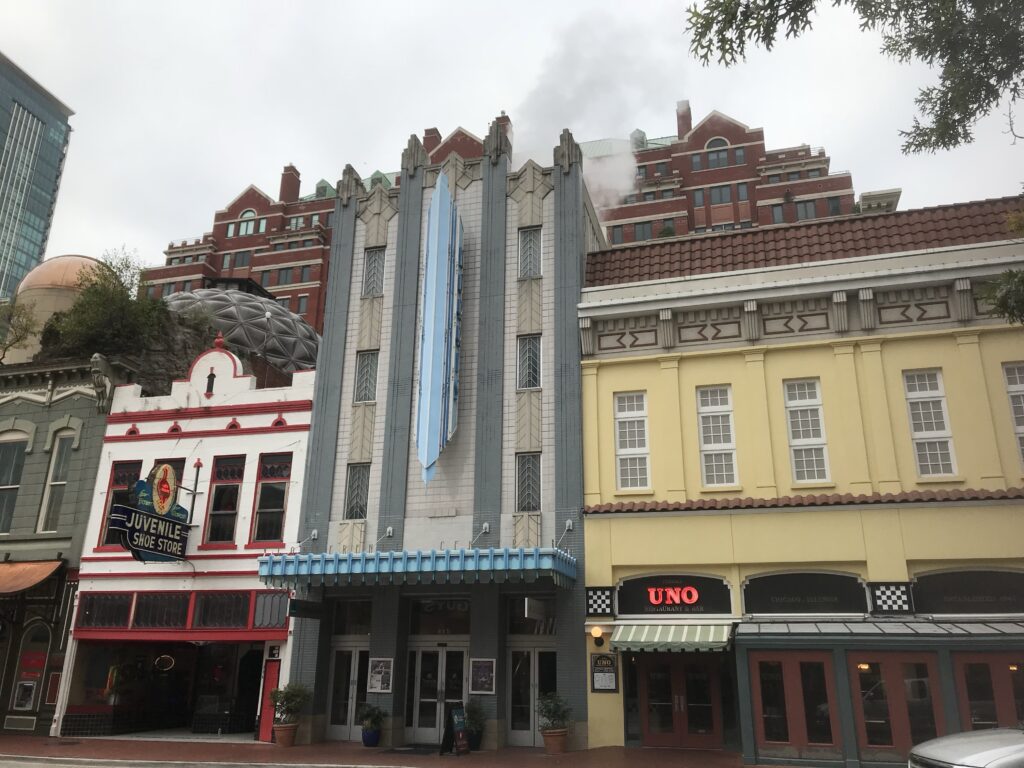
Fort Worth is known for its rich history, vibrant culture, and distinctive districts. Some of its notable attractions include the Fort Worth Stockyards National Historic District, the Kimbell Art Museum, the Fort Worth Zoo, and the Fort Worth Botanic Garden13.
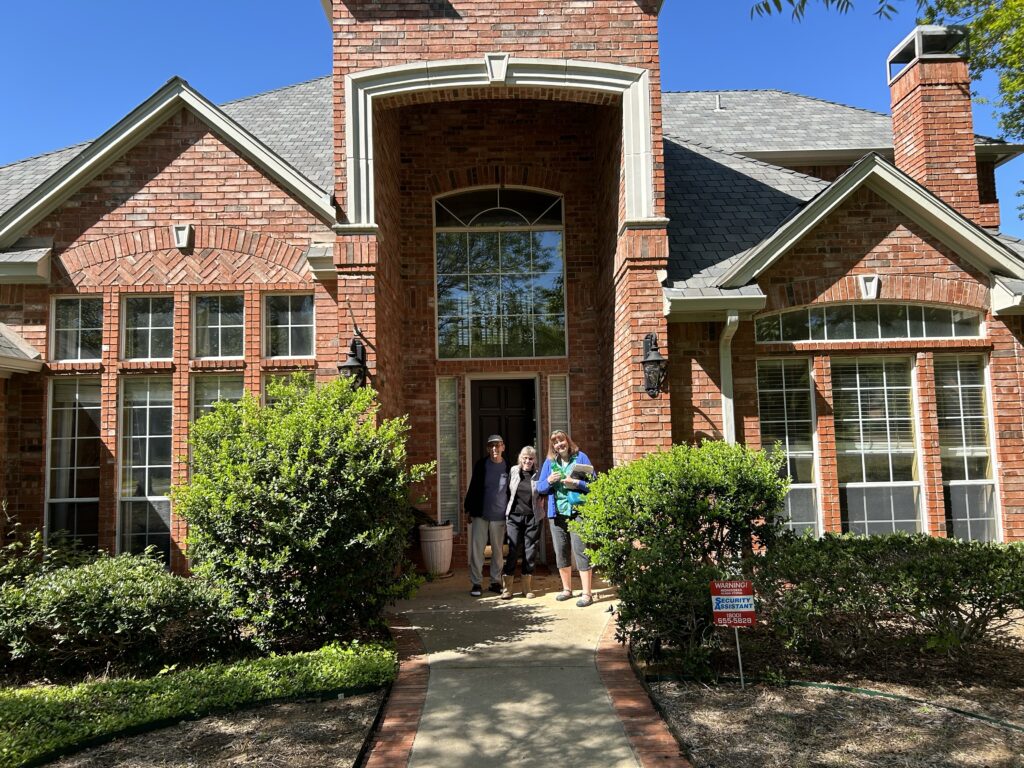
The American Indian tribes occupying this Northern Frontier were the Comanches, Caddo, Kichai, Kickapoos, Delawares, Apache and other tribes. The settlers and American Indians came to settle under the protective arm of this military post, Fort Worth.
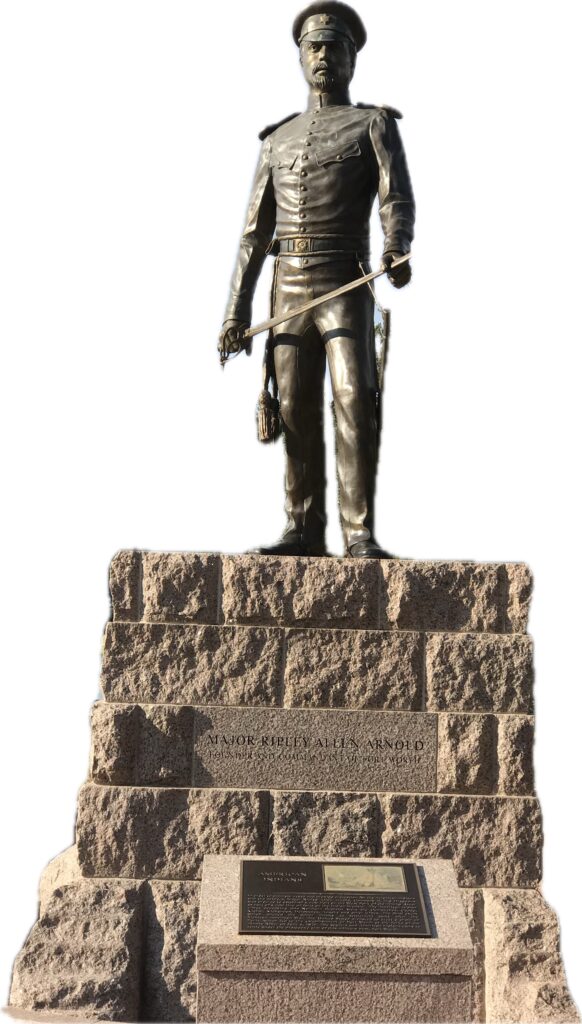
In order to promote peace and provide protection for the American Indians and the settlers, Major Ripley Allen Arnold, Company E, 2nd Dragoons was ordered to establish a new Fort on the West Fork of the Trinity River as part of a new line of forts on the Indian Frontier.
The final event which opened the upper Trinity to settlement came after the Mexican-American War. The United States prepared to erect a chain of Forts, which led to the establishment of Fort Worth at the forks of the Trinity River on June 6, 1849.
The Beginning: A Vision
Fort Worth: Founded as a military outpost to provide protection to settlers in the area. Major Ripley Arnold and his company of 2nd Dragoons arrived at the Clear Fork of the Trinity River beneath this bluff on June 6, 1849.
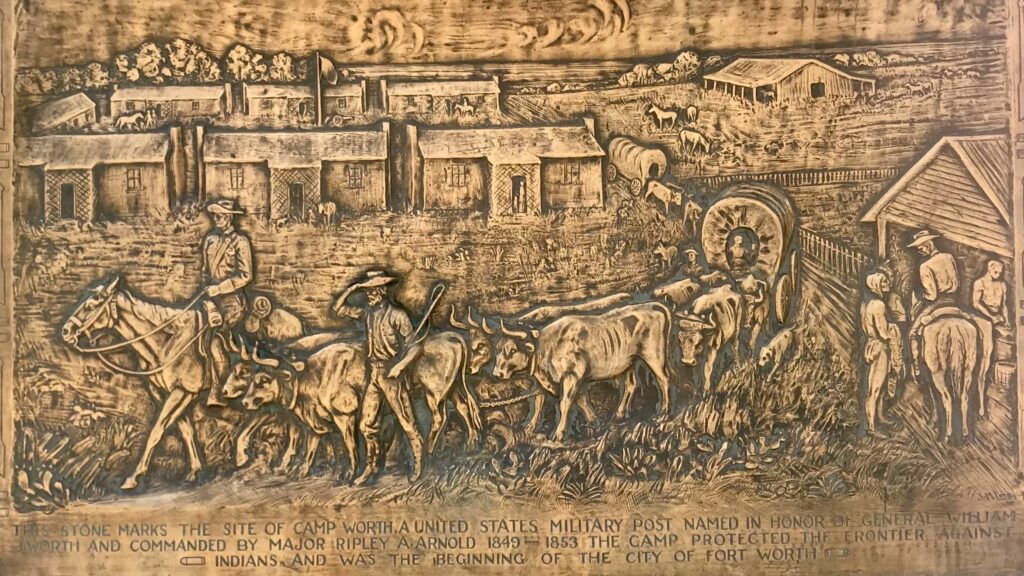
Looking across the valley, Major Arnold considered the bluff to be a strategic advantage for the location of the infantry camp which he named in honor of his commander, General Williams Jenkins Worth. Despite the prospects of military con-flicts, Major Arnold envisioned growth and prosperity for the area. And the pioneer spirit of Fort Worth and her people have flourished ever since.
With the establishment of peace in the area, the military moved westward. Frontier families moved into the vacated fort facilities and forged the nucleus for a thriving settlement. The site of that early settlement, Heritage Park, is still at the heart of the city and the county seat.
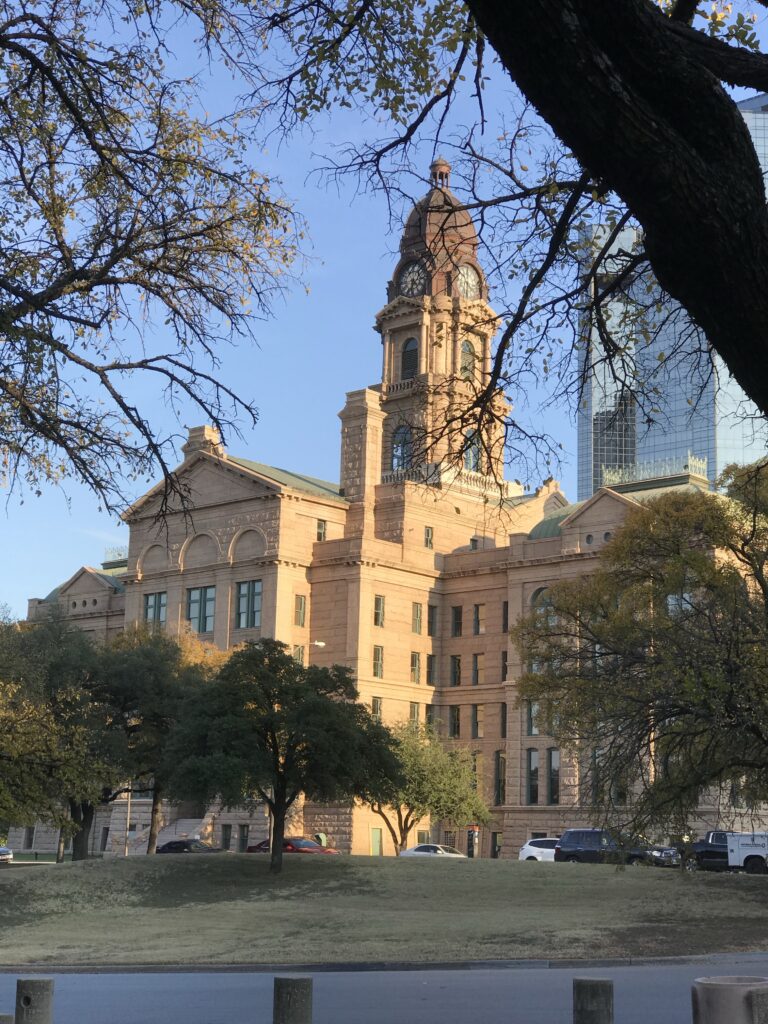
The cattle industry significantly shaped early Fort Worth history. Beginning in 1867 the famous Chisolm Trail passed below this bluff crossing the Trinity River to the north at Marine Creek. Cow-boys, weary from the grueling drives stopped in Fort Worth and caroused in the saloons and gambling halls. The town burst into raw and vigorous life.
The coming of the railroad in 1876 and the resulting development of the meat packing industry catapulted Fort Worth to its position as a city instead of just a stop on the caftle trail. But it was the community spirit of Fort Worth citizens which made the railroad possible. When the Wall Street investors of the T & P Railroad ran out of capital. the railroad was 26 miles short of reaching Fort Worth and state land was to revert back to the state. The spirit and tenacity that had drawn early settlers to Fort Worth rallied citizens to complete the gap. In a burst of determination, men, women and children labored around the clock to lay the ties and finish the tracks. At the same time local senators filibustered to prevent the state legislature from reclaiming the railroad’s land before adjournment. On July 19, 1876, the first train rolled into Fort Worth.
The railroad and meat packing industries made Fort Worth a focal point for the cattle drives and caused industry, retail business and banking to thrive. The discovery of oil in 1911 in surrounding counties, and the establishment of miliary bases during World War I, fostered the continued growin and siability of Fort Worth.
The Vision had become a reality.
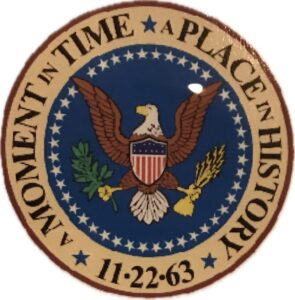
The Historic Hilton Ft. Worth is the former Hotel Texas, where President Kennedy and the First Lady stayed. The next morning, after a speech in the hotel’s ballroom, the President’s motorcade departed, taking with it the final moments of a more innocent America.
History has found a home here, from the hotel’s early days in the 1920’s, when the rowdy cattle town of Ft. Worth suddenly found itself awash in a new kind of wealth: oil money.
Fort Worth is part of the North Texas Ale Trail, which includes a variety of craft breweries and brewpubs in the region. Visitors can explore the local craft beer scene by visiting the different breweries and enjoying a wide range of unique and flavorful brews2.
In summary, Fort Worth is known for its historical significance, cultural attractions, and vibrant beer scene, making it a diverse and interesting destination for tourists and beer enthusiasts alike.
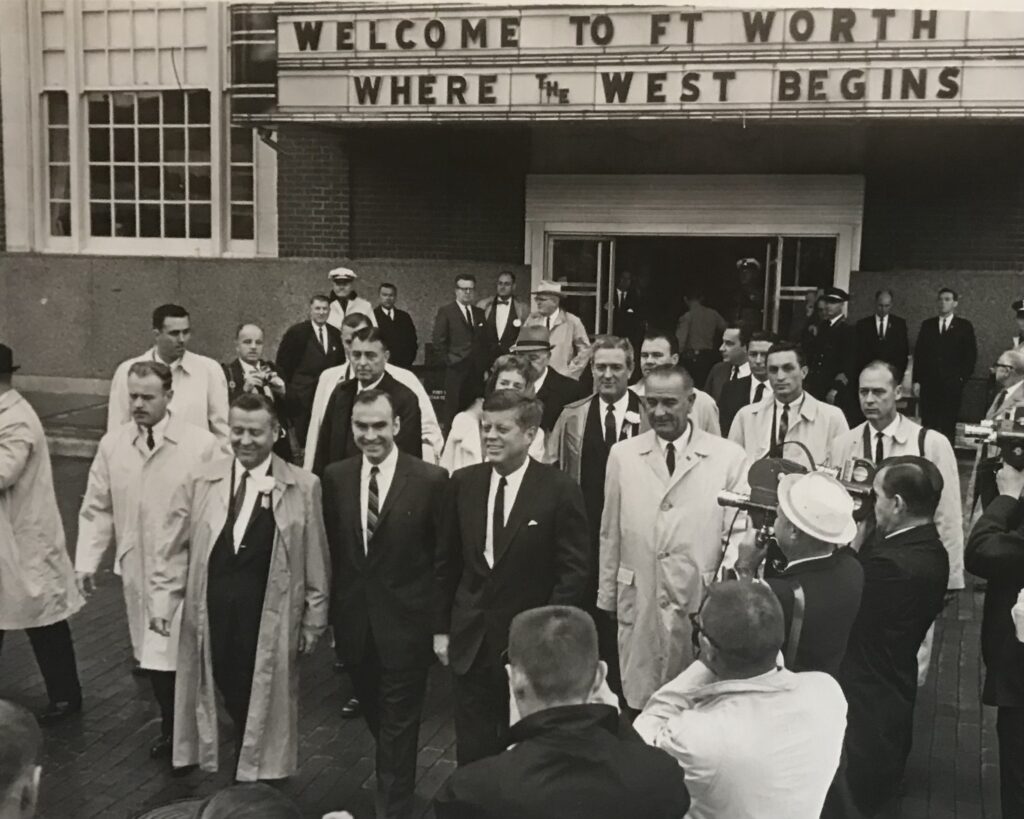
The president walked out of Hotel Texas’ Eight Street entrance behind Gov.
John Connally, Congressman Jim Wright, and U.S. Sen. Ralph Yarborough, Vice President Lyndon Johnson and others…Some of the spectators held signs which said: “Welcome to Fort Worth, Mr. President.” Another sign read “Welcome to Texas, Jack and Jackie.”
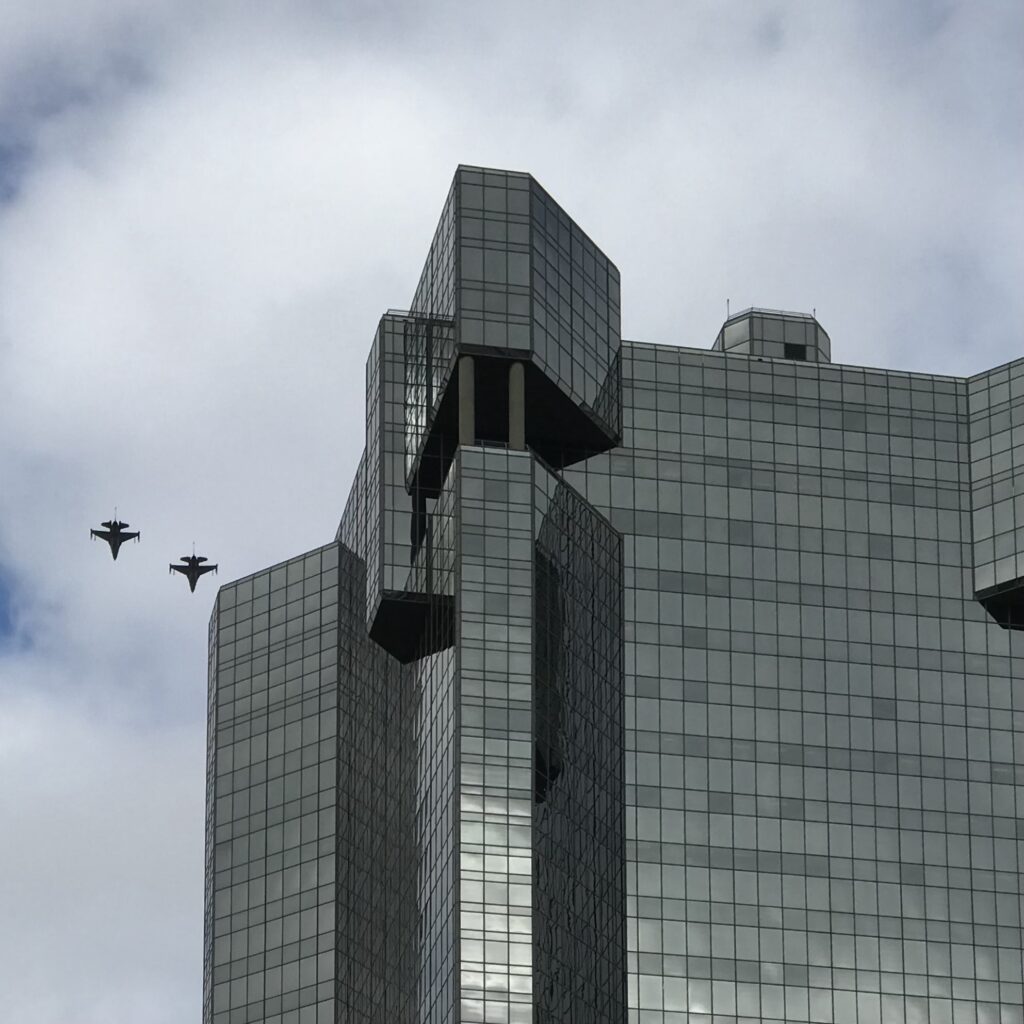
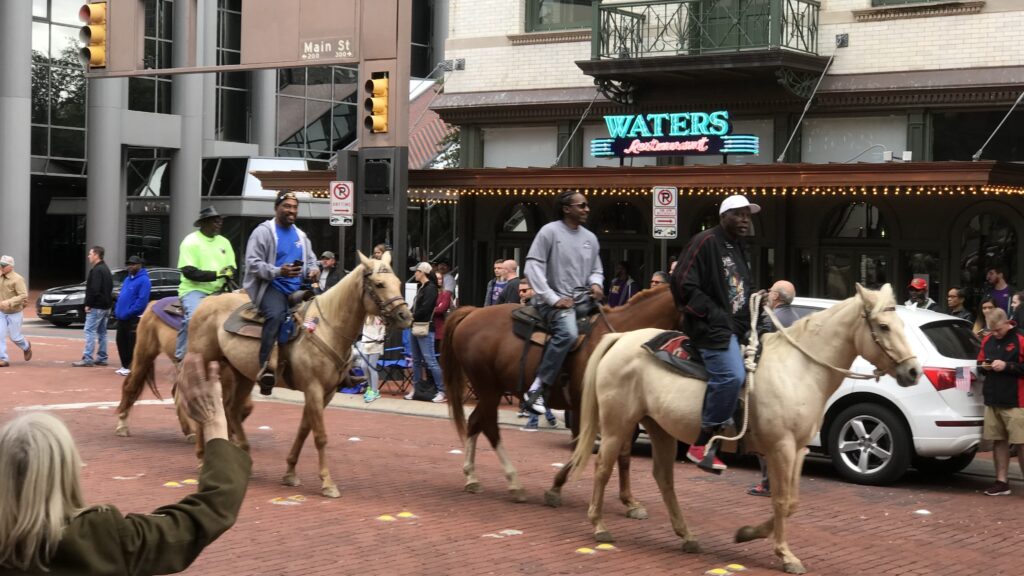
In downtown Fort Worth, a vibrant display, A Veterans Day parade, cultural array. People from all walks of life, side by side, Honoring veterans, with respect and with pride.
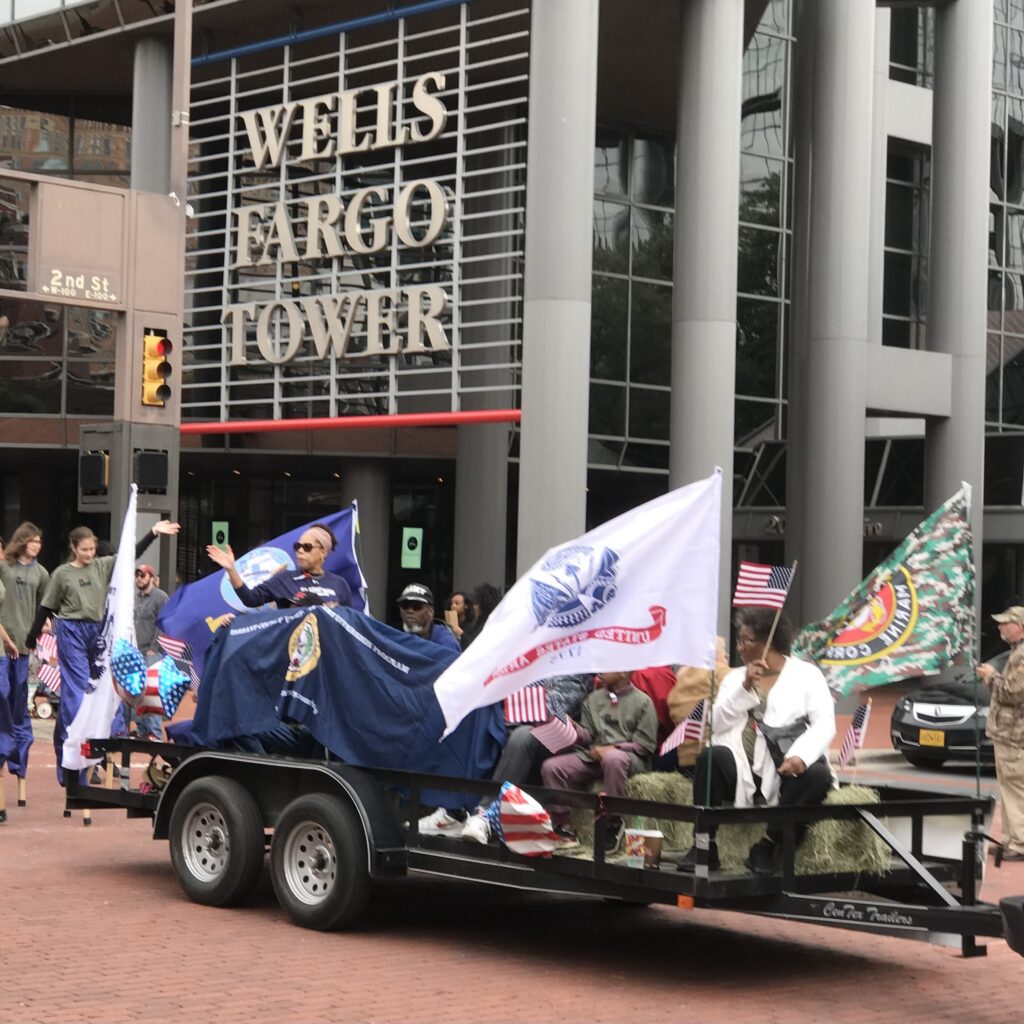
In Fort Worth, where history runs deep, Wells Fargo’s legacy, a promise to keep. Through Black Bart’s tales and poet’s verse, A stagecoach’s journey, a city’s diverse.
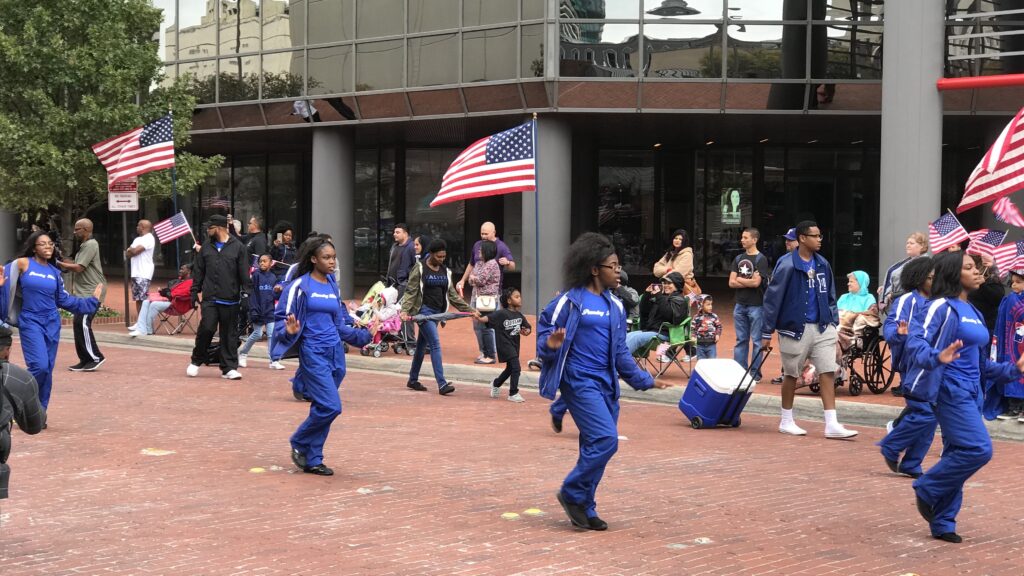
The poetry of the open range,
Echoes through time, a story so strange. In Fort Worth’s heart, the spirit of old, Where cultures blend, and stories are told.
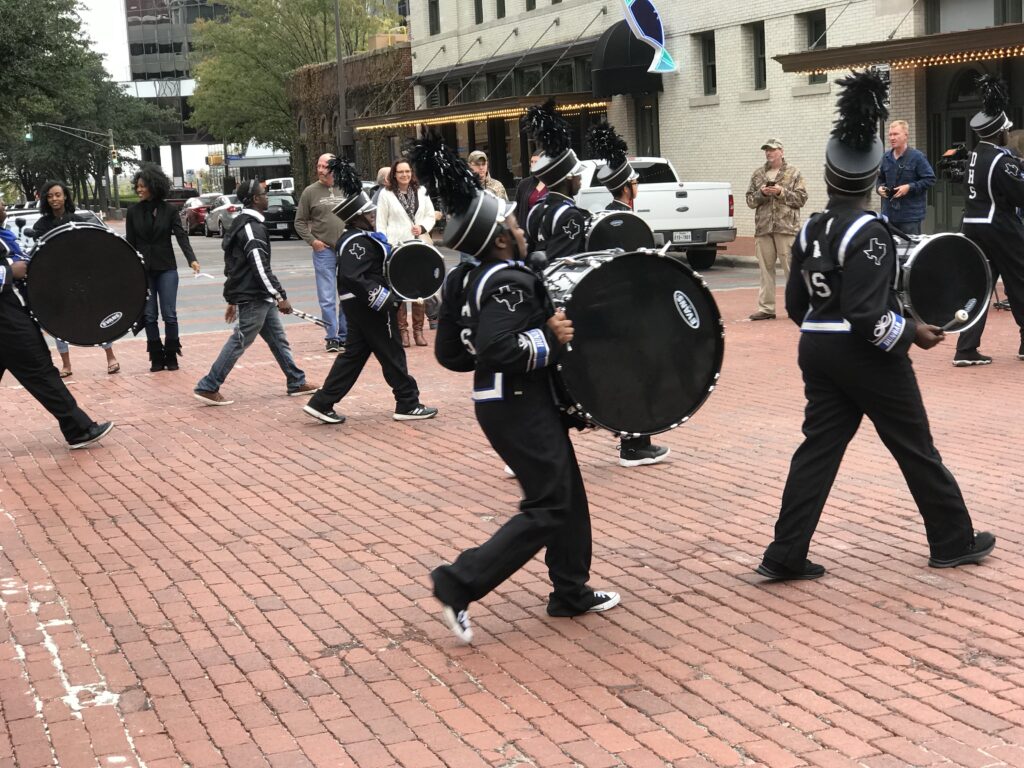
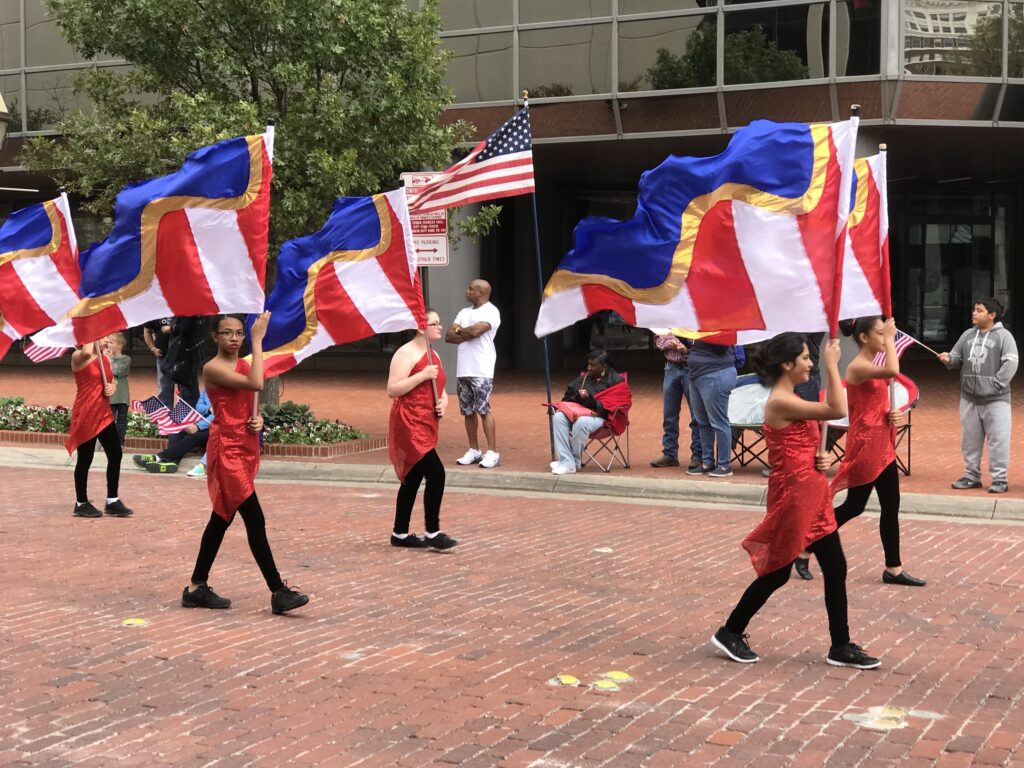
Their sacrifice honored, their valor in view. Amidst the cheers and the flags unfurled,
In Fort Worth’s parade, a sight to behold,
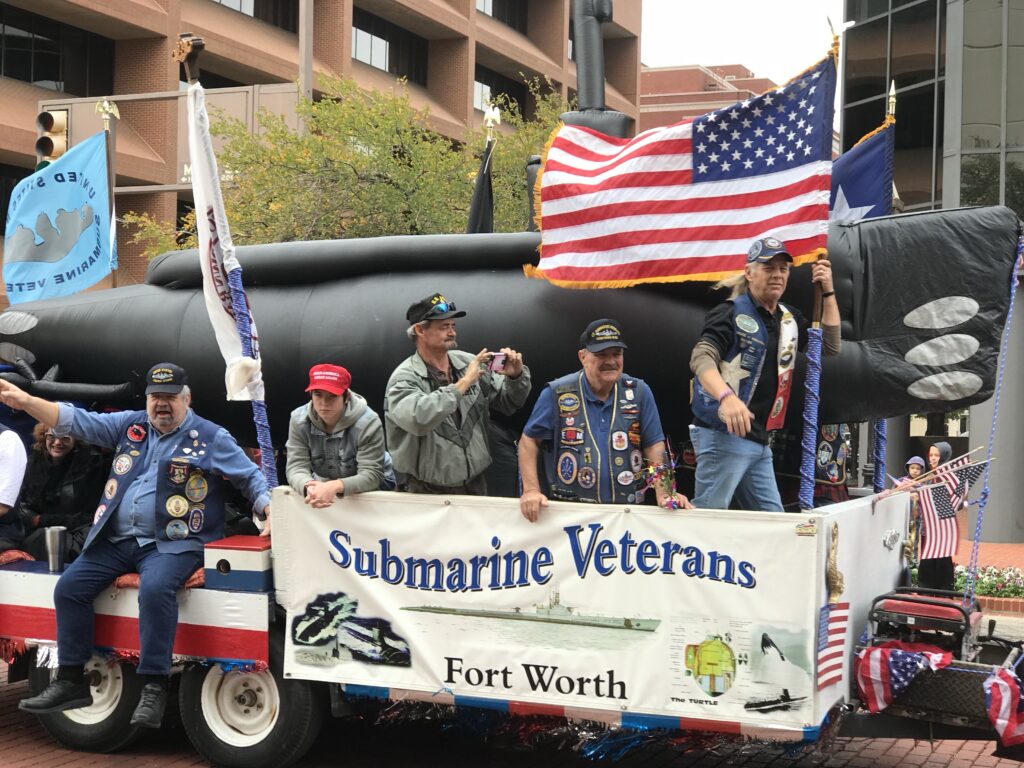
Submarine veterans, courageous and bold. Silent service beneath the deep blue,
Their stories untold, in an underwater world. In the heart of Texas, their presence profound, Submarine veterans, in silence, they’re found.
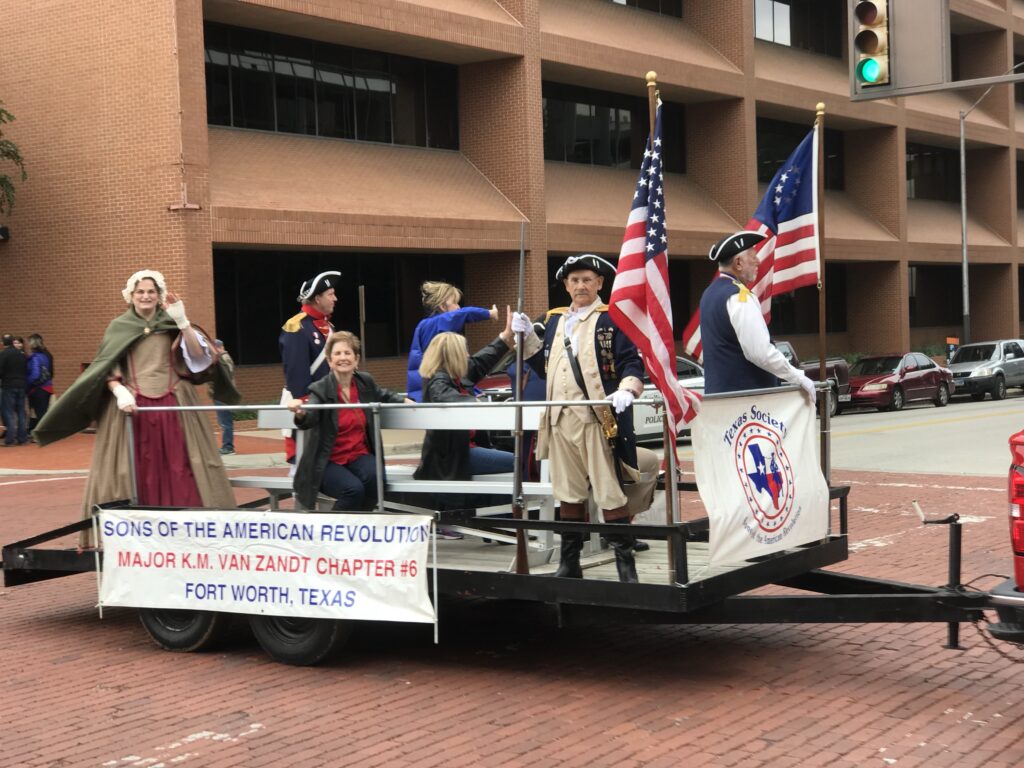
In Texas soil, their roots took hold, Stories of courage and fortitude untold. American colonists, a determined band, Shaped the Lone Star State, with vision grand.
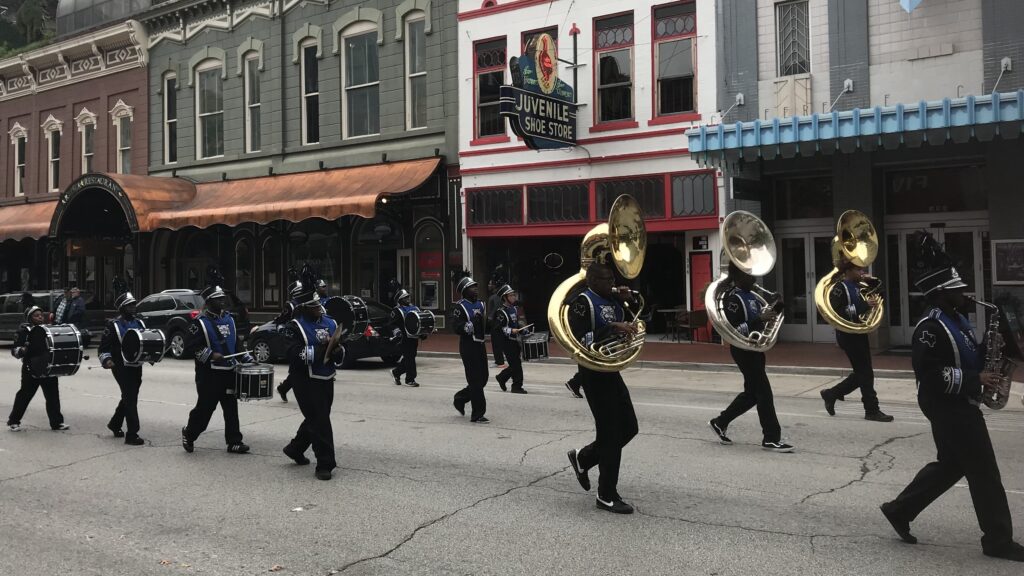
Then comes the band, a patriotic tune, Representing diversity, under the same moon. Different backgrounds, different stories to tell, Yet all come together, in this parade so swell.
Austin
Austin is in the path of totality for the Total Solar Eclipse on April 8, 2024. Visitors will see about 1 minute and 40 seconds of totality. The city has not yet started planning any special events for the eclipse, but it is expected that there will be various viewing opportunities and potentially some related events as the date approaches125. Margaritaville” was not written in Austin but the idea for the song came from a hang over in Austin The song was written by Jimmy Buffett and was first released on his 1977 album “Changes in Latitudes, Changes in Attitudes.” While Buffett is associated with the laid-back lifestyle often associated with Austin, “Margaritaville” itself was not written in the city.
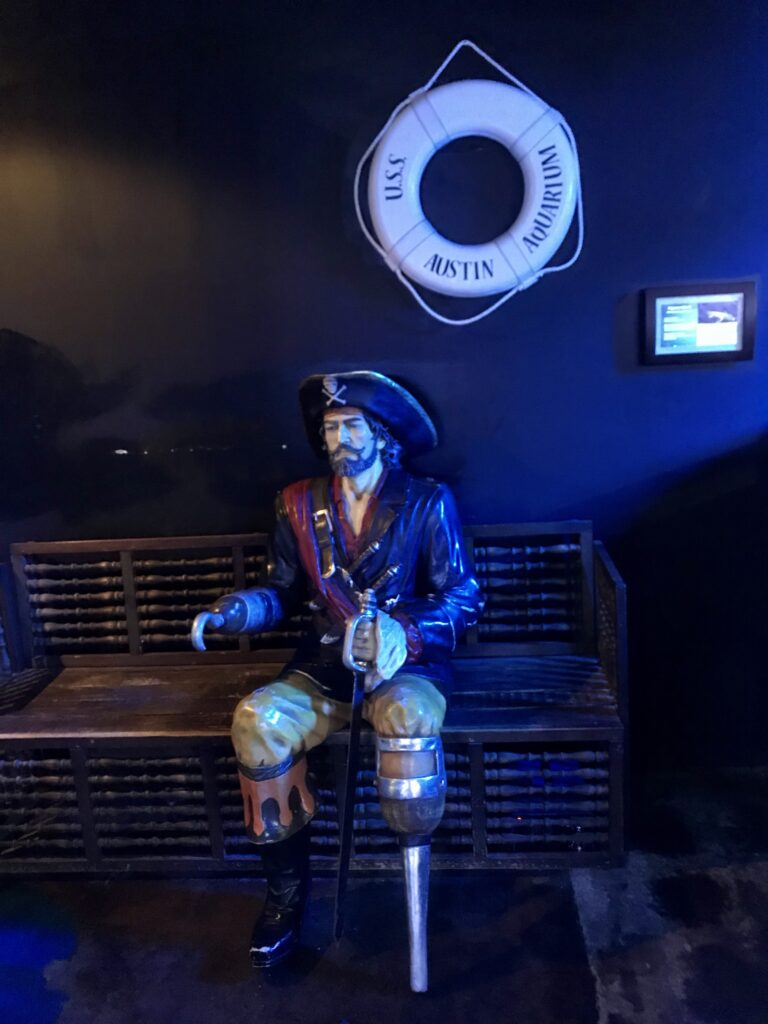
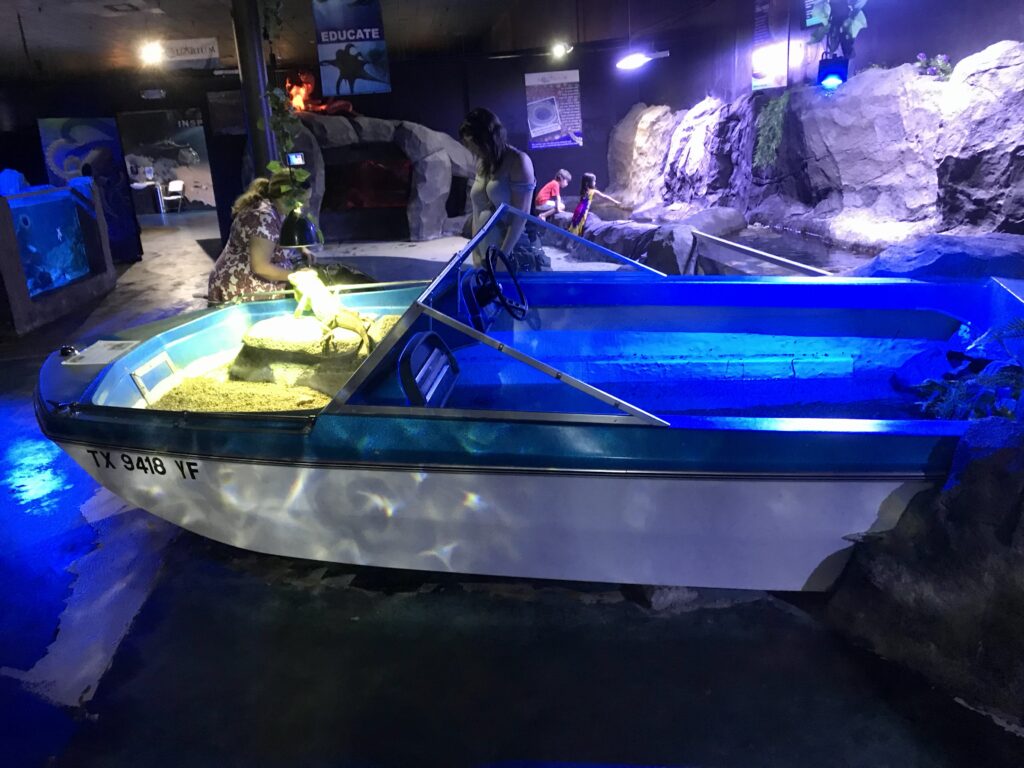
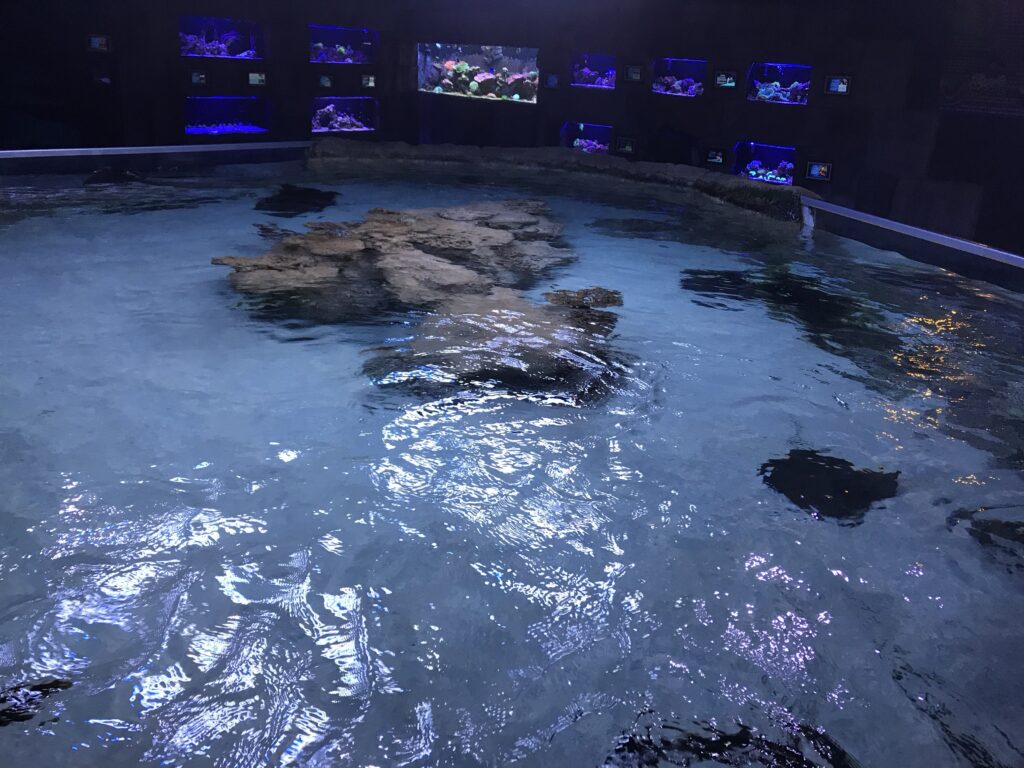
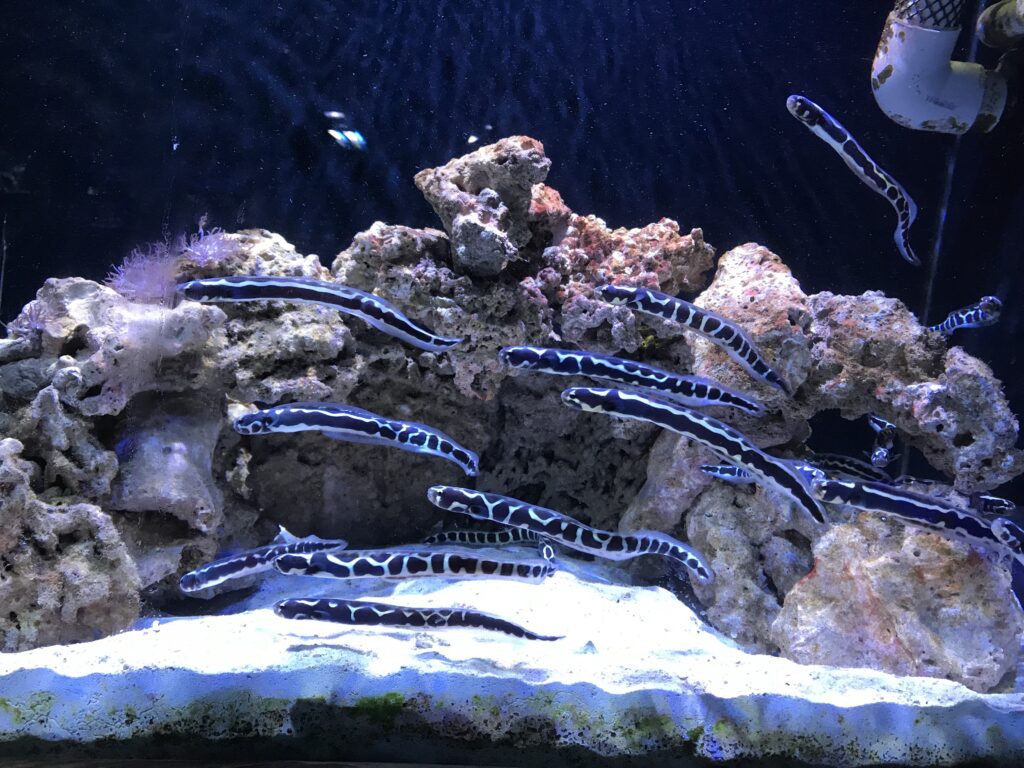
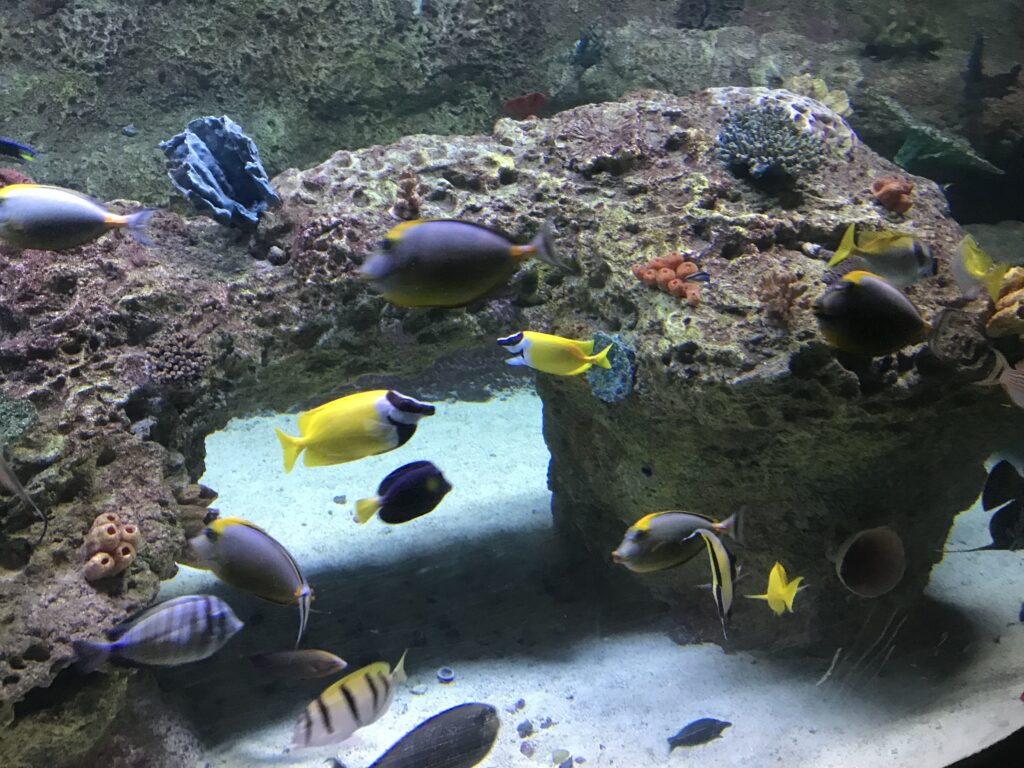
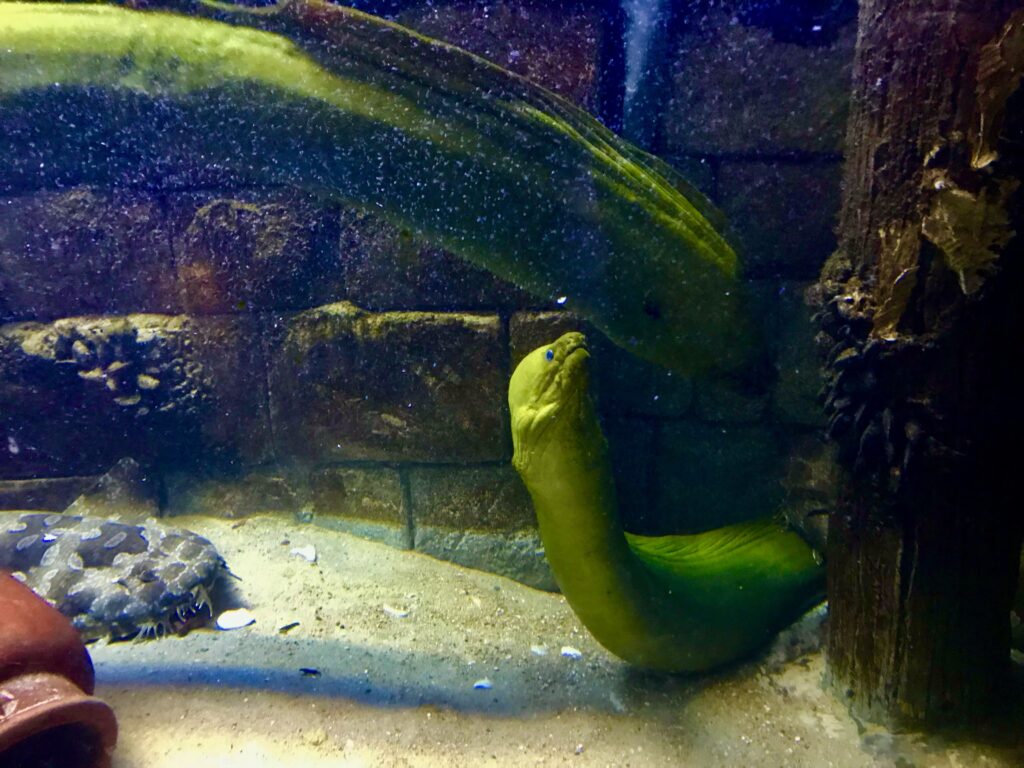


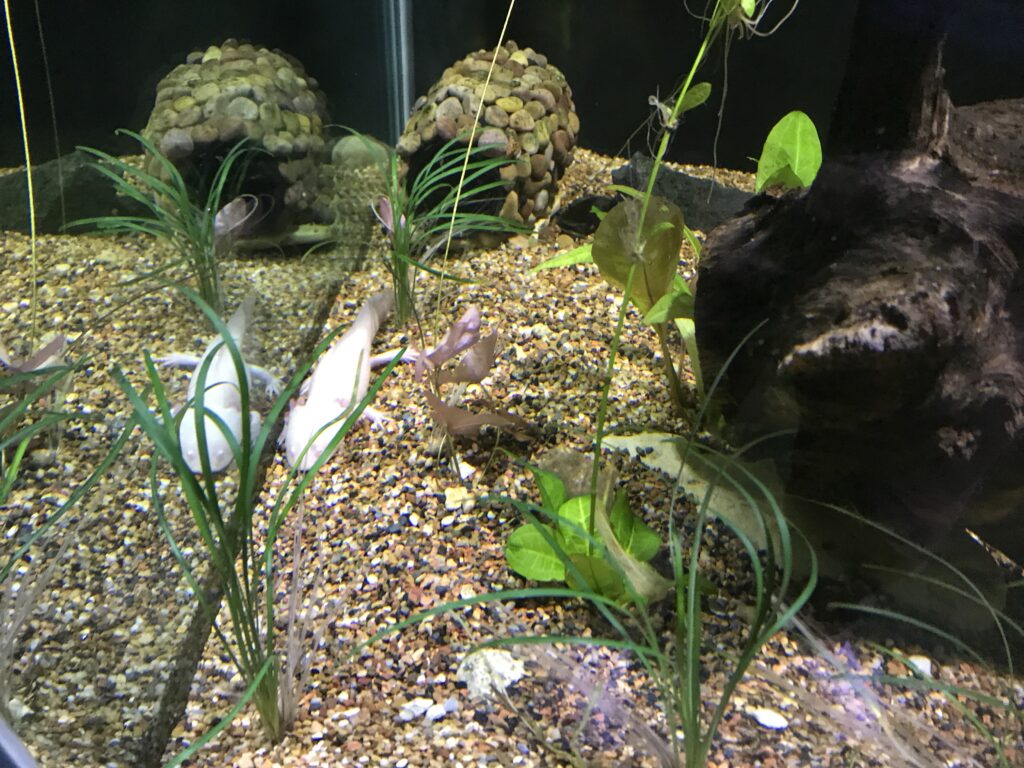
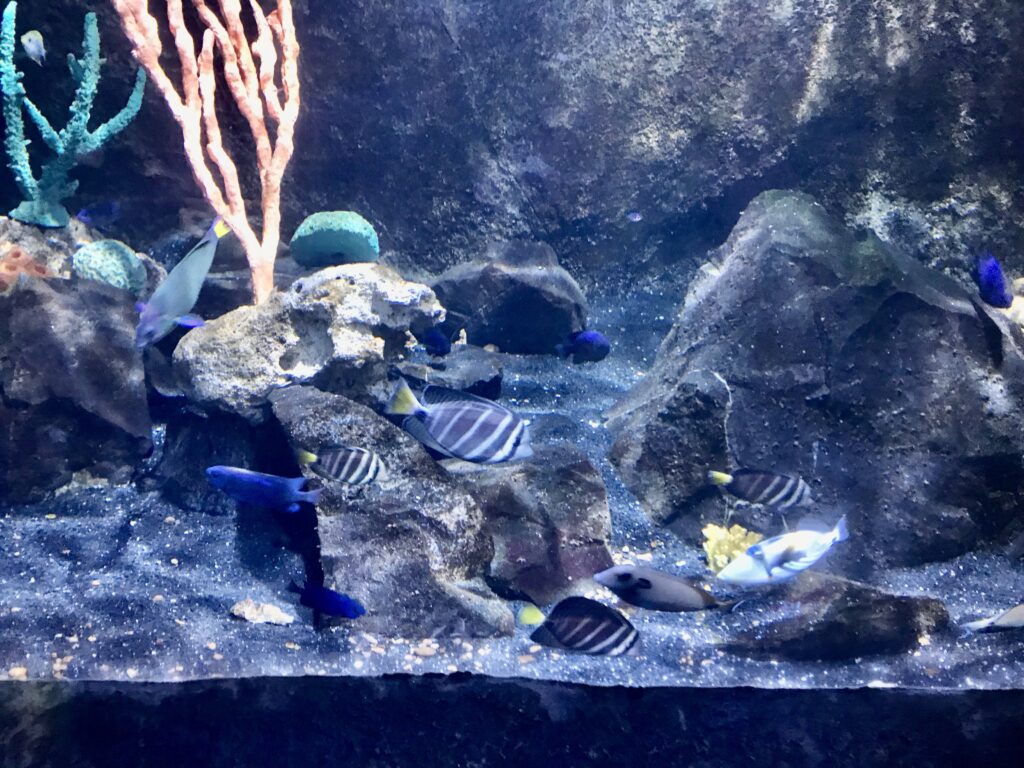
Barton Springs Pool is a three-acre recreational outdoor swimming pool located within Zilker Park in Austin, Texas. It is fed from underground springs, with an average temperature of 68-70 degrees Fahrenheit, making it ideal for year-round swimming.
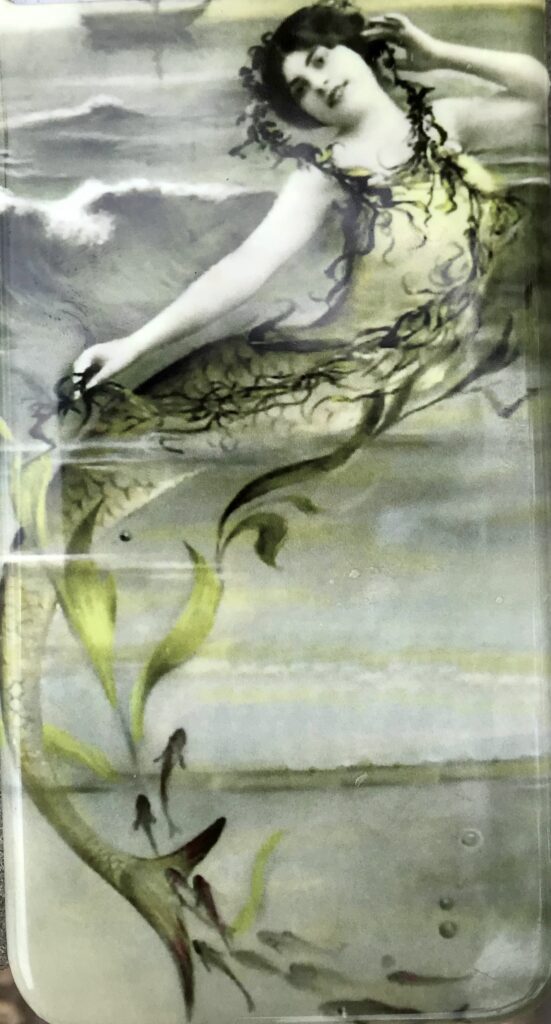
The pool is a popular venue for locals and visitors, offering a unique and refreshing swimming experience. It holds a unique role in Austin’s history and ecosystem, and it is a federally protected habitat that also serves as a beloved public swimming pool.
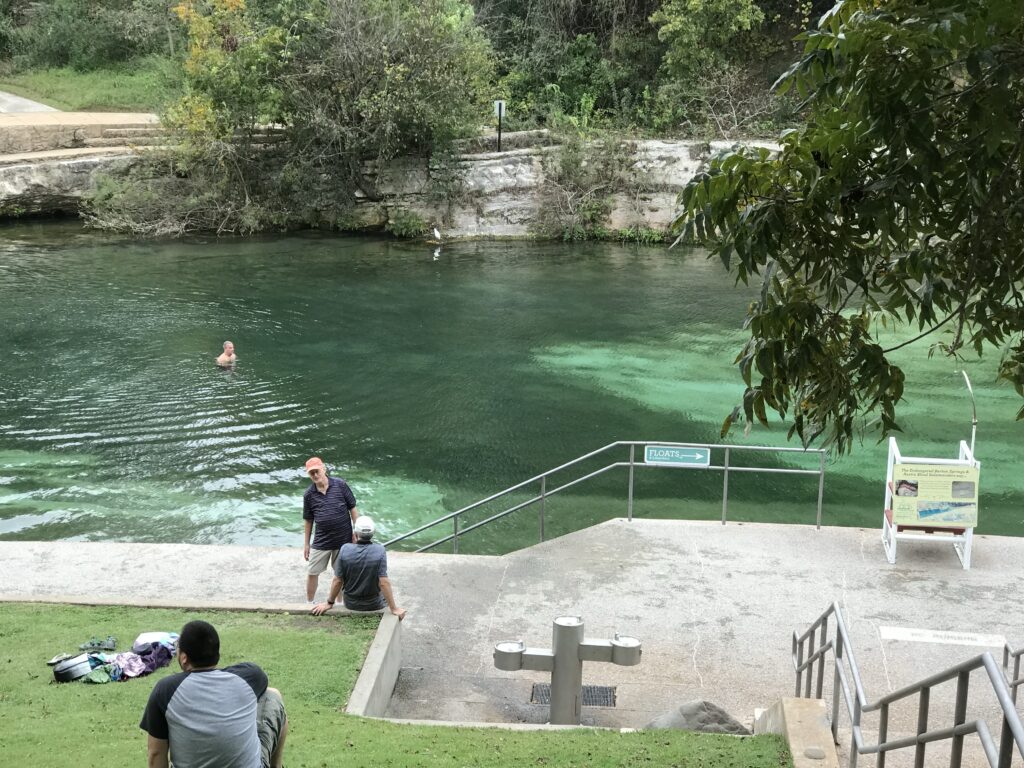
The pool charges admission from Spring Break through October 31, and at all other times, admission is free. The site also features an educational component, as the springs are home to the endangered Barton Springs salamander, which can’t be found anywhere else on earth1234.
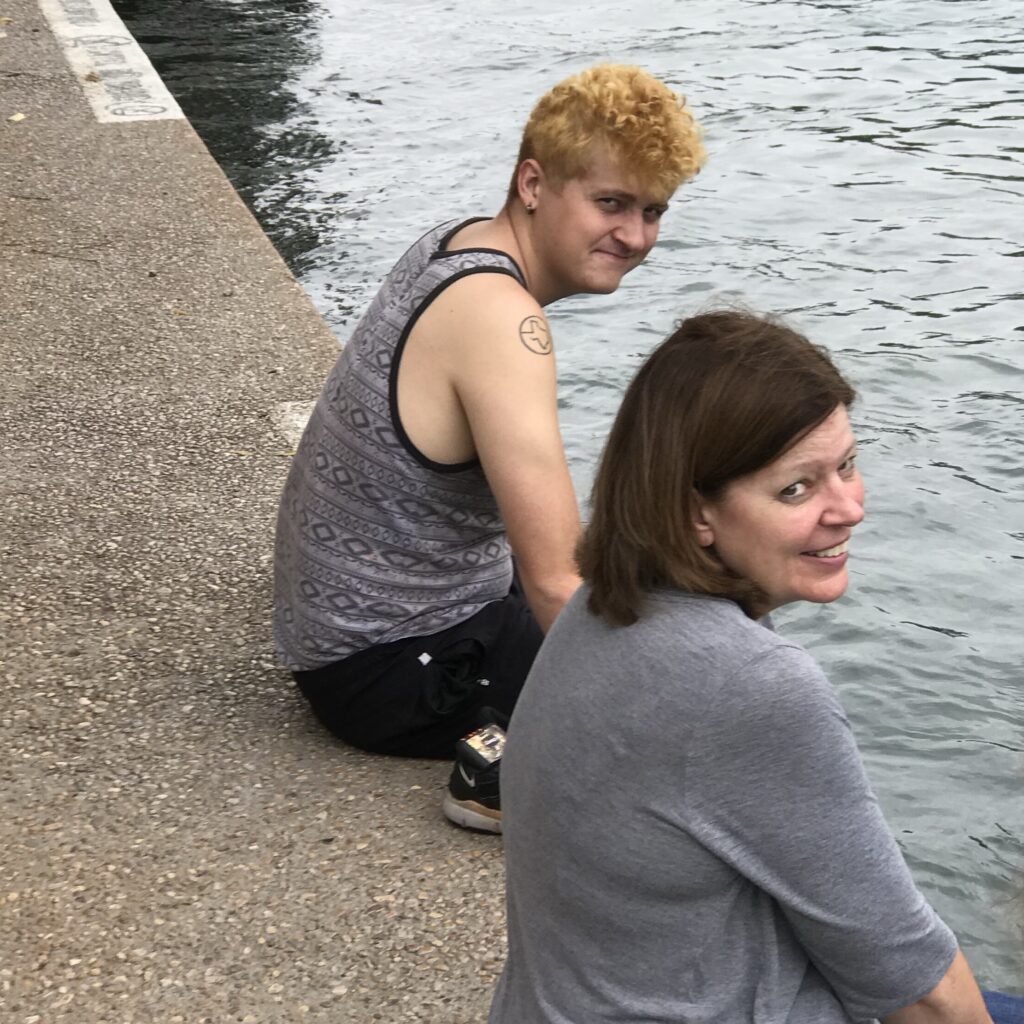
The pool’s history dates back thousands of years, with indigenous tribes such as the Tonkawa, Lipan Apache, Comanche, and Kiowa utilizing the springs. In 1917, Barton Springs was designated a city park, and over the years, it has undergone various developments, including the construction of dams and the creation of the pool. The pool is a popular venue for swimming and is filled entirely with water from Main Barton Spring, the fourth largest spring in Texas. Barton Springs Pool holds historical significance and is a beloved recreational site for both locals and visitors, offering a unique and refreshing swimming experience.
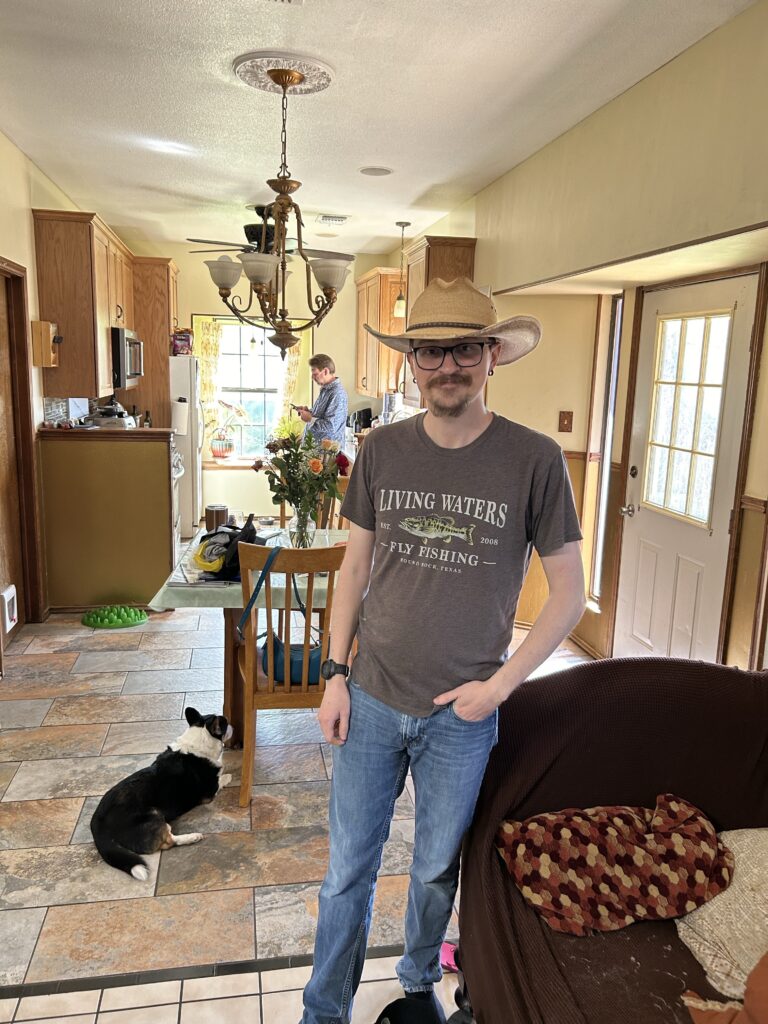
For a musician, Austin offers a vibrant live music scene, with numerous venues and events throughout the city. It is also home to the famous South by Southwest (SXSW) festival, which showcases a wide variety of musical talent. For an architect, the city’s diverse architecture, including modern and historic buildings, can be of interest. Birders can enjoy the diverse bird species at locations such as the Hornsby Bend Bird Observatory.
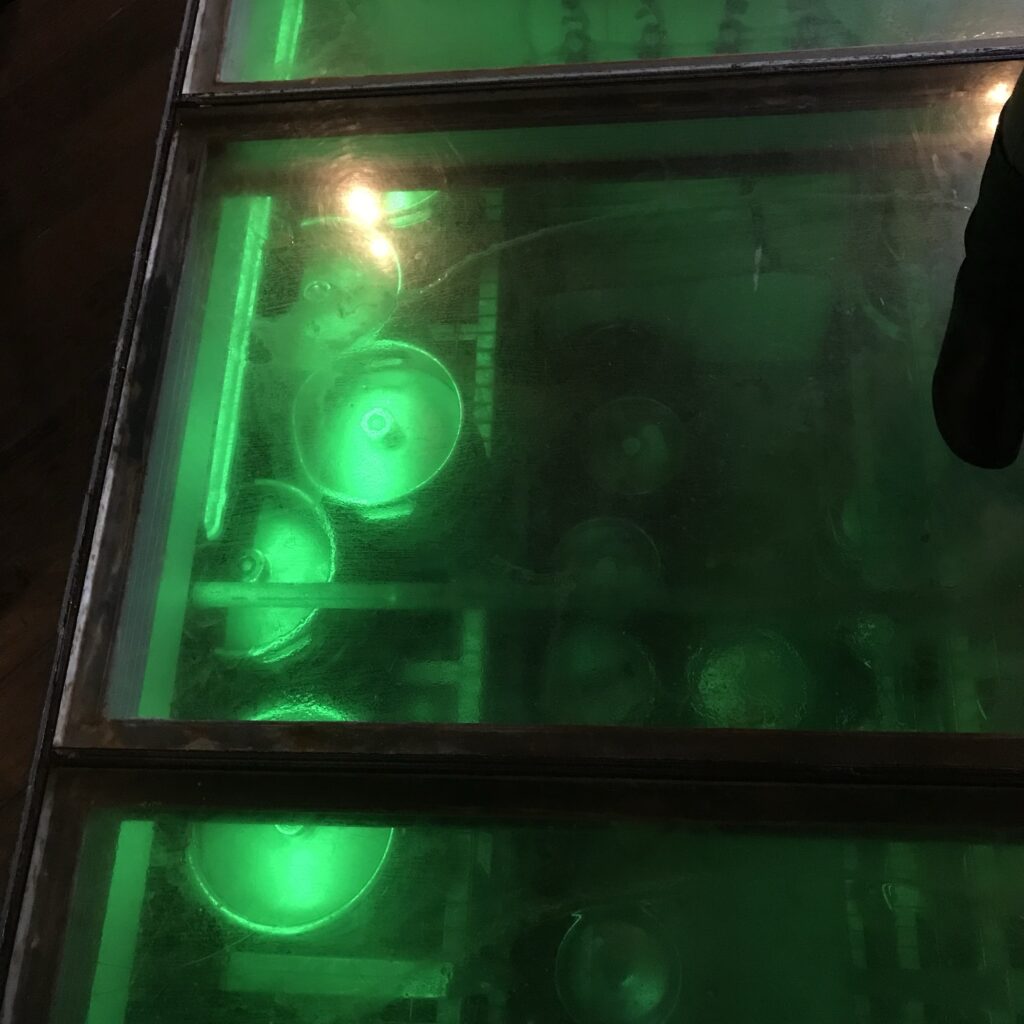

Beer drinkers can explore the local craft beer scene, and historians can visit sites such as the Texas State Capitol and the Bullock Texas State History Museum34.
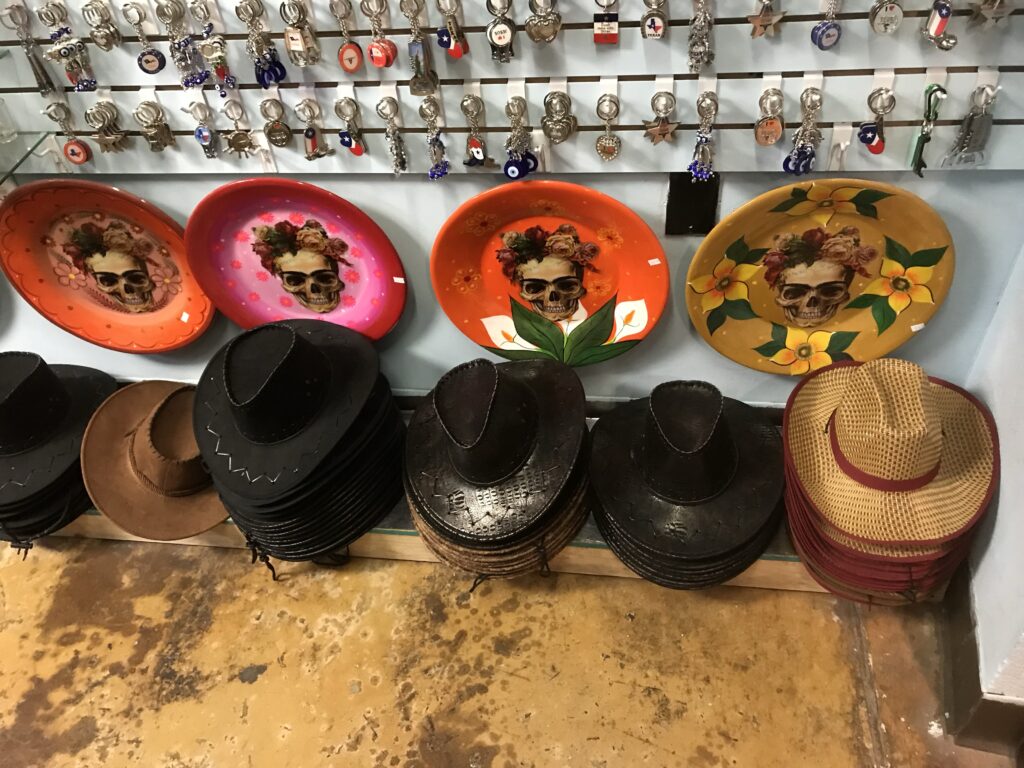
Día de los Muertos is an historically rich and festive Mexican tradition that integrates both pre-Columbian and Catholic customs. It was believed in Aztec culture that on these days the souls of the deceased would journey through Mictlan, the underworld, and back to earth to reunite with their loved ones.
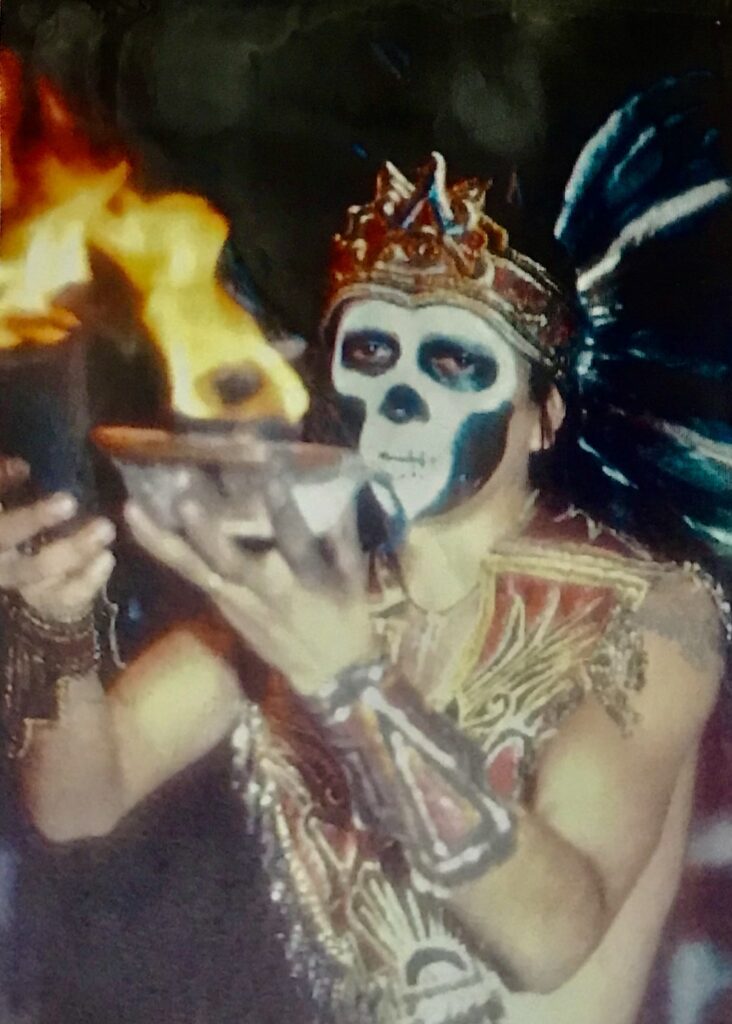
Today, families and friends come together to clean and adorn the gravesites of the departed, and build commemorative altars in their homes, churches, and gravesites.
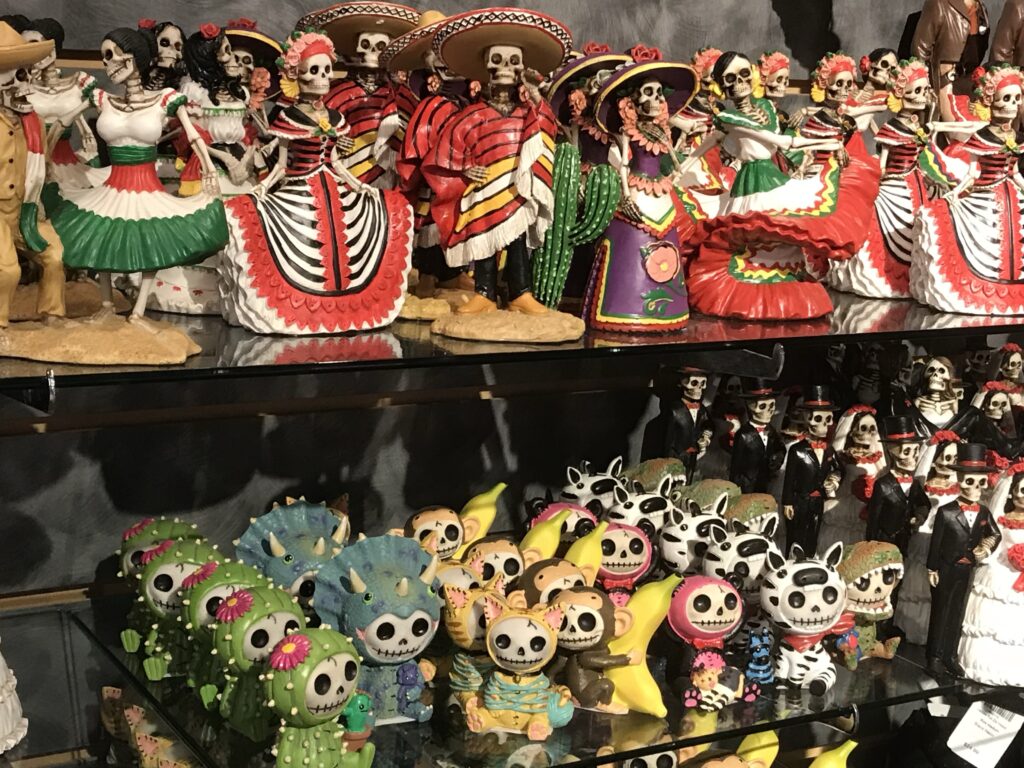
And For the past 34 years, Mexic-Arte Museum in Austin has encouraged communal sharing of what were once private expressions of faith. By inviting the Austin community to create their own ofrendas – mixing popular with traditional materials, sacred with secular objects, personal with social issues, and popular art with contemporary interpretations – the Museum serves as a platform for public and artistic expressions of this ancient tradition.
Day of the Dead altars, known as ofrendas or “offerings”, consist of a collection of objects offered to the deceased to draw their memory and spirit back to Earth. Altars vary in size from a small shelf or tabletop to multi-tiered installations that can take up an entire room. Levels of the altars provide a base for the object offerings and echo the shape of the Aztec pyramids, which correspond to the seven spiritual levels of the Aztec underworld, Mictlan.
OFRENDAS ARE PERSONALIZED BY THE FAMILY, CUSTOMIZED TO FIT THE FAMILY’S NEEDS AND REFLECT THE TRADITION OF THAT REGION OF MEXICO. THE FOLLOWING OBJECTS HAVE BEEN USED FOR CENTURIES AS SYMBOLIC OFFERINGS:
CANDLES represent the element of fire. They light the way for the deceased to find their path back to Earth. Candles are used in spiritual ceremonies in almost every religion, as they are a way to feel the spirit of the divine, create a wish or intention, and create light or positivity through darkness.
COPAL incense is traditionally used to bless the altar and create a sacred space. Copal is made from tree sap and its use dates back to Pre-Columbian times. The aroma is thought to attract the spirits.
BEVERAGES represent the element of water and are meant to quench the thirst of the departed after their long journey back to Earth. Families usually offer the favorite drinks of the deceased as well as traditional beverages from that person’s home state, such as tequila or mezcal.
FOOD represents the element of earth and feeds the deceased as they arrive hungry from their journey back to earth.

Pan de muerto, or “bread of the dead”, is baked only at this time of year and may be in the shape of a skeleton or bones. Families prepare the favorite dishes of the deceased like mole, or other dishes with corn, beans, and tamales.
CANDY is a popular food offering since it marks the sweetness of life and ties in to the celebratory nature of the holiday. The calaveras de azucar, or sugar skulls, are traditional candies molded into skulls and decorated with frosting. Children often give each other sugar skulls with their names written on the forehead.
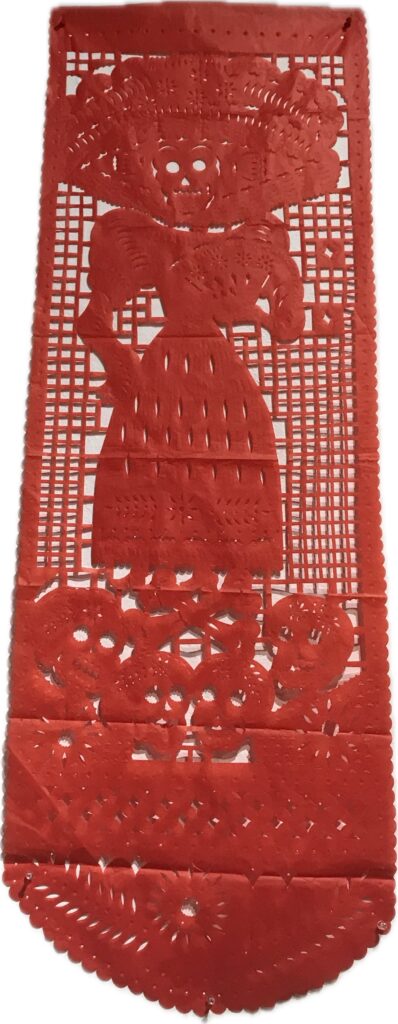
PAPEL PICADO are decorative paper banners that are an integral part of the altars. The fluttering tissue-paper cut-outs move with the slightest breeze, representing the element of air or wind. They are made with a chisel that cuts through several layers of paper at a time and hung on the altar to create decorations that remind the viewer of the impermanence of life, highlighting the fragility of the tissue paper, which will eventually disintegrate with time.
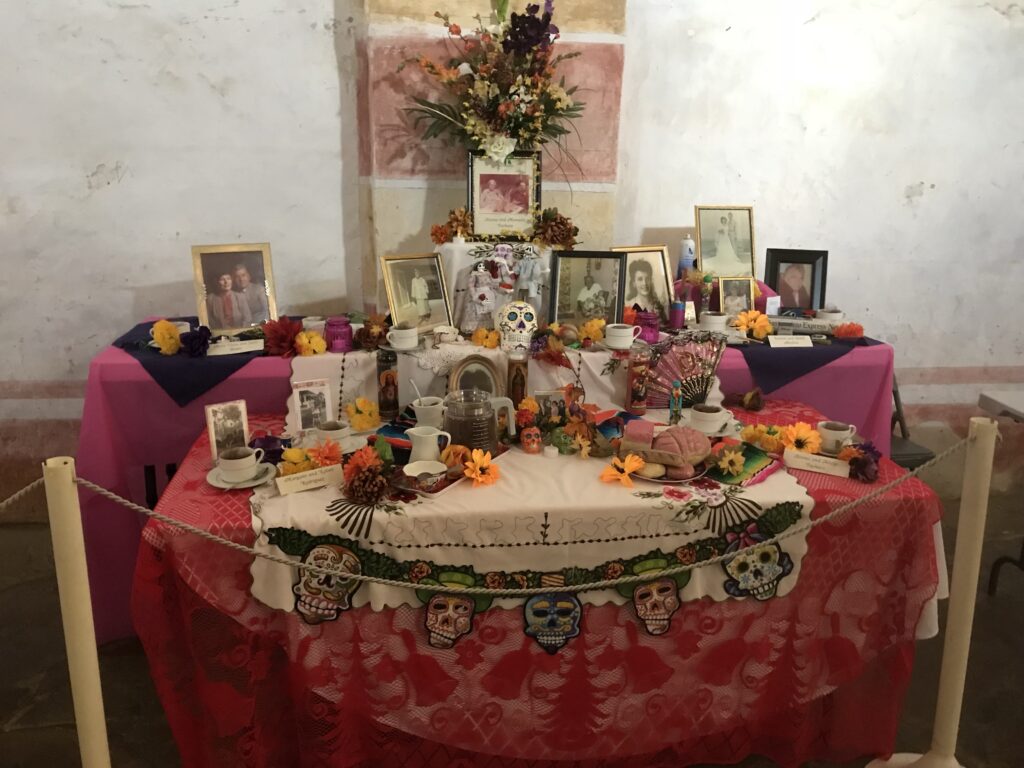
FLOWERS are another beautiful reminder of impermanence. They also represent love and the cycle of life and death as they grow, die, decompose, and give nourishment to new life. The cempasuchitl (marigold flower) is the official flower of the dead since its pungent scent and bright gold color draw souls to the altar. Its shape and color are symbolic of the sun that gives energy to all life.
CLOTH covers each altar and provides a base for the ofrendas. Handmade cloth is often a family heirloom, with traditional colors and embroidery particular to that family or region.
PHOTOS AND OTHER MOMENTS personalize the altar and let the deceased play with items they once treasured during their life on Earth. Photos of the deceased, musical instruments, toys, watches, glasses, or other objects give the dead a cheerful reminder of their time on Earth and provide entertainment during their visit. A bowl of water, mirror, or comb may be provided for the deceased to fix themselves up after making the long journey home. A petate, or woven mat, provides a warm welcome and place for the dead to rest.
.
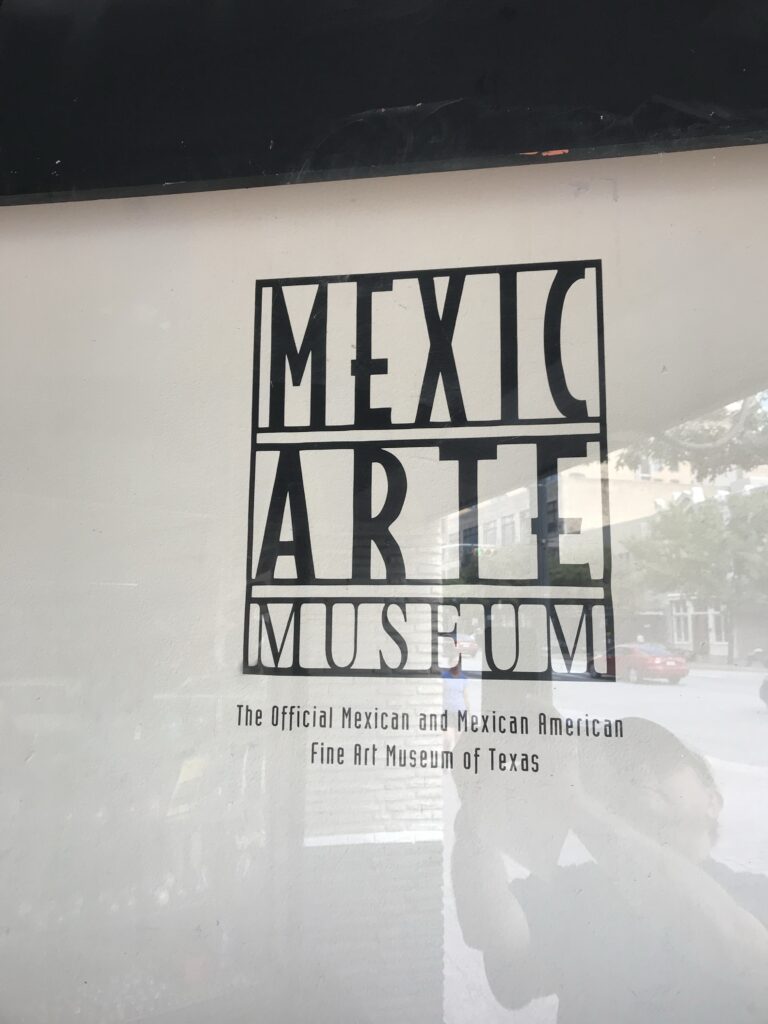
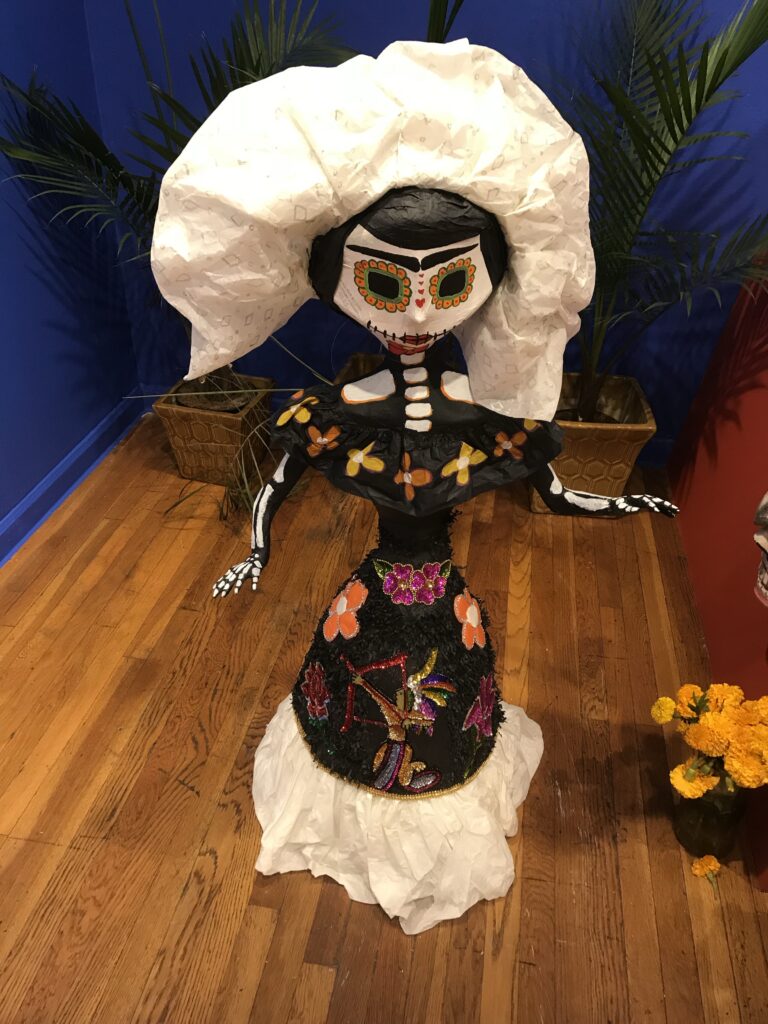
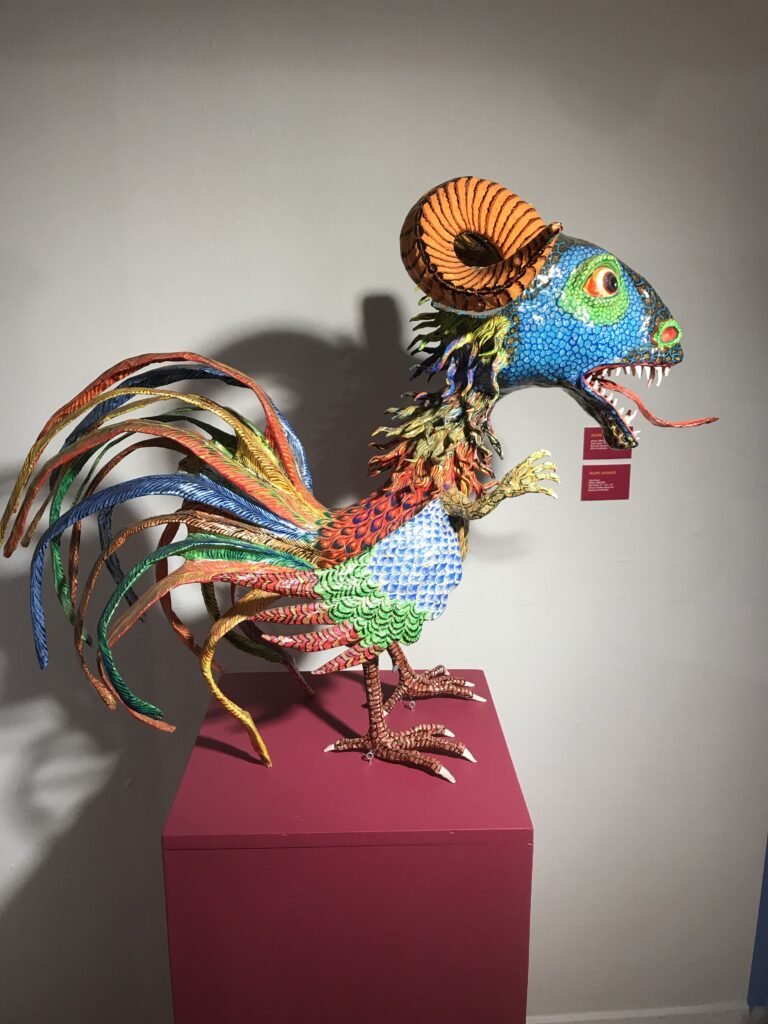
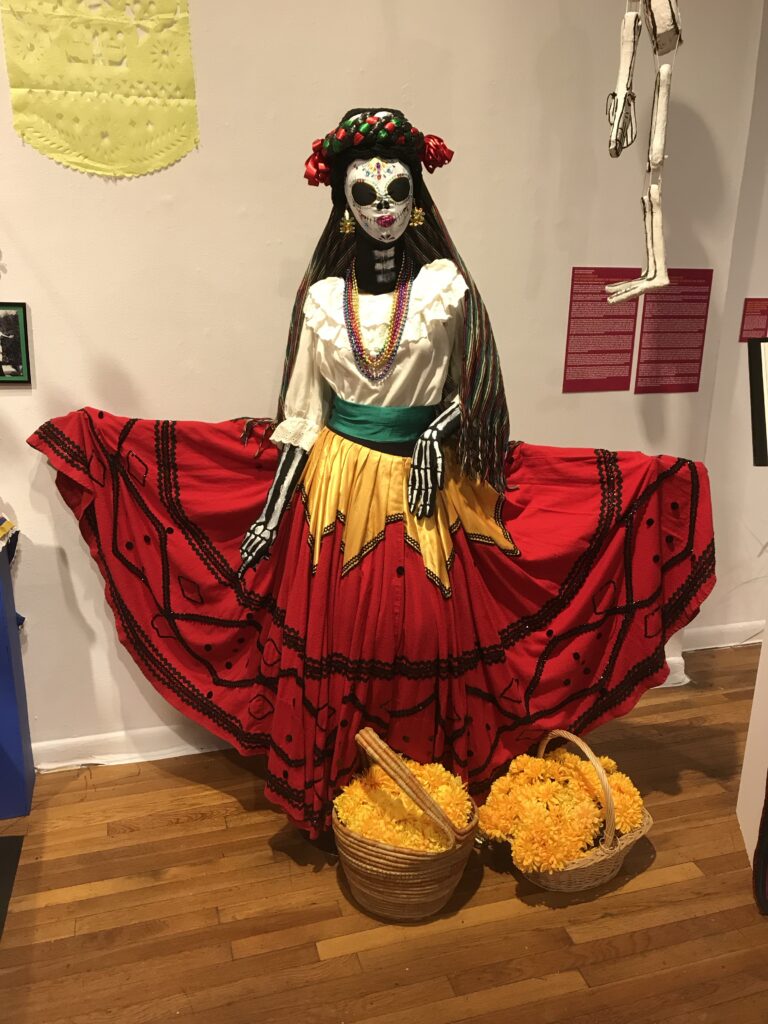
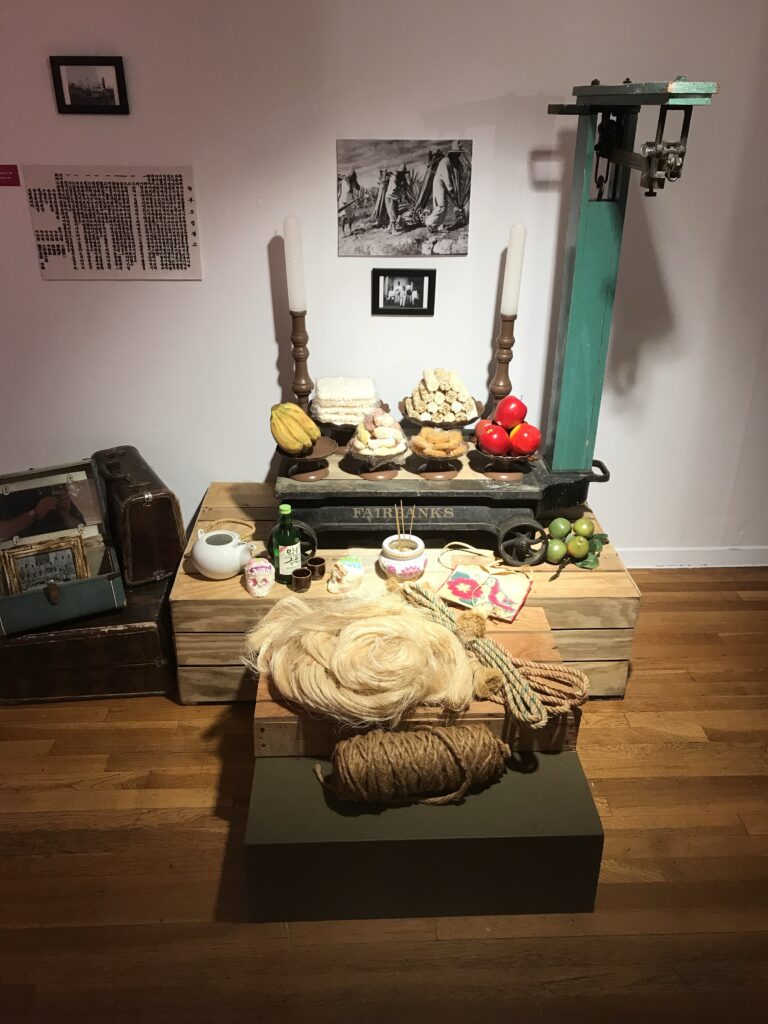
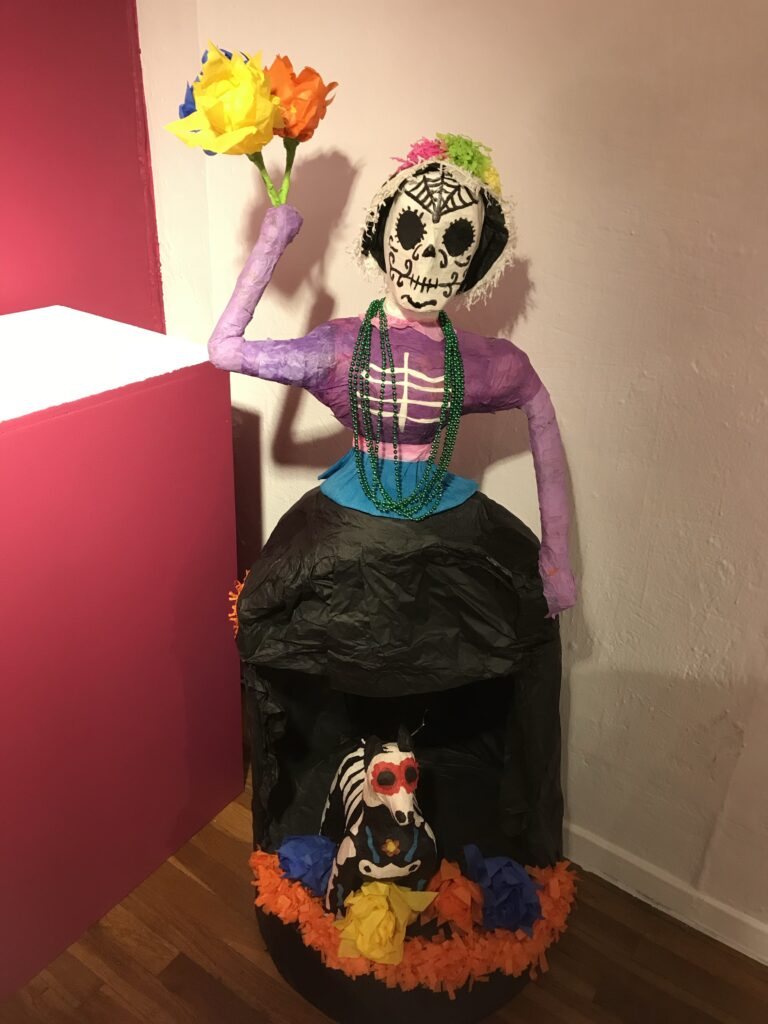
San Antonio
Additionally, San Antonio offers various eclipse experiences, and there are specific areas, such as the city’s northwest side, that are ideal for viewing the eclipse5. Therefore, San Antonio is a favorable location to tour and see the 2024 solar eclipse.
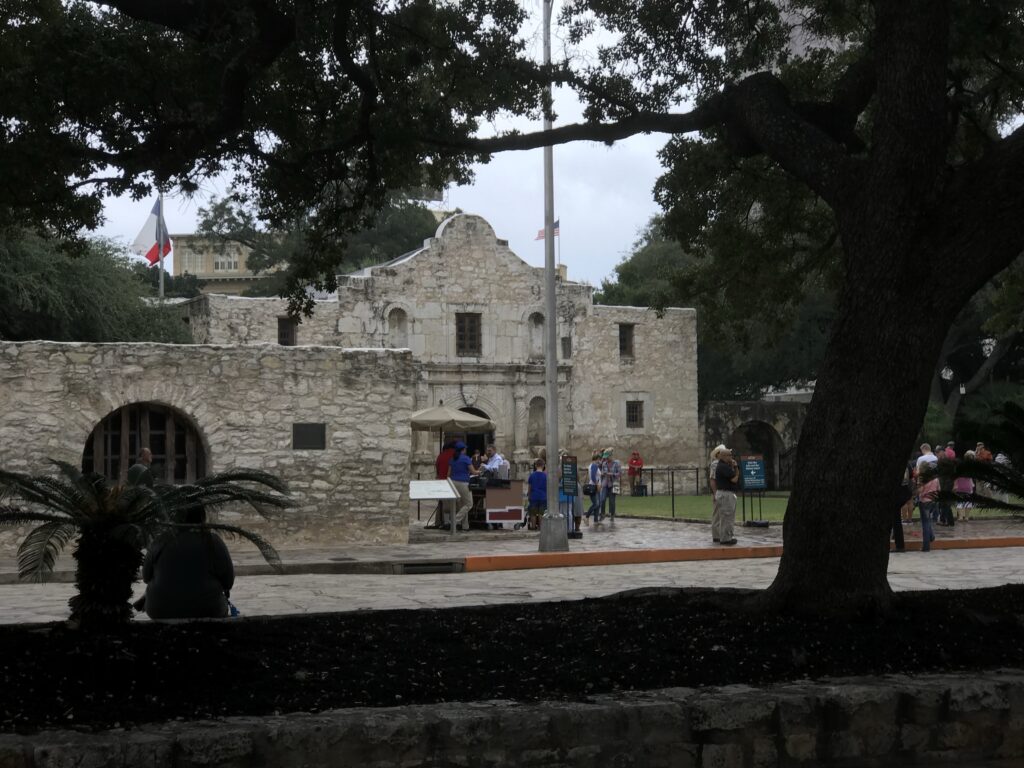
San Antonio is a good place to view the total solar eclipse on April 8, 2024. The city will be in the direct viewing path for the total solar eclipse, with peak viewing around 1:34 p.m. CDT34. The Alamo is a recommended location for eclipse viewing, as it will be in the direct viewing path for the event4.
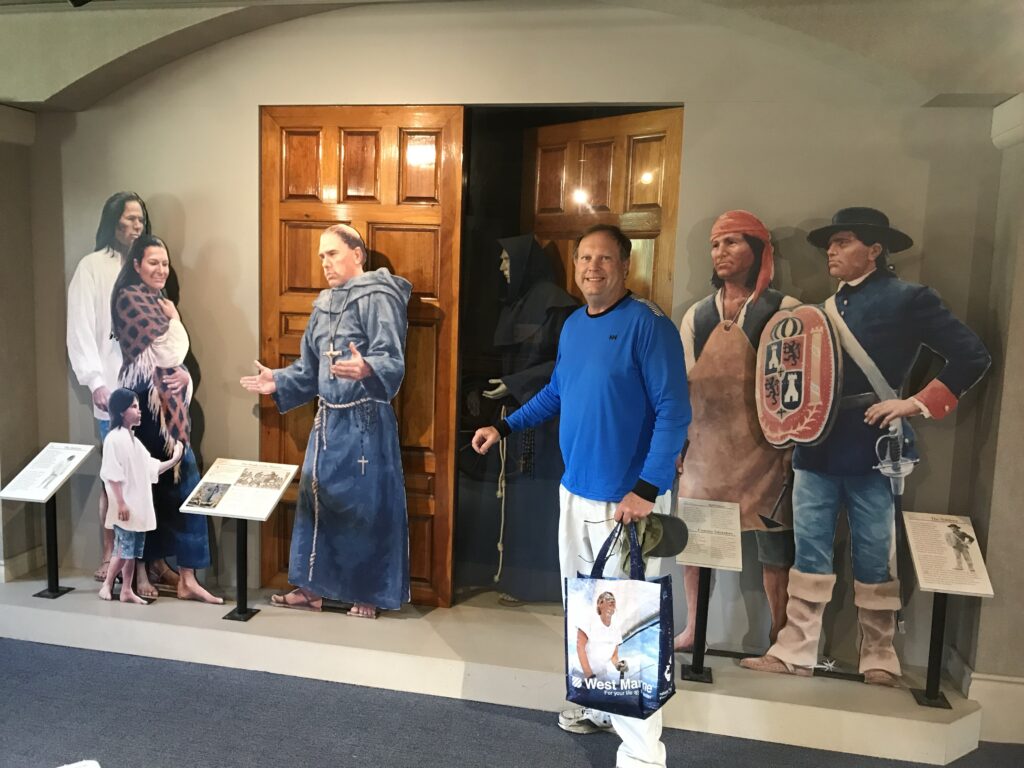
San Antonio offers a variety of attractions for tourists, including:
- San Antonio River Walk: A scenic network of walkways along the banks of the San Antonio River, lined with shops, restaurants, and entertainment venues34.
- The Alamo: A historic mission and fortress compound, known for its pivotal role in the Texas Revolution14.
- Natural Bridge Caverns: An underground cave system and a popular tourist destination for spelunking and guided tours1.
- San Antonio Missions National Historical Park: A UNESCO World Heritage Site featuring four 18th-century Spanish missions, including Mission San Jose34.
- Six Flags Fiesta Texas: An amusement park with thrill rides, family-friendly attractions, and live entertainment3.
- Tower of the Americas: A 750-foot-tall observation tower with a restaurant and an observation deck offering panoramic views of the city3.
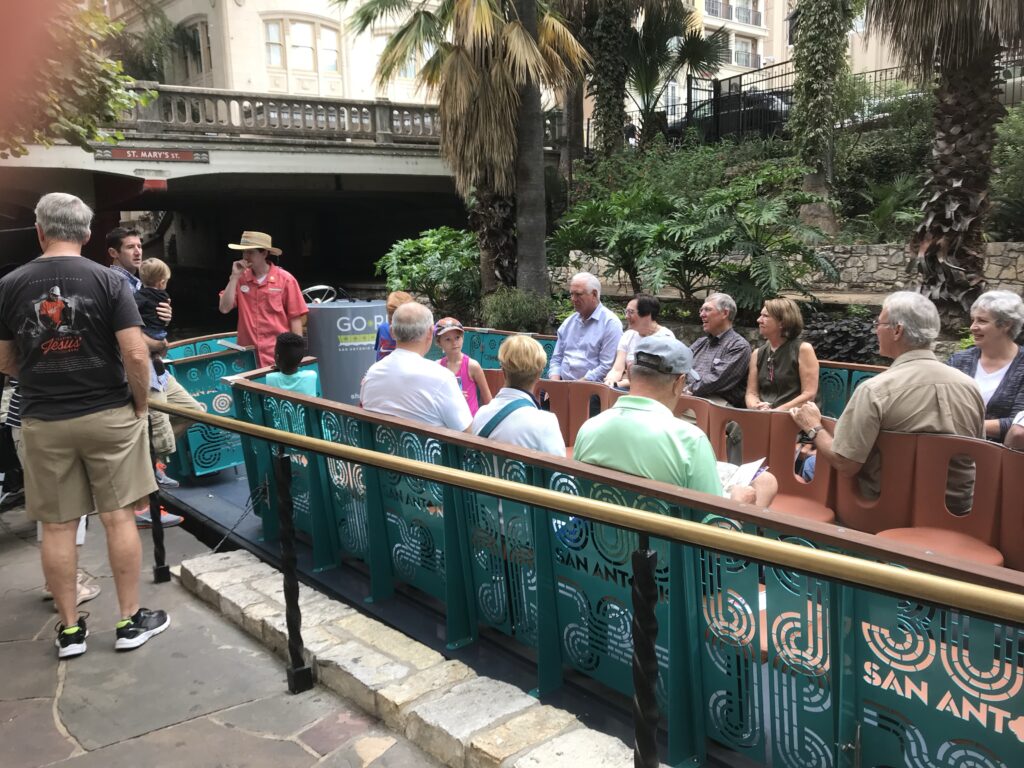
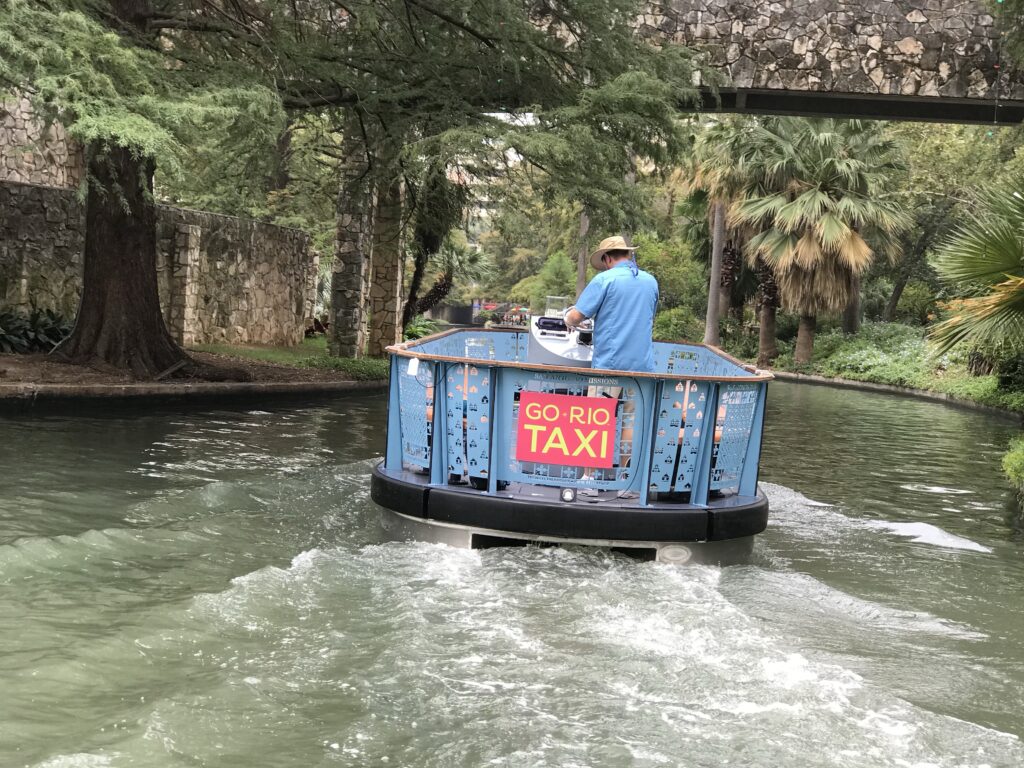
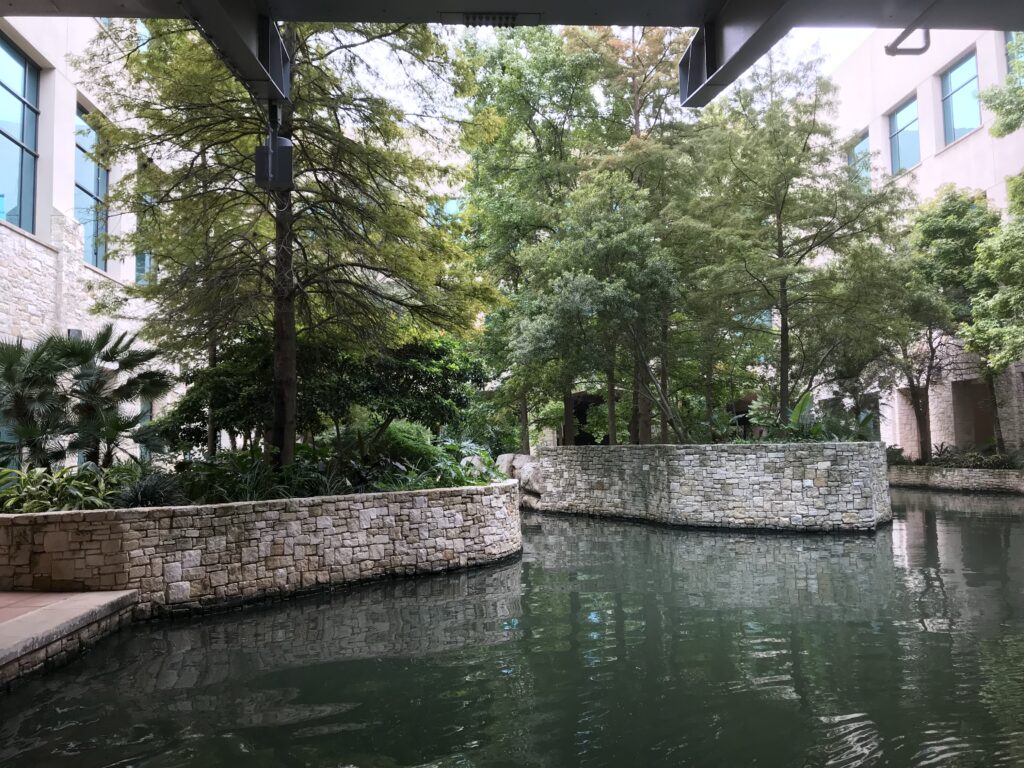
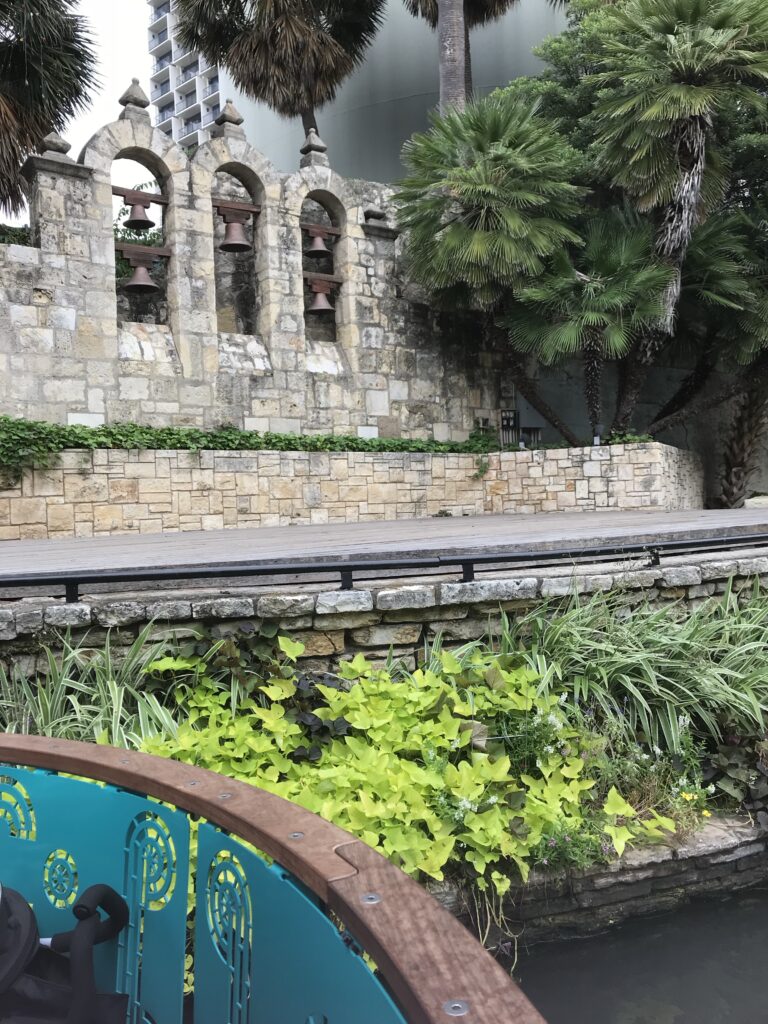
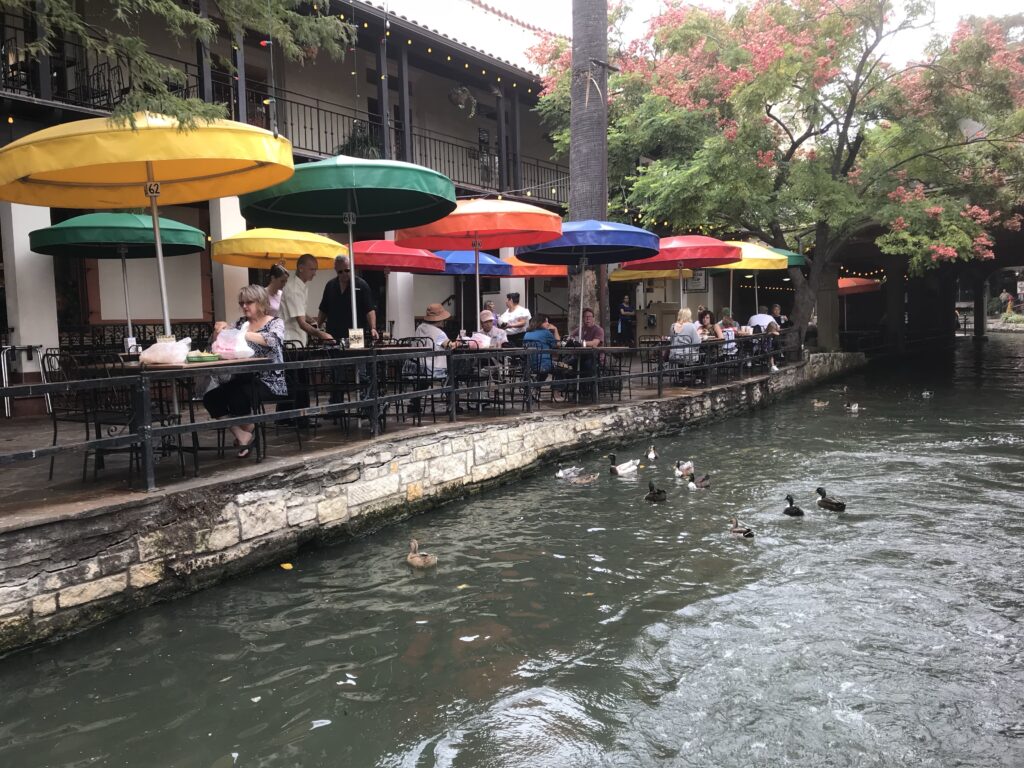
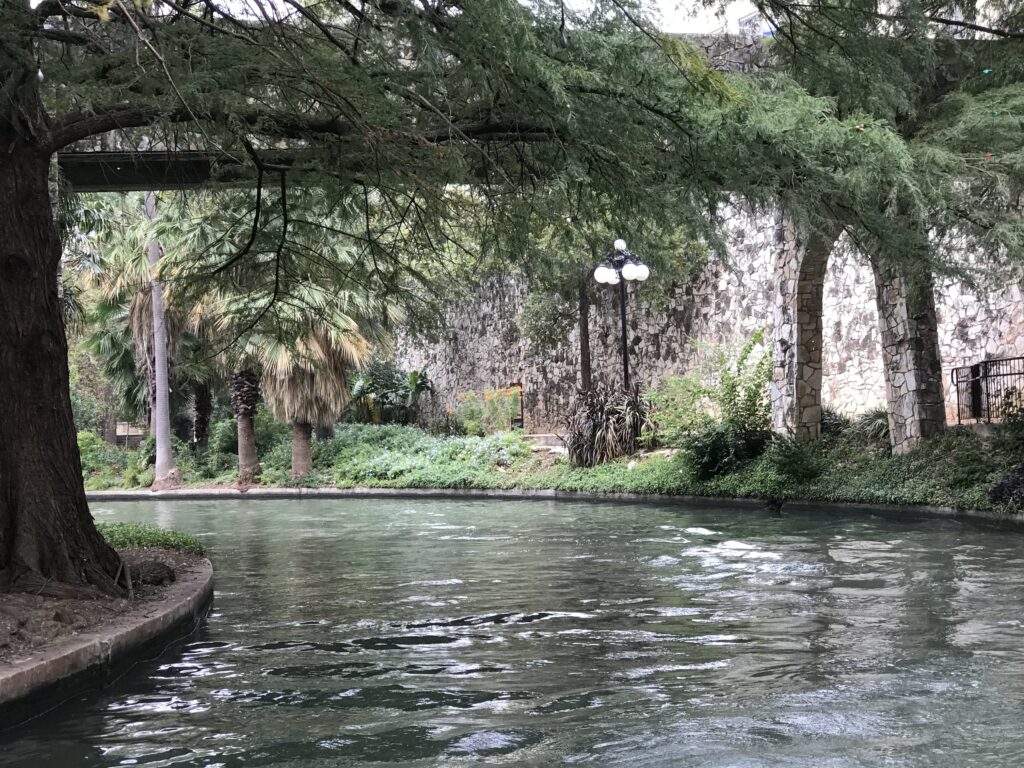
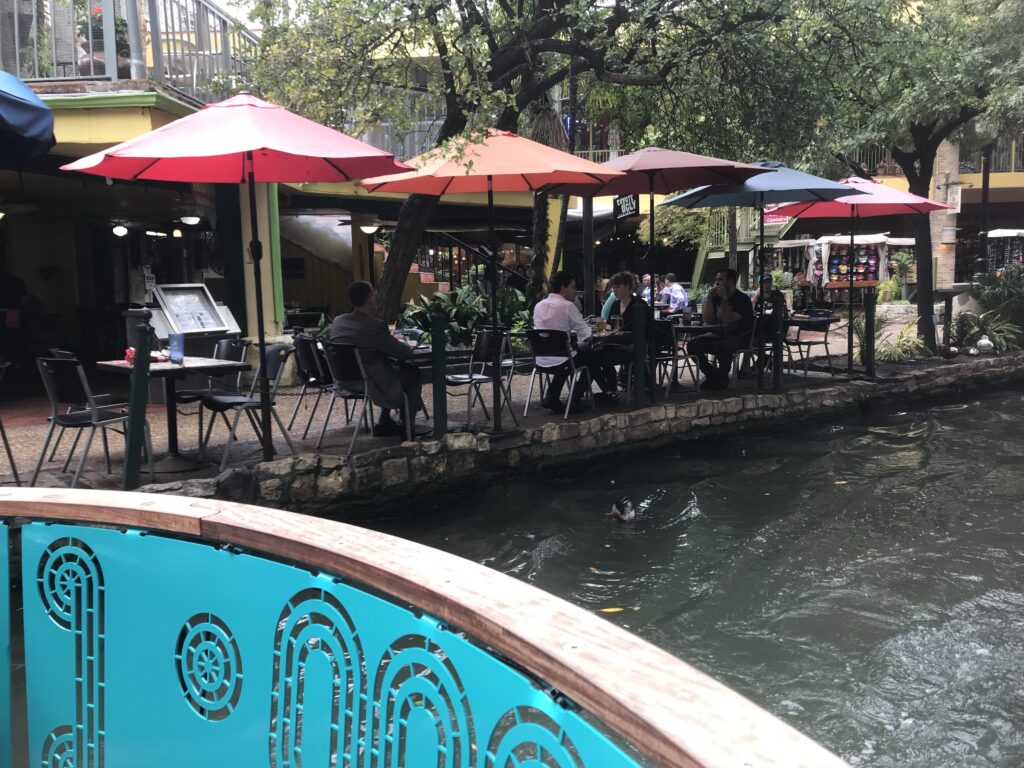
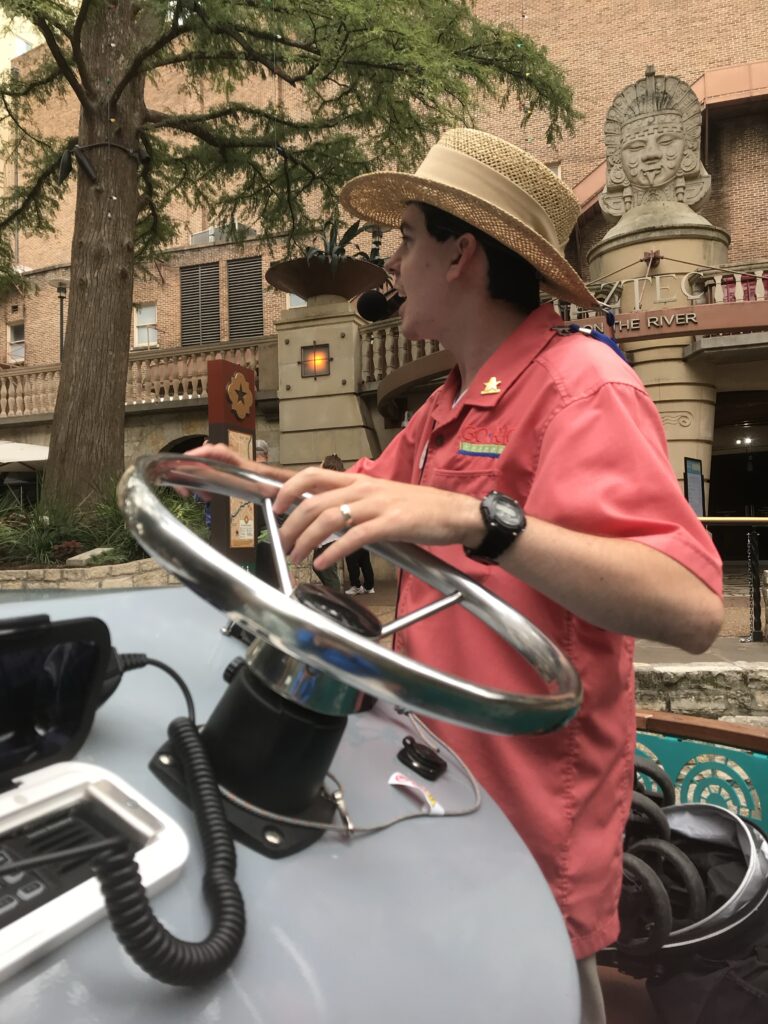
In addition to these attractions, visitors can enjoy the city’s vibrant cultural scene, diverse dining options, and nearby outdoor activities such as the Mission Trail and the McNay Art Museum2. San Antonio offers a blend of history, culture, and entertainment, making it a popular destination for tourists.
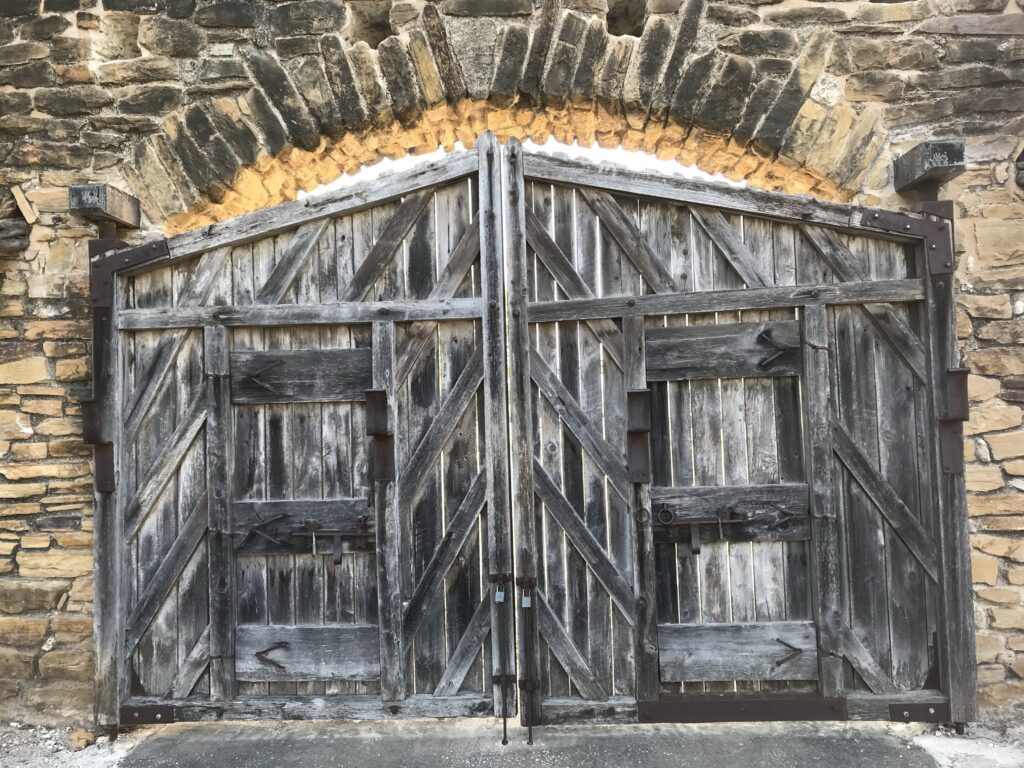
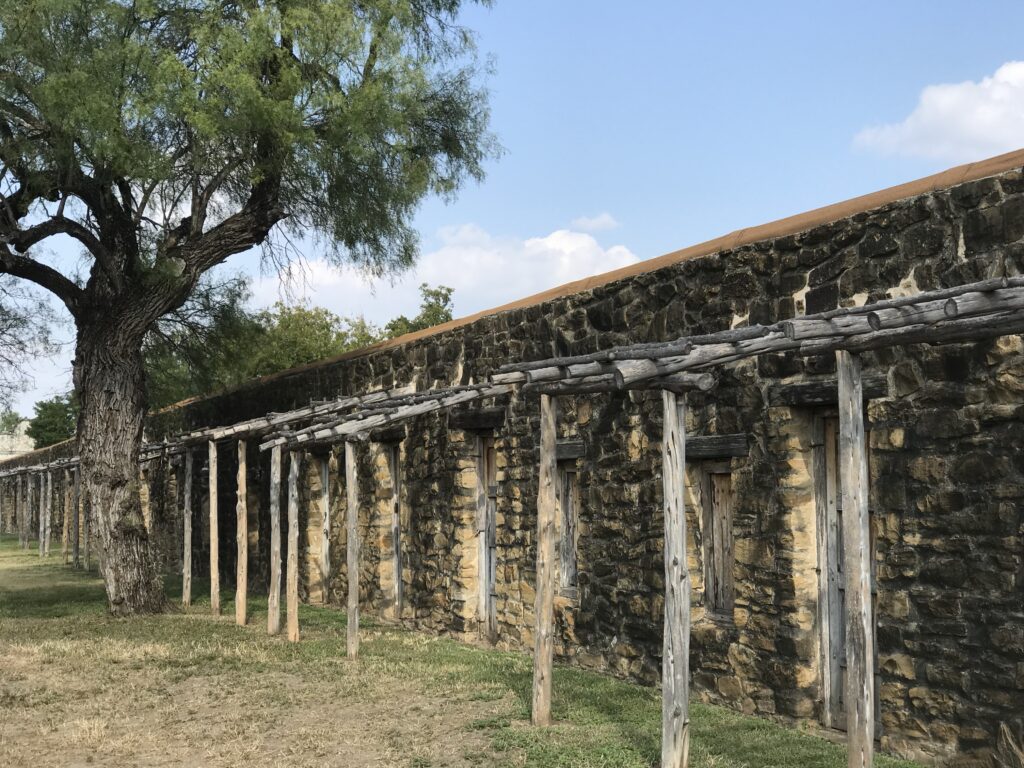
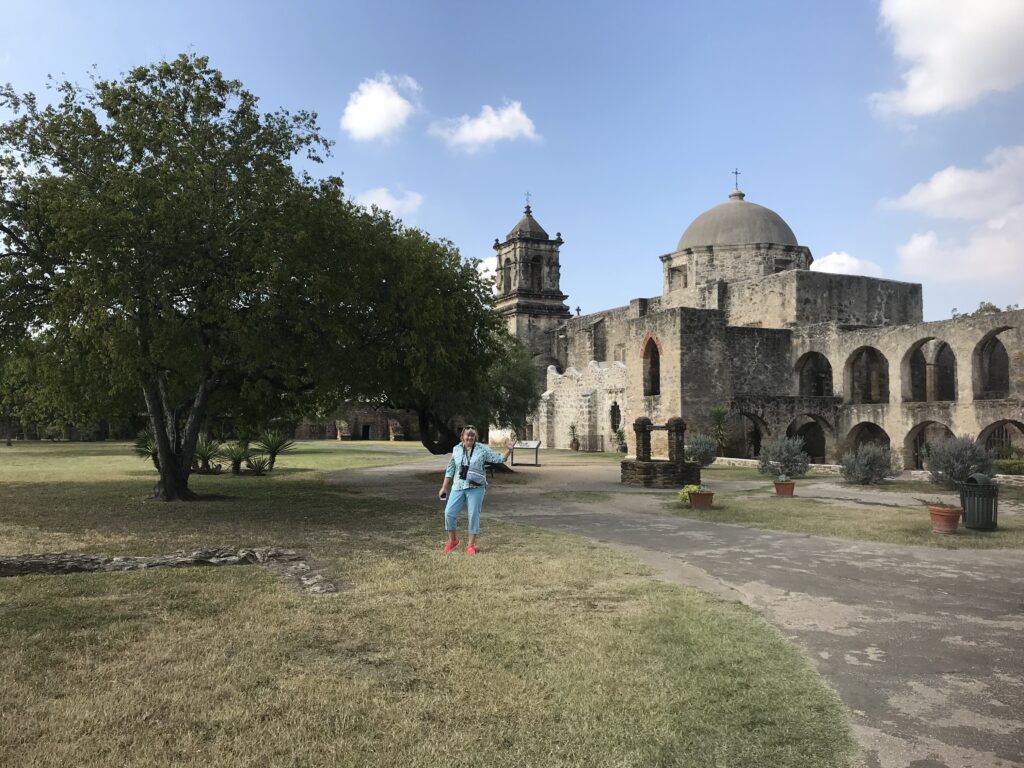
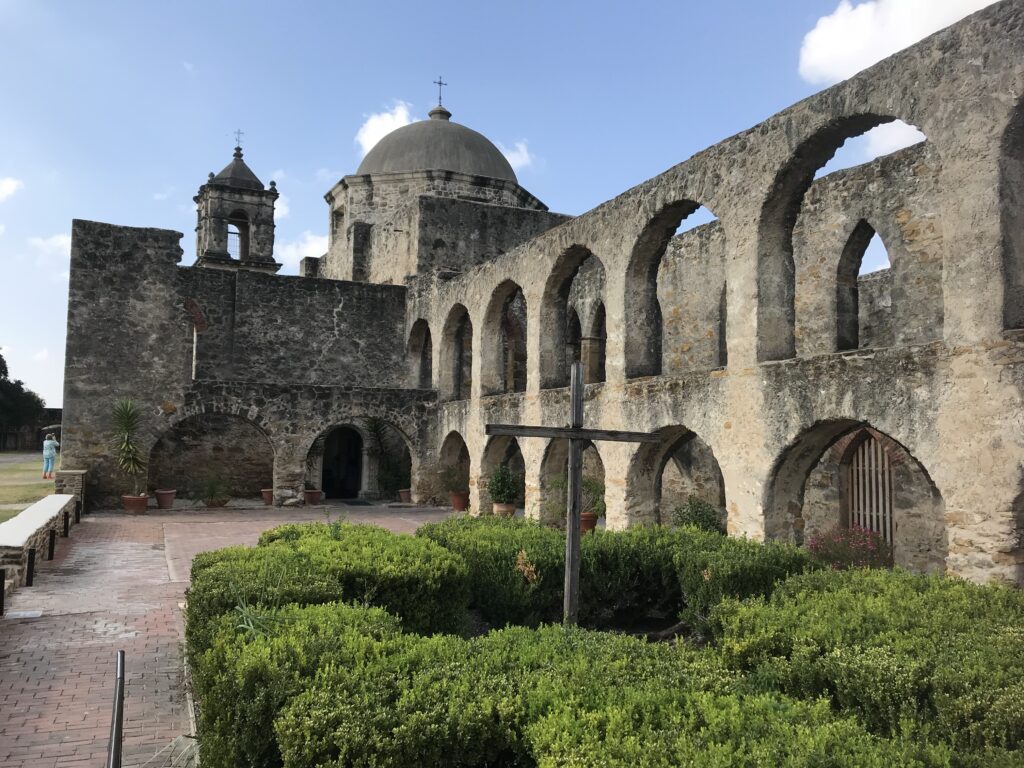
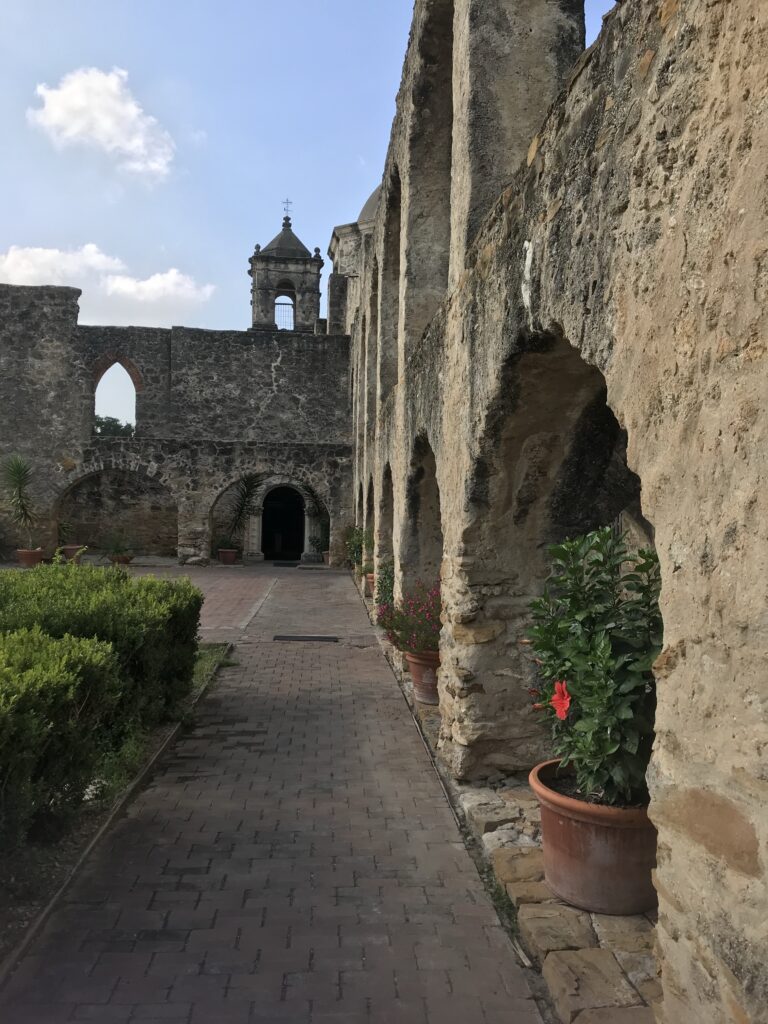
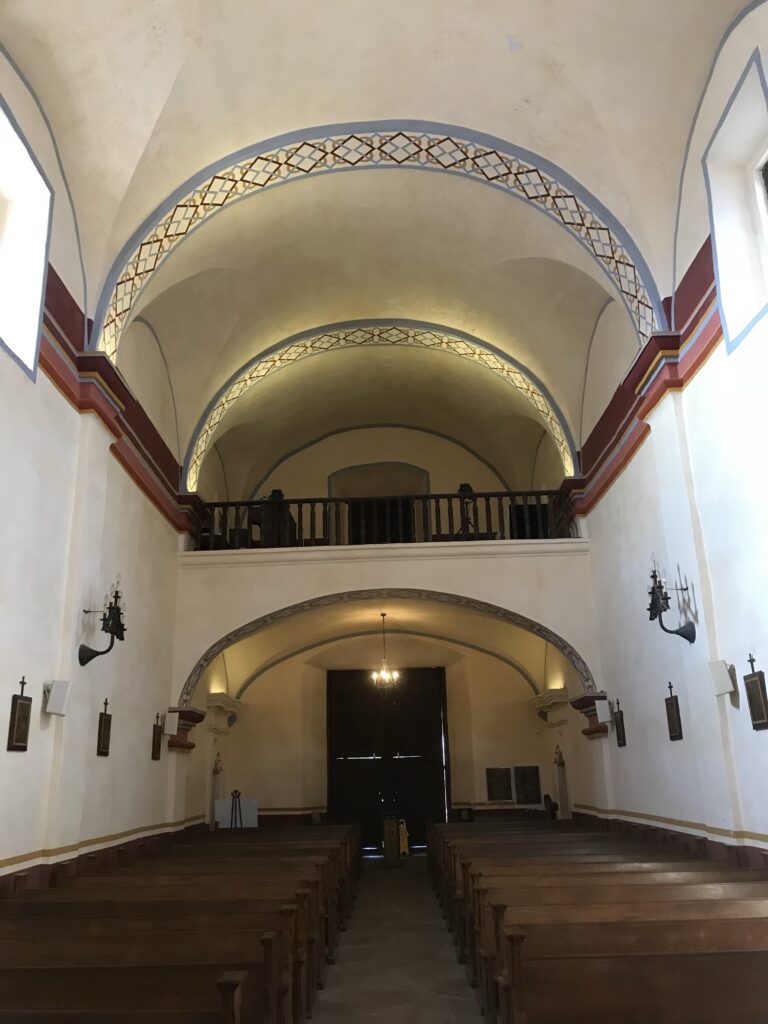
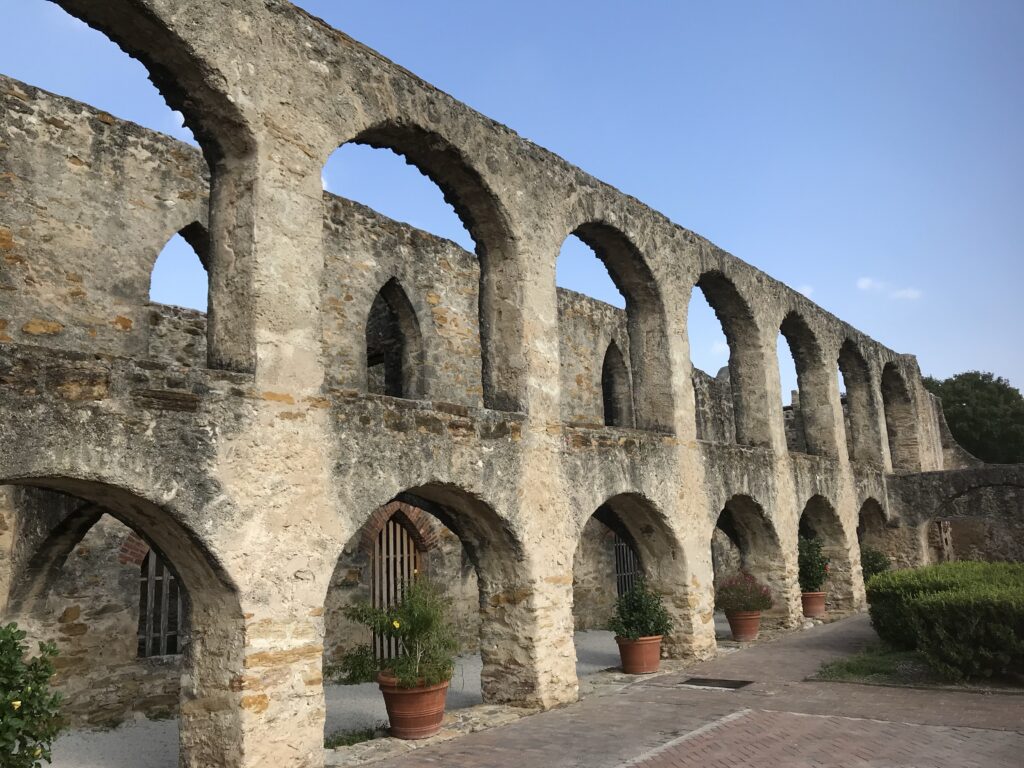
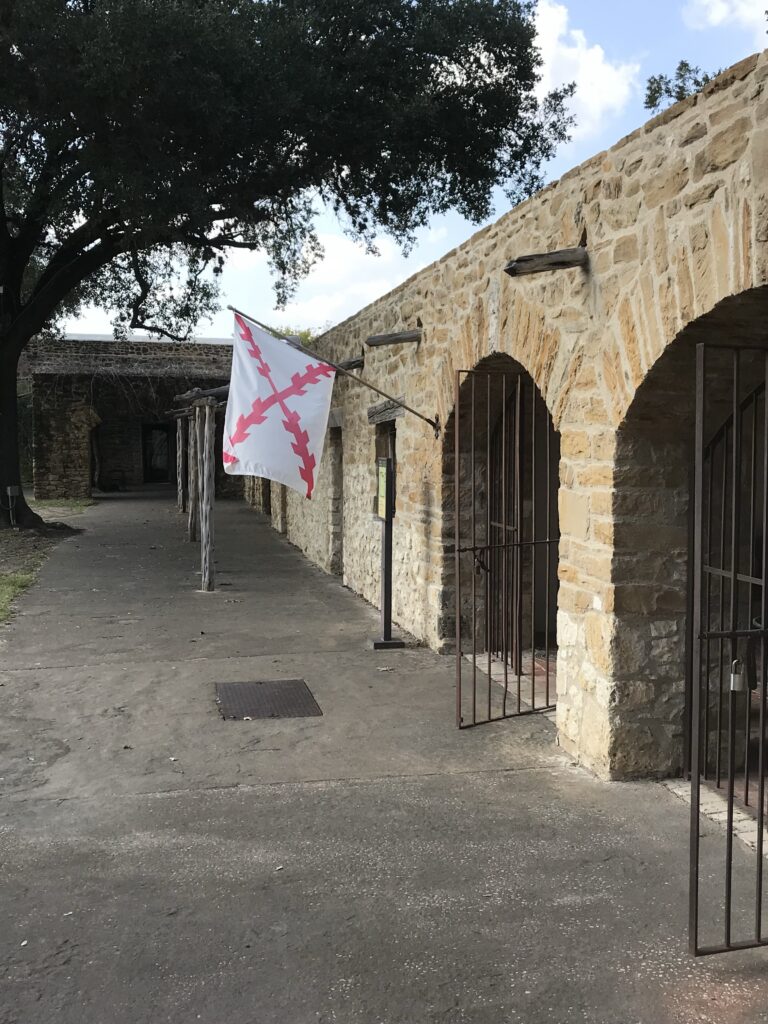
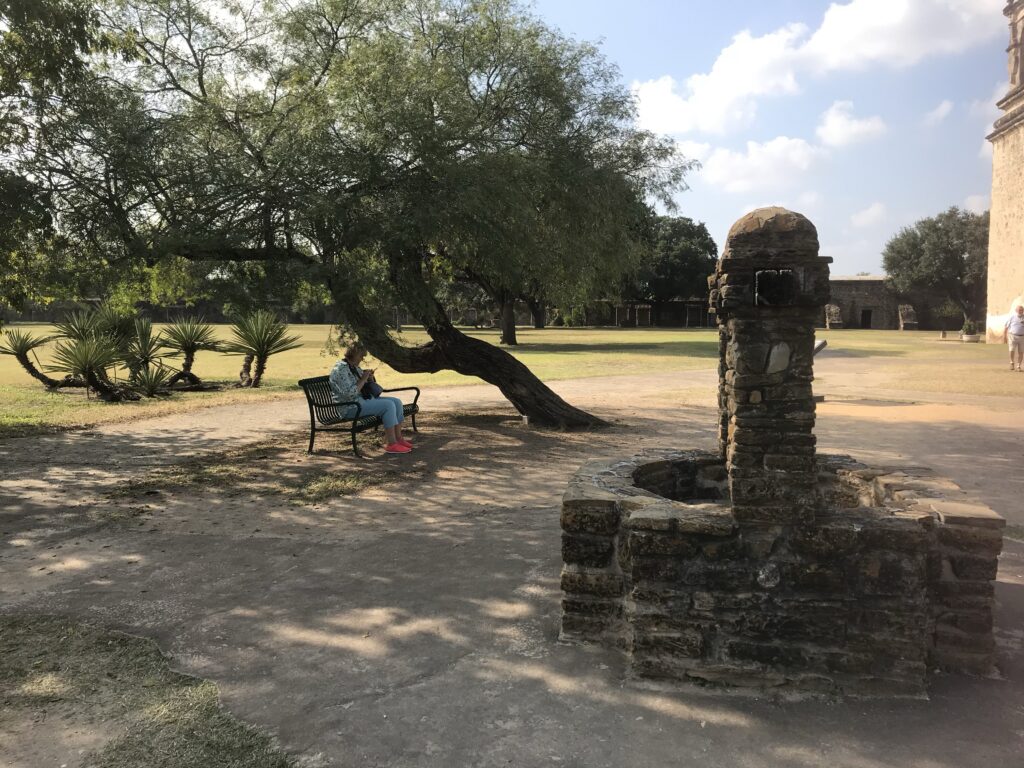
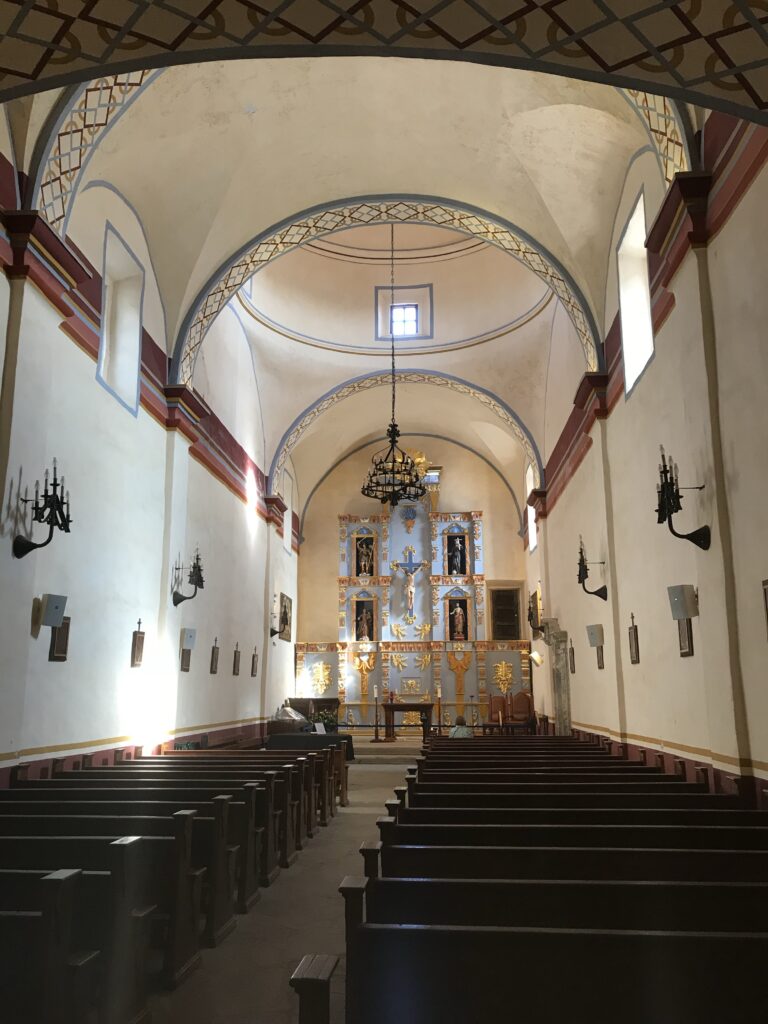
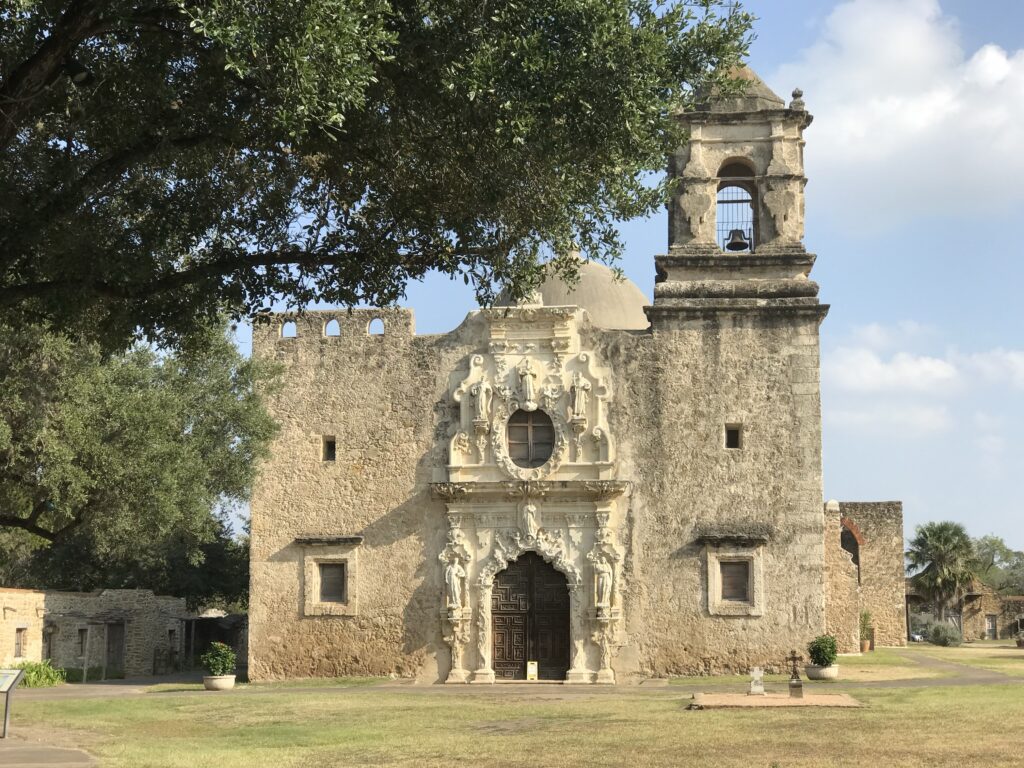
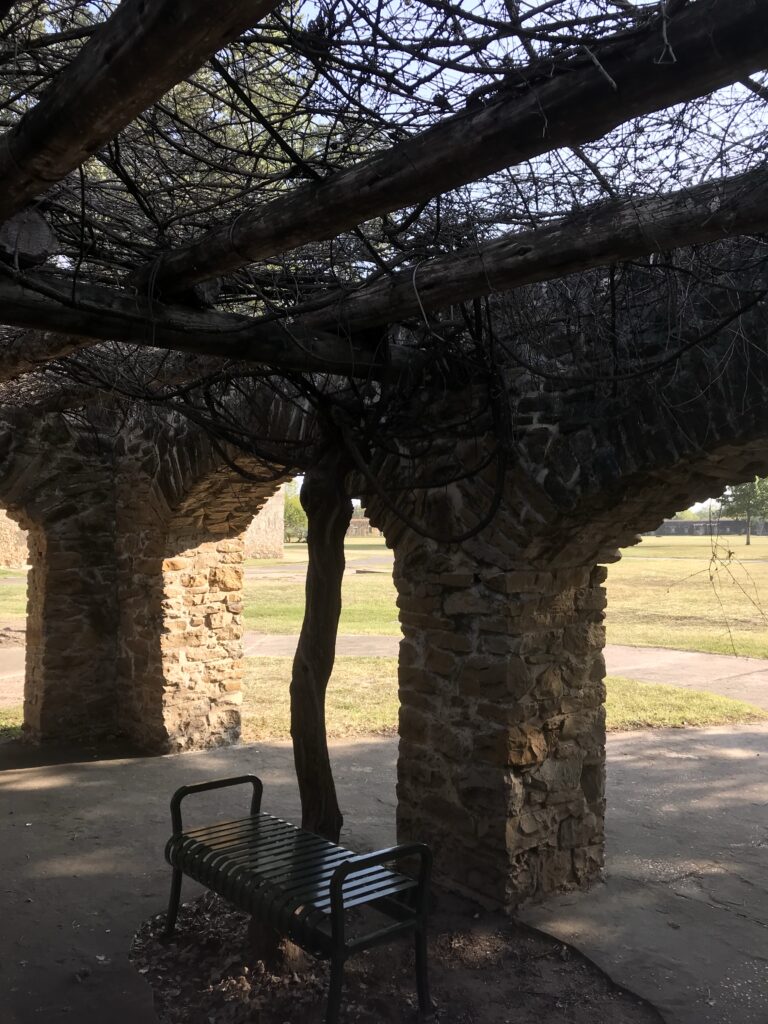
El Paso
El Paso is not in the path of totality for the 2024 solar eclipse, so it is not an ideal location to see the total eclipse. However, El Paso is noteworthy for national park enthusiasts, as it is in close proximity to several remarkable national parks. These include Big Bend National Park, Guadalupe Mountains National Park, and Carlsbad Caverns National Park, all of which offer diverse and stunning natural landscapes, making El Paso a great base for exploring these outdoor treasures34.Additionally, El Paso itself offers a variety of attractions and activities, such as the Scenic Drive Overlook, Hueco Tanks State Historic Site, and Franklin Mountains State Park, making it a compelling destination for nature and outdoor enthusiasts25.
Garcia-Grewell, the Eagle Pass resident, recalled to the Beastthat she was told the city spent roughly $3.5 million on the festival, yet sold only 2,500 tickets. She further elaborated that the city would have had to sell tickets at $1,400 apiece just to break even when accounting for the total cost.
The 57 South Music Festival kicked off Friday afternoon, though crowds were sparse. Local music producer Tony Rodriguez said that he counted just 30 people at 4 PM local time, and only 150 people by 6 o’clock.
“The worst flop ever,” he said.
‘The worst flop ever’: How Texas’ MAGA governor ruined Eagle Pass’ solar eclipse weekend
Big Bend National Park officially became a national park on June 12, 19443. It is one of the largest, most remote, and least visited national parks in the United States, known for its stunning and diverse landscapes, as well as its opportunities for hiking, camping, birdwatching, and stargazing35. Some of the popular activities in Big Bend National Park include hiking the various trails, enjoying the scenic drives, visiting the hot springs, and taking in the breathtaking views of canyons and mountains235.
Some popular activities to do in Big Bend National Park include:
- Hiking: There are numerous hiking trails offering diverse landscapes and stunning views, such as the Lost Mine Trail, Santa Elena Canyon, and the South Rim Trail34.
- Scenic Drives: Explore the park’s beauty through scenic drives, including the Ross Maxwell Scenic Drive, which offers panoramic views of the park’s geology and landscapes34.
- Hot Springs: Visit the Langford Hot Springs to immerse yourself in the history and enjoy a relaxing experience4.
- Stargazing: Big Bend National Park is known for its dark skies, making it an ideal location for stargazing and observing the night sky4.
- Canoeing and Kayaking: The park’s border along the Rio Grande River provides opportunities for water activities such as canoeing and kayaking4.
- Wildlife Observation: The park is home to a diverse range of wildlife, offering opportunities for birdwatching and wildlife observation4.
These activities allow visitors to experience the natural beauty and diverse landscapes of Big Bend National Park, making it a popular destination for outdoor enthusiasts and nature lovers.
Texas Cartels
Corruption plays a significant role in the operations of Texas-based cartels, enabling their drug distribution and gun trafficking activities. Cartels exploit corrupt relationships with law enforcement, public officials, and other individuals to facilitate their criminal operations13. Corruption provides avenues for impunity, allowing cartels to conduct illegal activities such as narcotics trade, human trafficking, arms trafficking, and money laundering without fear of repercussions1. Corrupt police, judges, and public officials aid cartels by facilitating transactions, providing information, and protecting them from interdiction and criminal sanctions if caught1. Cartels strategically invest in corrupt practices to enhance their economic gain, expand their reach, and exert control over territories1
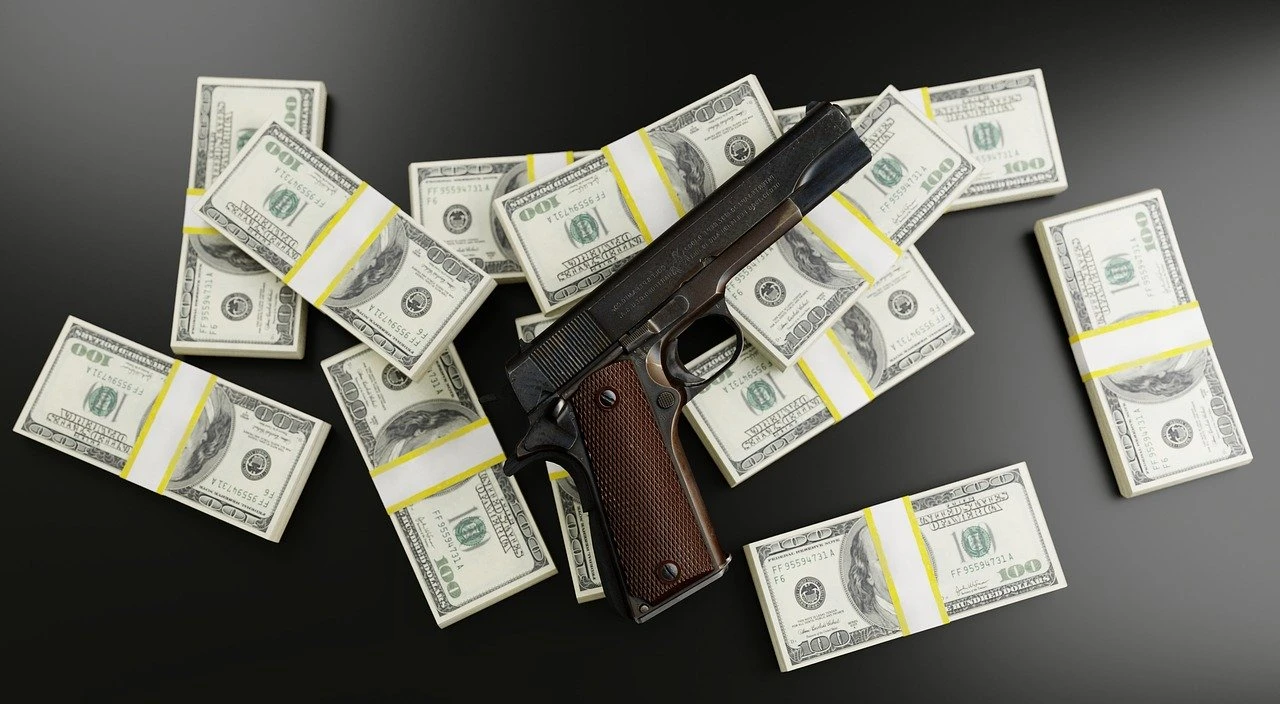
Collusion between criminal-state networks allows cartels to supplant state authority and exercise territorial control through corruption1. By penetrating legitimate businesses, purchasing political power, and exploiting vulnerabilities within law enforcement agencies, cartels further solidify their influence and erode the legitimacy of the state1.
The involvement of corrupt officials in drug trafficking organizations poses a serious threat to national security and public trust. Efforts to combat corruption involve monitoring public complaints, conducting internal audits, sharing intelligence through task forces like the FBI’s Border Corruption Task Forces, and enforcing laws to limit the convergence of transnational criminal organizations with local gangs3. Despite the challenges posed by corruption, law enforcement agencies remain vigilant in addressing and preventing corrupt practices that enable cartel operations.
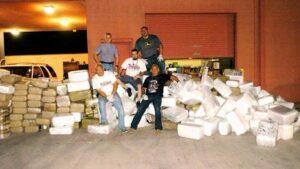
From 2000 to 2013, 13 officers with U.S. Customs and Border Protection went to prison for federal crimes.
Some examples of corruption involving Texas-based cartels include:
- Panama Unit Corruption: In the Rio Grande Valley of Texas, the Panama Unit, (show above) an anti-narcotics squad, became involved in corruption. Members of the unit, including police officers, engaged in drug trafficking activities, using their positions to facilitate drug shipments and profit from illegal activities1.
- Border Corruption Cases: Law enforcement officers along the U.S.-Mexico border have been arrested, charged, and convicted for corruption between 2004 and 2015. Cases involved customs officers and border patrol agents who engaged in corrupt practices related to organized crime activities such as drug trafficking and human smuggling2.
- Corruption Implications: Corruption enables criminal cartels to engage in narcotics trade, human trafficking, arms trafficking, and other illegal activities. Collusion between corrupt officials and criminal enterprises allows cartels to evade detection and operate with impunity, undermining public trust and state legitimacy3.
These examples highlight the pervasive nature of corruption involving Texas-based cartels and the serious implications it has on law enforcement integrity and public safety along the U.S.-Mexico border.
Texas-based cartels recruit law enforcement officials to facilitate their operations through various means, including collaborating with American gangs and corrupting individuals within law enforcement agencies. Cartels recruit members of violent American gangs like the Bloods, Crips, and Aryan Brotherhood to work on both sides of the U.S.-Mexico border, aiding in drug distribution and other criminal activities12. The Texas Department of Public Safety estimates that there are over 100,000 gang members in the state, many with ties to Mexican drug cartels like the Tango Blast group1.
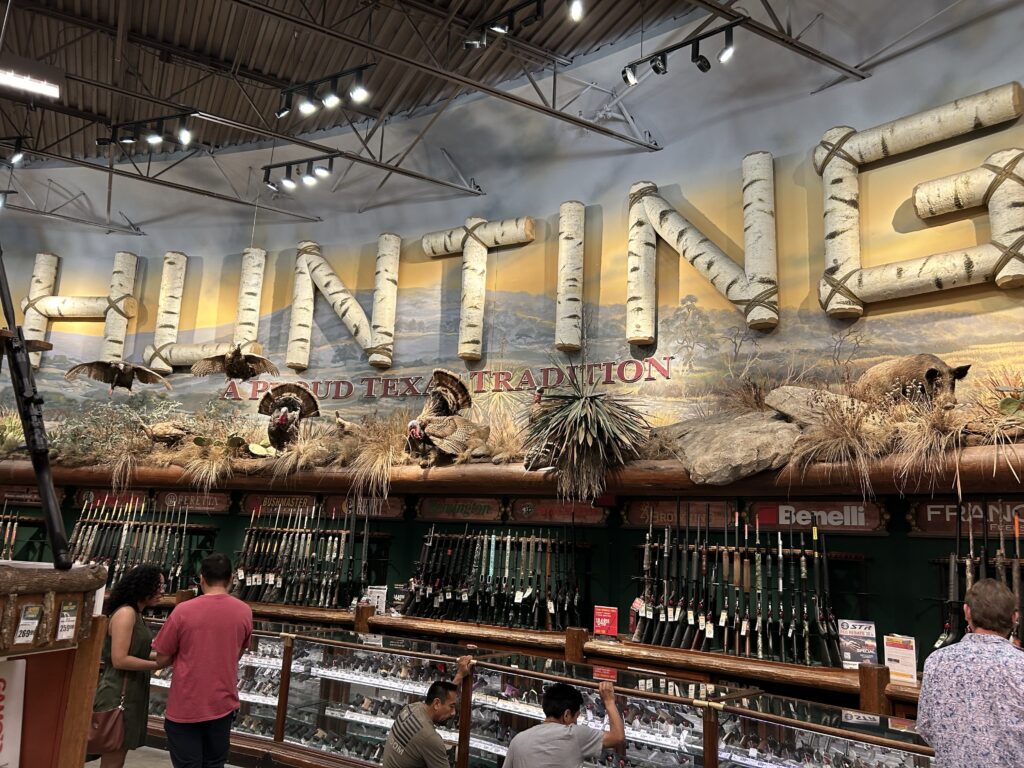
Corruption within law enforcement agencies allows cartels to gain influence and control over police, courts, and correctional institutions. Cartels attempt to bribe officials and place their own members in positions of power to secure long-term influence within these organizations3. The presence of corrupt officials within law enforcement agencies enables cartels to operate with impunity, evade detection, and conduct illegal activities without fear of repercussions3.
The recruitment of law enforcement officials by Texas-based cartels poses a significant threat to public safety and national security. Efforts to combat this issue involve monitoring for signs of corruption, conducting thorough investigations, and implementing measures to prevent cartel influence within law enforcement agencies4.
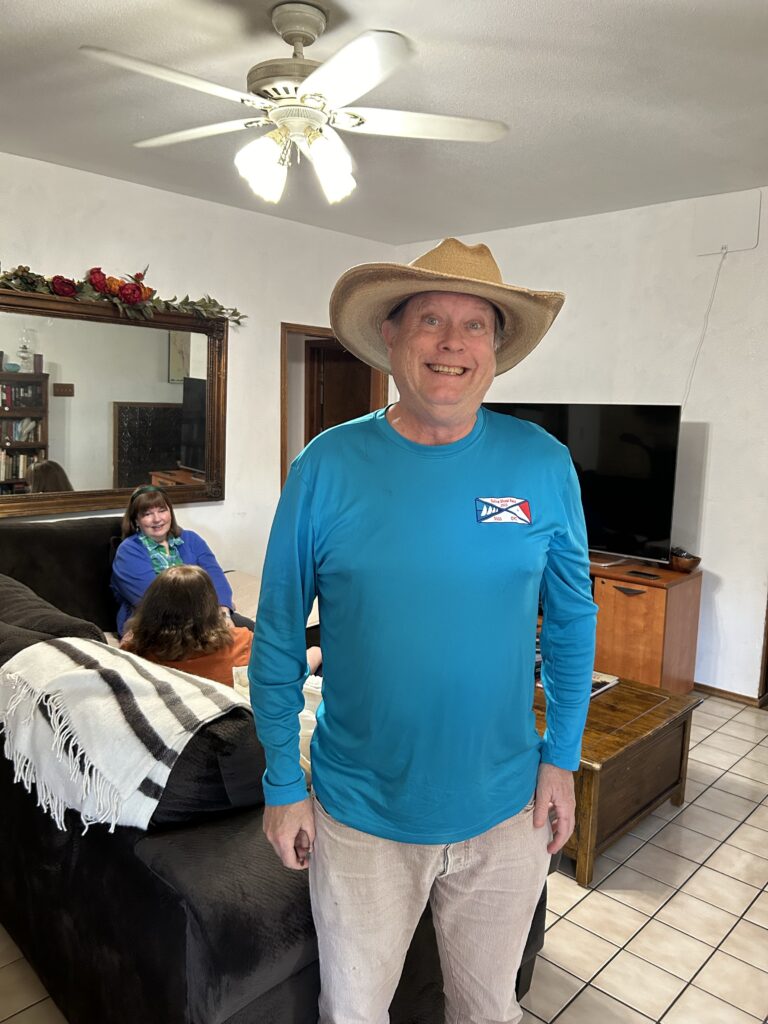
Based on the provided search results, there are instances where individuals associated with Texas-based cartels have been U.S. born or have held U.S. passports. For example:
- Gulf Cartel Boss’ Nephew: In a case from 2011, the nephew of a former Gulf drug cartel boss was held in the U.S. and charged with conspiracy to possess and distribute drugs, as well as using a fraudulent passport1.
- Leaders of Drug Trafficking and Firearms Smuggling: Leaders of international drug trafficking and firearms smuggling operations based in Houston, Texas, were reported to have ties to Mexico-based drug trafficking cartels2.
- Gulf Cartel Plaza Boss: A Gulf Cartel “Plaza Boss” indicted for drug smuggling, money laundering, and document fraud in Texas was a native of Mexico but was arrested in Port Isabel, Texas, and faced charges related to drug trafficking activities4.
- Joaquín “El Chapo” Guzmán, the former leader of the Sinaloa Cartel, has family ties to the United States. His third wife, Emma Coronel, is a U.S. citizen, and in 2011, she gave birth to twin daughters in southern California1. El Chapo’s daughter, Guzmán Ortiz, mentioned that her father visited relatives in the U.S. and viewed her home in California1.While there is no direct mention of El Chapo’s relatives living in Texas, his family connections to the U.S., particularly through his wife and daughters, are evident.
These examples suggest that individuals associated with Texas-based cartels may have diverse backgrounds, including being U.S. born or holding U.S. passports. The involvement of individuals with varying citizenship statuses in cartel activities underscores the complex nature of transnational criminal operations and the challenges they pose for law enforcement agencies in combating organized crime.
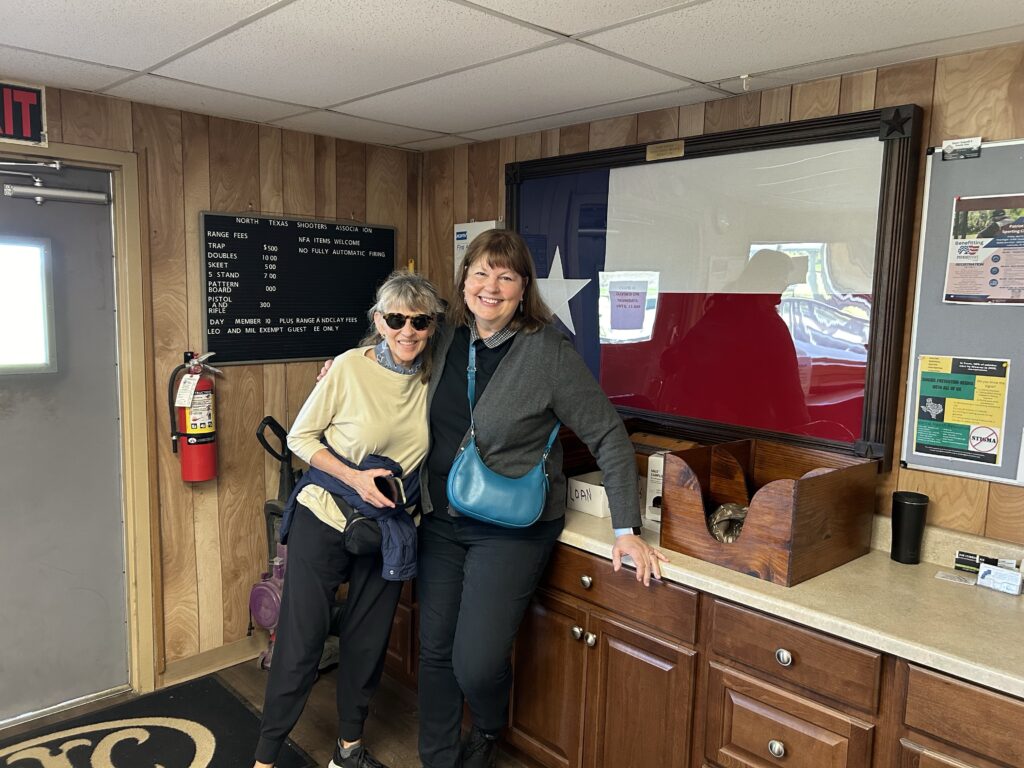
gun trafficking from Texas for cartel wars
Texas-based cartels play a significant role in gun trafficking, contributing to violence and instability in Mexico. These cartels have ties to Mexico-based drug trafficking organizations and are involved in smuggling weapons across the border1. The estimated 250,000 guns smuggled into Mexico annually, many originating from the U.S., fuel cartel violence and criminal activities2. Cartels pay Americans to purchase weapons from gun stores and gun shows across Texas, and then smuggle these firearms into Mexico through a network of brokers and couriers3. Texas, with its high number of firearms dealers and easy access to weapons at gun shows, plays a significant role in this illegal trafficking, contributing to the flow of guns south into Mexico2.
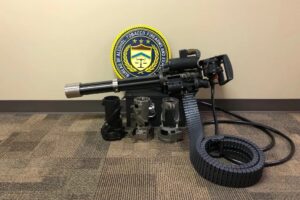
Minigun at the Anzalduas bridge border crossing. Photo credit: ATF
The ease of obtaining firearms in Texas, coupled with lax gun laws, has allowed cartels to legally arm themselves by exploiting loopholes such as purchasing guns without background checks or licenses2. Efforts to curb this flow include initiatives like Operation Southbound by the ATF, aimed at disrupting the trafficking of firearms from the U.S. to Mexico3. Despite these efforts, the challenge persists due to the vast number of weapons trafficked annually and the limitations in effectively curbing this illegal activity.
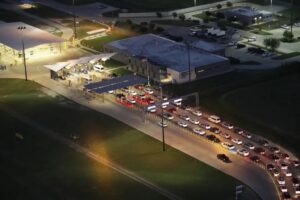
The Anzalduas port of entry in Mission, Texas. There’s no end to the ways gunrunners have of hiding their illicit merchandise, says an former HSI agent. “Trucks with an inside and an outer shell. An inner and an outer fender. A flatbed with a false bottom, holding 15 or 20 guns. They’ll hide them inside oil pans, inside manifolds, inside tankers, in the bilge — no one wants to look in there because it’s so fricking nasty.” Photo credit: John Moore/Getty Images JOHN MOORE/GETTY IMAGES
Gun trafficking from Texas to Mexico has severe consequences, contributing to violence, crime, and instability in Mexico. The influx of firearms into Mexico fuels the activities of drug cartels, enabling them to intimidate communities, challenge state authority, and expand their drug trade operations2. The availability of high-powered weapons, including military-grade firearms, poses a significant threat to public safety on both sides of the border, endangering law enforcement personnel and civilians3.
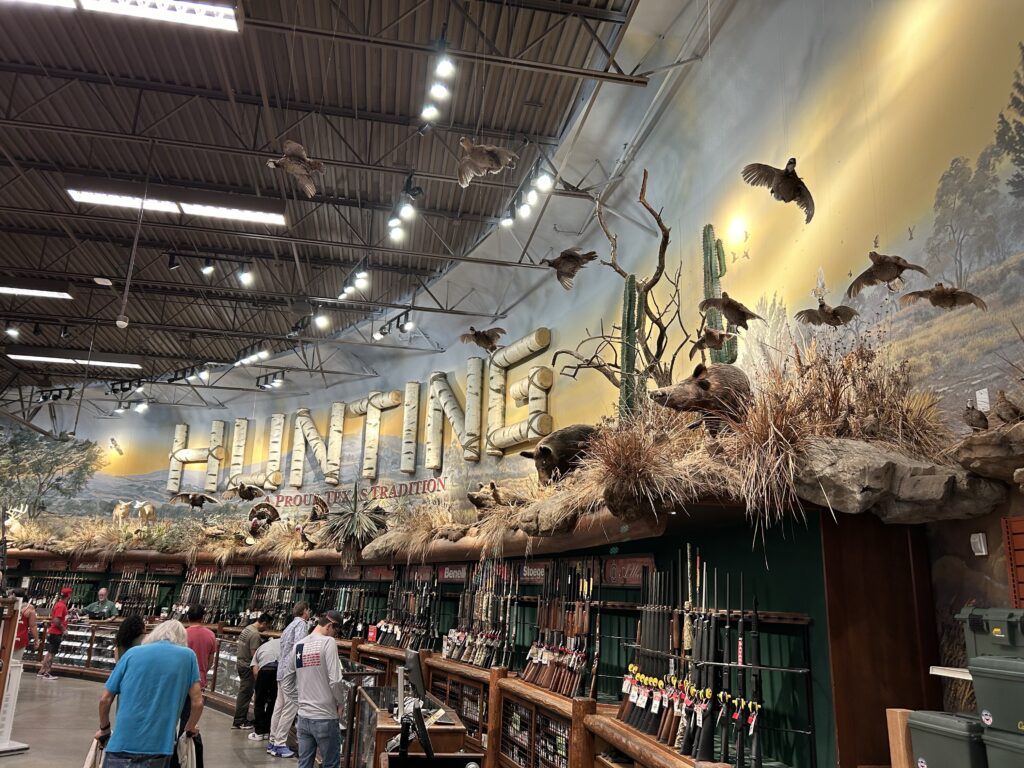
The impact of gun trafficking is evident in the staggering number of crimes committed with firearms traced back to the United States. Between 2015 and 2021, at least 140,000 civilians were killed with firearms in Mexico, with a significant portion of these weapons originating from the U.S.2. The flow of weapons from Texas to Mexico has led to the deaths and injuries of law enforcement officers and military personnel in Mexico, highlighting the deadly consequences of illicit gun trafficking3.

Efforts to combat gun trafficking include initiatives such as Operation Southbound by the ATF, which aims to disrupt the flow of firearms from the U.S. to Mexico4. The U.S. government has implemented new laws targeting gun trafficking, imposing harsher penalties on offenders and enhancing law enforcement efforts to combat illegal arms smuggling2. Despite these measures, the challenge persists due to the vast number of firearms trafficked annually and the complex nature of addressing this illicit activity effectively3.
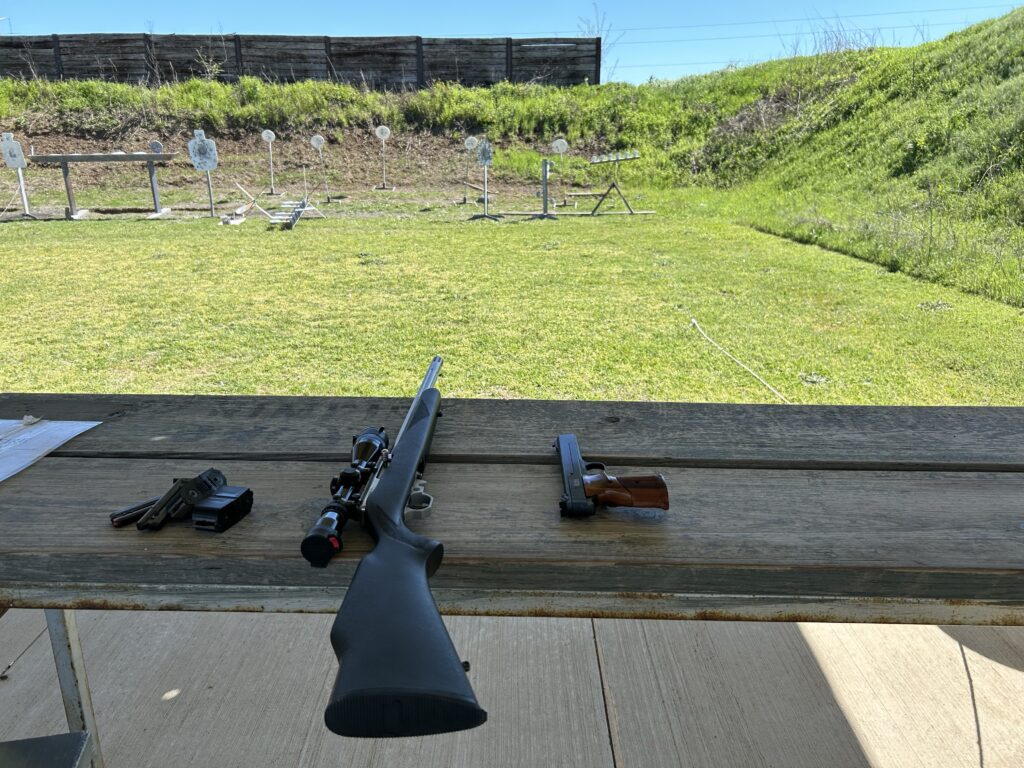
Gunrunners use various methods to hide firearms, such as concealing them inside vehicles, oil pans, manifolds, tankers, or other compartments to avoid detection1. The porous nature of the border and the volume of traffic under agreements like the North American Free Trade Agreement make it challenging to intercept these illegal shipments1. The Mexican government has taken legal action against U.S. gun dealers and manufacturers to address the flow of weapons into Mexico4.
In addition to gun trafficking and drug distribution, these cartels are also involved in other criminal activities such as housing scams and money laundering. The complex nature of these organizations includes highly defined command-and-control structures that produce, transport, and distribute large quantities of illicit drugs4. Mexican drug trafficking organizations dominate drug trafficking in the North Texas HIDTA region, with sophisticated operations controlling the flow of drugs and money laundering activities4. These criminal groups engage in various illegal activities, including distributing drugs, money laundering, and maintaining control over drug trafficking routes4.
The cities in the North Texas High Intensity Drug Trafficking Area (HIDTA) include:
- Dallas
- Fort Worth
- Lubbock
- Collin
- Denton
- Ellis
- Henderson
- Hood
- Hunt
- Johnson
- Kaufman
- Navarro
- Parker
- Potter
- Randall
- Rockwall
- Smith
- Tarrant
These cities constitute major drug markets within the North Texas HIDTA region and are significant areas for drug trafficking and abuse2. Law enforcement agencies in these cities work collaboratively to combat drug trafficking activities and address the challenges posed by cartels operating within the region4.
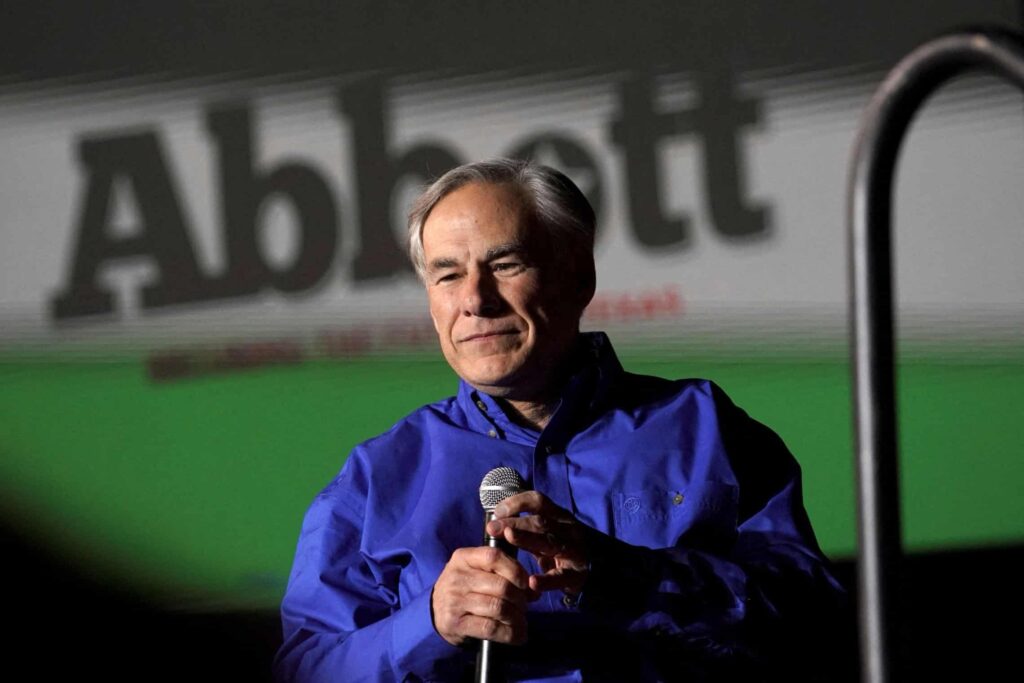
The Gulf Cartel, Sinaloa Cartel, and Juárez Cartel are active in the region, with the Gulf Cartel posing the primary organizational threat2. These cartels maintain control over drug smuggling routes through gatekeepers in border cities like Matamoros, Reynosa, and Nuevo Laredo, facilitating drug trafficking activities along the U.S.-Mexico border5.
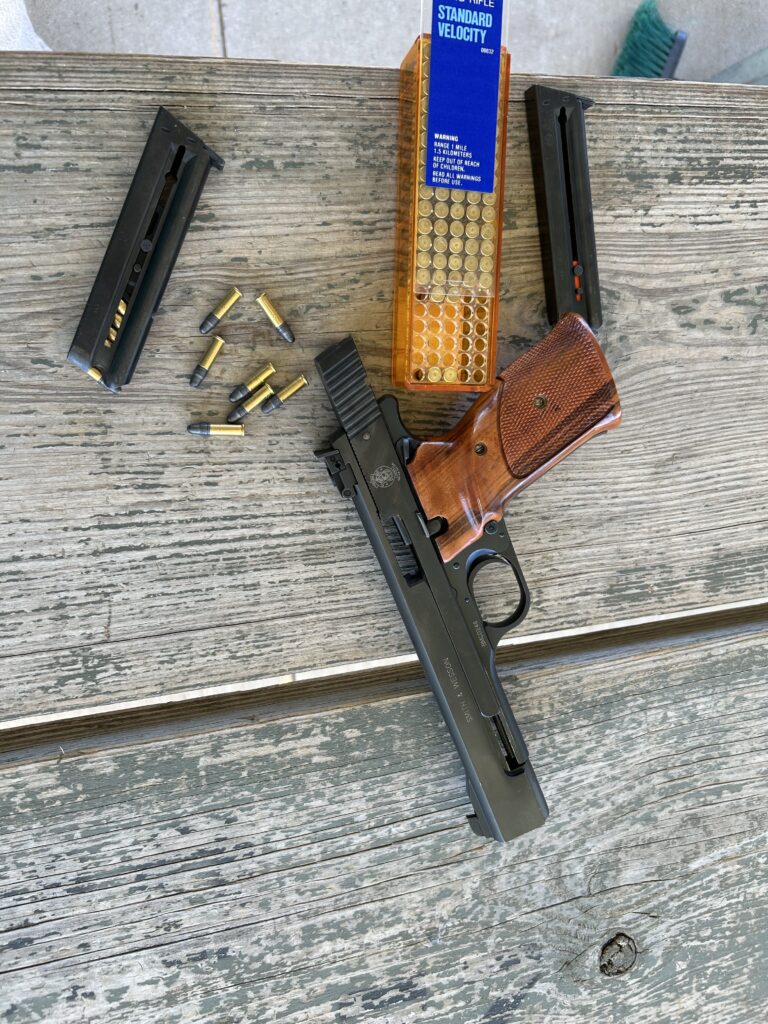
In contrast to the Texas Cartels, Mexican Drug Trafficking Organizations (DTOs) dominate drug trafficking in South Texas, with sophisticated networks extending across the U.S., facilitating the transportation and distribution of heroin, marijuana, and methamphetamine2. The Gulf Cartel and Sinaloa Cartel battle for control of smuggling routes in northern Mexico, impacting areas like Nuevo Laredo, Tamaulipas, near the Texas border2. The U.S. government conducts multiagency investigations targeting cartels like the Gulf Cartel to disrupt their operations, resulting in arrests, drug seizures, and indictments of cartel leaders3.
During their visits to the US-Mexico border, both President Biden and former President Trump are likely to address the issue of gun trafficking from Texas for cartel wars. President Biden has made it a priority to crack down on firearms trafficking, with the ATF focusing on firearms trafficking as a top priority1. The flow of legally purchased guns from Texas into Mexico has been highlighted as a significant factor fueling cartel violence and the fentanyl crisis13. Mexican officials have long sought America’s assistance in curbing gun smuggling, and recent efforts, including a new firearms trafficking law, aim to address this issue1.
- Discussion at News Conferences:
- President Biden is likely to discuss the need for bipartisan support for a Senate border security deal, meeting with Border Patrol agents, law enforcement, and local leaders to emphasize the importance of additional resources for securing the border14.
- Former President Trump is expected to focus on his hard anti-immigration stance, criticizing Biden’s policies and vowing to crack down on crossings from Mexico23.
- Mention of Drug Cartels:
- Mention of Gun Trafficking from Texas:
- The issue of gun trafficking from Texas for cartel wars may be addressed, especially considering the flow of weapons from the U.S. into Mexico and its impact on cartel-related violence3.
- Negotiations with Mexico Government:
- While specific negotiations with the Mexican government may not be explicitly mentioned in the news conferences, discussions about border security and cooperation with Mexico to address immigration and security issues are expected4.
- Recent Drug Busts:
- Details about recent drug busts may be brought up during the visits to highlight law enforcement efforts in combating drug trafficking across the border5.
Both Biden and Trump may mention the impact of gun trafficking on cartel violence and drug-related activities during their visits to the border. The issue of guns flowing from Texas into Mexico, enabling cartels to terrorize communities on both sides of the border, is a critical concern that may be addressed by both leaders during their respective visits3.
The search results provide information on cartel activities and gang presence in various Texas cities. Here’s a summary of the information available:
Houston
All major cartels operate in Houston, with the Gulf Cartel and the Knights Templar cartel having the biggest share of DEA attention1.
Bellmead
There is a mention of Bellmead being dangerous, but no specific details on cartels or gangs are provided in the search results2.
Pasadena
In Pasadena, there has been an indictment in a crackdown on a gang linked to a drug cartel, indicating some level of cartel activity3.
Corpus Christi
While there is mention of cartel activity affecting travel plans in Mexico near Corpus Christi, there is no specific information on the city itself5.
North Texas Region (including Dallas and Fort Worth)
The Gulf Cartel controls lucrative smuggling routes and has easy access to the Dallas/Fort Worth metropolitan area. Various gangs, including Hispanic and outlaw motorcycle gangs, are active in drug trafficking in the region6.
Three Men Arrested For Trying To Buy Rifles For Mexican Cartels At Dallas-Fort Worth Store

… a new federal law went into effect that makes straw purchases a felony, punishable by up to 15 years in prison. According to the Washington Post, the Justice Department has charged more than 250 people under the new law in the past 16 months
Mexican cartels have recently begun to seek an increase in firepower as cartels in the country fight each other for territory. Recently, the federal Bureau of Alcohol, Tobacco, Firearms and Explosives warned U.S. gun sellers about this trend and straw purchases.
According to a report by the United States Government Accountability Office, about 70% of all guns recovered in Mexico were from the U.S., and Texas accounted for 42% of those.
ReformAustin
General Texas Gang Activity
Tango Blast is identified as the largest and most dangerous gang in Texas, with significant cartel relationships and criminal activity7. The Texas Department of Public Safety’s Gang Threat Assessment identifies Tango Blast and Tango cliques, Texas Syndicate, Texas Mexican Mafia, and Barrio Azteca as the gangs posing the greatest threat to Texas due to their relationships with Mexican cartels and high levels of criminal activity9.
Based on the information provided in the search results, the most dangerous cities in Texas for tourists, according to various sources, include:
- Lubbock: Ranked as the city with the highest crime rate in Texas, Lubbock is noted for its significantly higher crime rate compared to the national average. Violent crimes, including murders, robberies, and assaults, are particularly high, making it a city where tourists need to be cautious246.
- Beaumont: Known for its high violent crime rate, Beaumont has been highlighted for its number of murders, rapes, aggravated assaults, and robberies. The city’s crime rate makes it a concerning destination for tourists23.
- San Antonio: Despite being a popular tourist destination with attractions like The Alamo and the River Walk, San Antonio has a high crime rate, with residents having a one in 15 chance of being a crime victim3.
- Corpus Christi: Situated on the Gulf of Mexico, Corpus Christi has a higher murder rate than many nearby cities, posing a risk to tourists visiting the area3.
- Amarillo: Known for its steak challenge and cultural attractions, Amarillo has significant crime concerns, particularly in the Northeast quadrant of the city. Gang activity has also been noted as a concern3.
- Bellmead: Despite its small size, Bellmead has a high rate of violent and property crimes, making it one of the most dangerous cities in Texas and even ranking among the most dangerous in the USA3.
- Pasadena: This city has been mentioned in the context of a crackdown on a gang linked to a drug cartel, indicating some level of criminal activity that could affect tourists2.
- Mesquite: Included in the list of dangerous cities, Mesquite’s specific crime rates and issues were not detailed in the provided search results2.
- Houston: As one of the largest cities in Texas, Houston has a notable violent crime rate, with a significant number of residents being victims of crime3.
- Dallas: Although not detailed in the provided search results regarding specific crime rates, Dallas is mentioned alongside other large Texas cities facing crime issues3.
Tourists planning to visit these cities should exercise caution, stay informed about the areas they plan to visit, and follow safety advice and guidelines. It’s important to note that while certain areas within these cities may have higher crime rates, there are also safe neighborhoods and tourist attractions that can be enjoyed with proper precautions.
Federal Government Threat
President Joe Biden’s policies and actions have been perceived as threats to the state of Texas, particularly in areas related to energy production and immigration. The potential harm to the Texas economy under four more years of Biden’s economic policy could manifest in several key sectors, notably the oil and gas industry and border security measures.
Energy Sector

Biden’s energy policies, especially those aimed at combating climate change, have raised concerns among Texas officials and the oil and gas industry. The administration’s efforts to transition away from fossil fuels and towards cleaner energy sources could significantly impact Texas, which is a leading producer of oil and natural gas in the United States.
- Oil and Gas Industry: Biden’s executive actions, such as revoking the permit for the Keystone XL pipeline and directing the Interior Department to halt new oil and gas drilling contracts on federal lands, have been criticized by Texas lawmakers and industry experts. Although Texas has minimal federal land, the broader push towards limiting fossil fuel production and increasing regulations could disadvantage Texas’ oil and gas sector, which is a major contributor to the state’s economy12.
- LNG Export Pause: The Biden administration’s pause on the approval of pending and future applications to export American liquefied natural gas (LNG) has been met with strong opposition from Texas officials. They argue that this move could jeopardize millions of jobs, particularly in rural areas, and weaken U.S. energy security by making allies dependent on adversaries like Russia and Iran for energy. The LNG export pause is seen as part of a broader “war on energy” that could harm Texas’ thriving energy industry4.
Border Security and Immigration
Biden’s immigration policies and the federal government’s handling of the border situation have also been sources of contention with Texas. The state has taken unilateral actions to secure its border, citing the federal government’s failure to enforce immigration laws as a significant threat.
- Border Control Measures: Texas has implemented measures such as erecting barriers and deploying the National Guard to patrol the border. The state argues that these actions are necessary to protect its citizens from the consequences of illegal immigration, which they attribute to the Biden administration’s policies. The federal government’s reluctance to intervene or sue Texas for taking over border control duties has been interpreted as a tacit acknowledgment of the state’s right to self-defense35.
- Economic and Security Concerns: The influx of migrants and the perceived encouragement of illegal immigration by the Biden administration are viewed as threats to Texas’ security and economic stability. The state has expressed concerns that continued policies that incentivize illegal immigration could strain resources, impact public services, and increase security risks3.
There are a few key points to consider regarding the perception of immigration as a threat in Texas and the employment of undocumented workers:
- Perceived Threats from Immigration:
- The search results indicate that Texas has a long history of immigration, particularly from Mexico, and that immigrants now make up a significant portion of the state’s population and workforce1. However, the state government has taken actions, such as passing SB 4, that suggest immigration is viewed as a threat, even though the law faces legal challenges23.
- Some of the perceived threats seem to be related to border security, the economic impacts of undocumented immigration, and concerns about the federal government’s role in immigration enforcement24.
- Employment of Undocumented Workers:
- The search results show that undocumented immigrants make up a significant portion of the Texas workforce, particularly in industries like construction, maintenance, and food service1. This suggests that employers are able to hire undocumented workers without facing serious penalties.
- The reasons for this lack of enforcement are not entirely clear from the search results, but it may be related to the economic benefits that undocumented workers provide to certain industries in Texas.
- Potential Distraction from Wealth Inequality:
- The search results do not directly address the question of whether immigration is being used as a distraction from wealth inequality in Texas. However, the focus on immigration as a threat, combined with the apparent lack of enforcement against employers of undocumented workers, could suggest that the issue is being politicized and used to divert attention from other economic and social challenges facing the state.
Overall, the search results indicate that immigration is perceived as a significant threat in Texas, despite the state’s long history of immigration and the economic reliance on undocumented workers. The reasons for this perception and the lack of enforcement against employers are not entirely clear, but they may be related to political and economic factors that go beyond the immigration issue itself.
Infrastructure Plan
President Biden’s infrastructure plan, known as the Bipartisan Infrastructure Law, has a significant impact on Texas. The plan includes a $50 billion investment in water infrastructure upgrades, which Texas has already received $1,348,892,000 from since 20221.Additionally, Texas is set to receive approximately $35.4 billion over five years for various infrastructure projects, including roads, bridges, pipes, ports, broadband access, and other initiatives5.
The funding allocated to Texas is part of a larger $1.2 trillion infrastructure package, which will mostly go to funding roads, bridges, pipes, ports, broadband access, and several other projects2. The funds coming to Texas will be determined by the White House through the bill’s state allotment formula, and the state will also have the opportunity to apply for grants and additional categories in addition to these2.
The infrastructure bill includes investments in transportation, such as $110 billion for roads, bridges, and other major projects, including $40 billion for bridge repair, replacement, and rehabilitation2. Texas will receive $26.9 billion for federal highway programs4. Furthermore, the bill provides $3.3 billion for public transportation, which could support projects like Austin’s Project Connect, a $7.1 billion mass transit plan approved by voters in November 20204.
In terms of water infrastructure, the bill invests $55 billion into improving water systems and replacing lead pipes, and another $50 billion towards making power and water systems more resilient to protect from droughts, floods, and cyber-attacks2. Texas will receive $1 billion to provide clean and safe water across the state and improve water infrastructure3.
The infrastructure plan also includes investments in broadband access, with $65 billion set aside to expand broadband, which has become a priority after COVID-19 left millions of Americans at home without effective internet access2. As of today, more than 1,359,000 households across the state are receiving affordable high-speed internet due to the Bipartisan Infrastructure Law3.
Overall, the Biden infrastructure plan has the potential to significantly improve Texas’ infrastructure, particularly in areas such as transportation, water infrastructure, and broadband access. The funding will be distributed over a five-year period, and the specific projects that will be funded are still being determined2. However the plan limits opportunities for private businesses.
Texas has more public-private partnership projects than most states, particularly in the area of toll roads. The state has approximately 25 toll roads, which is more than any other state in the U.S. These toll roads have been implemented through public-private partnerships, where the private sector brings in capital and innovation to create a more expensive system2.
Some examples of public-private partnerships in Texas include the Central Texas Turnpike System (CTTS), which consists of three toll roads in Greater Austin, and the TEXpress Lanes in the Dallas–Fort Worth Metroplex, which are six managed-access lanes. Additionally, the state has implemented projects such as the Sam Houston Tollway in Houston and the LBJ Express in Dallas, which are notable examples of toll roads in Texas2.
Over the last 50 years, the number of public-private partnership projects in Texas has increased significantly, particularly in the transportation infrastructure space.

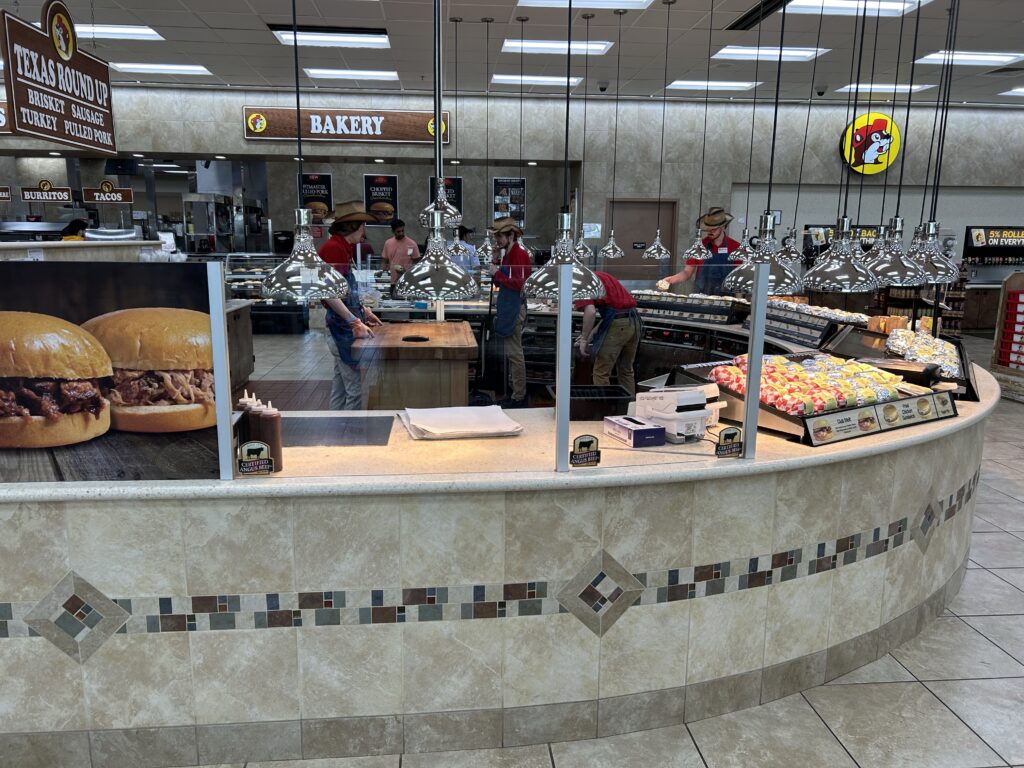
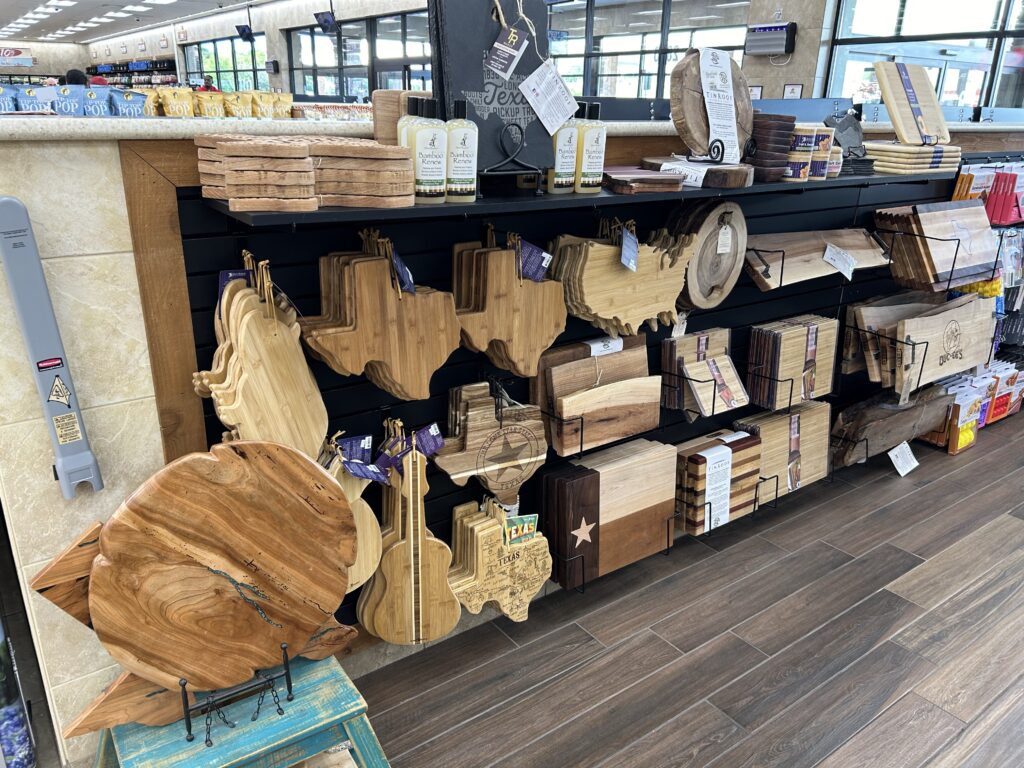
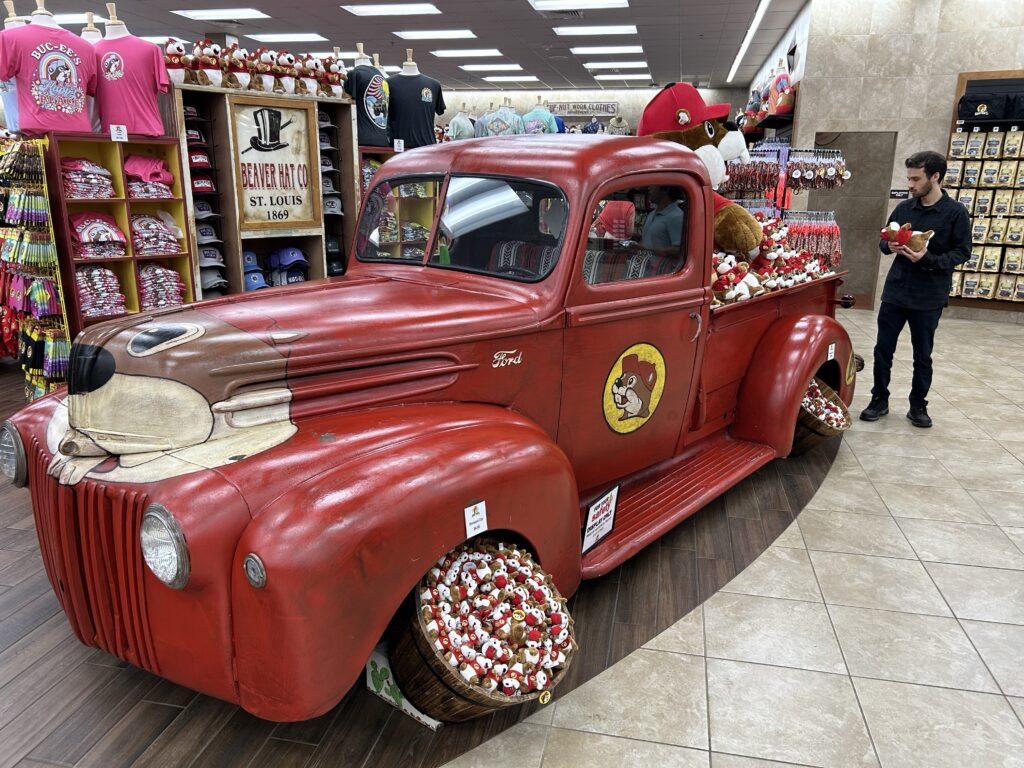
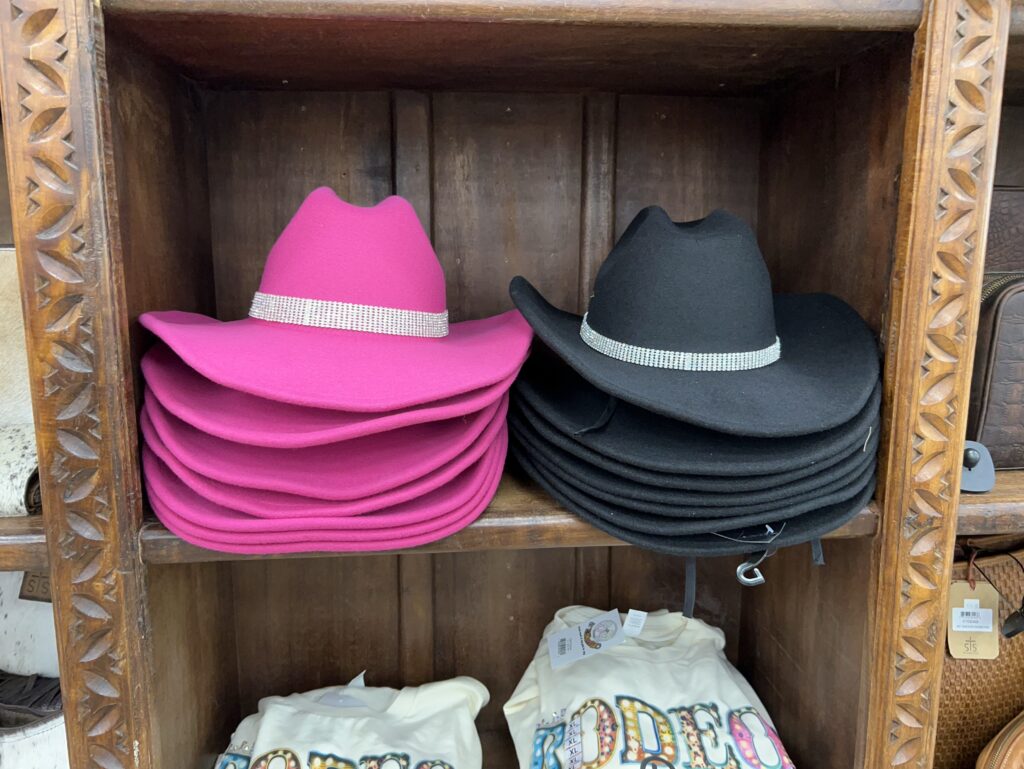
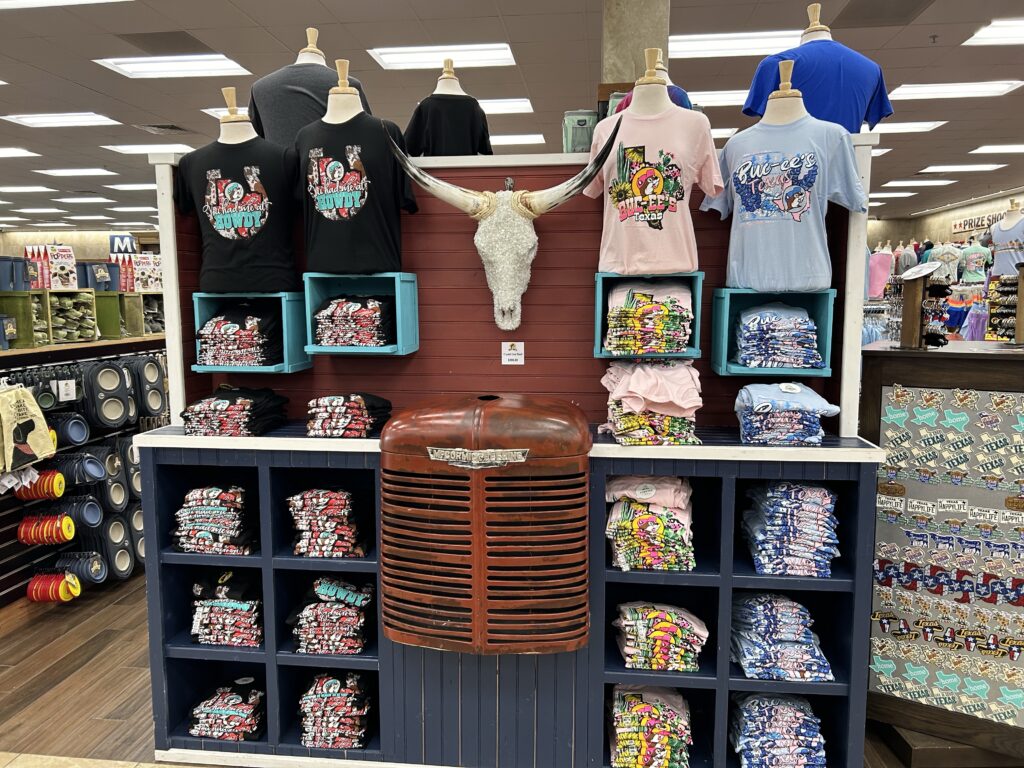
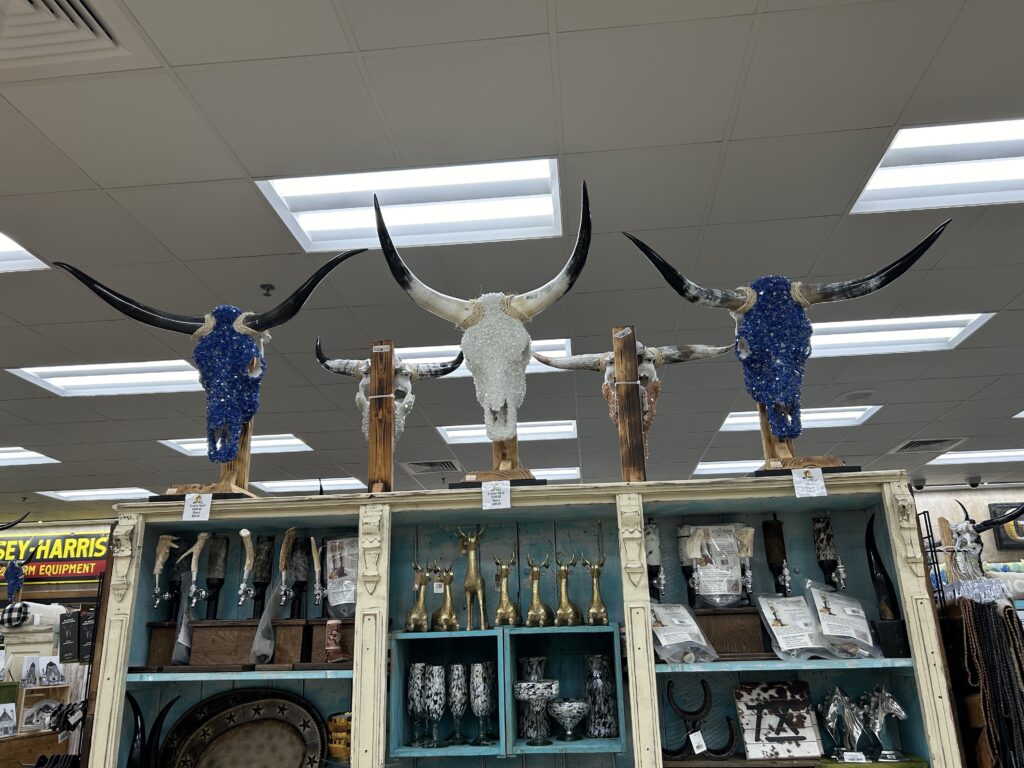
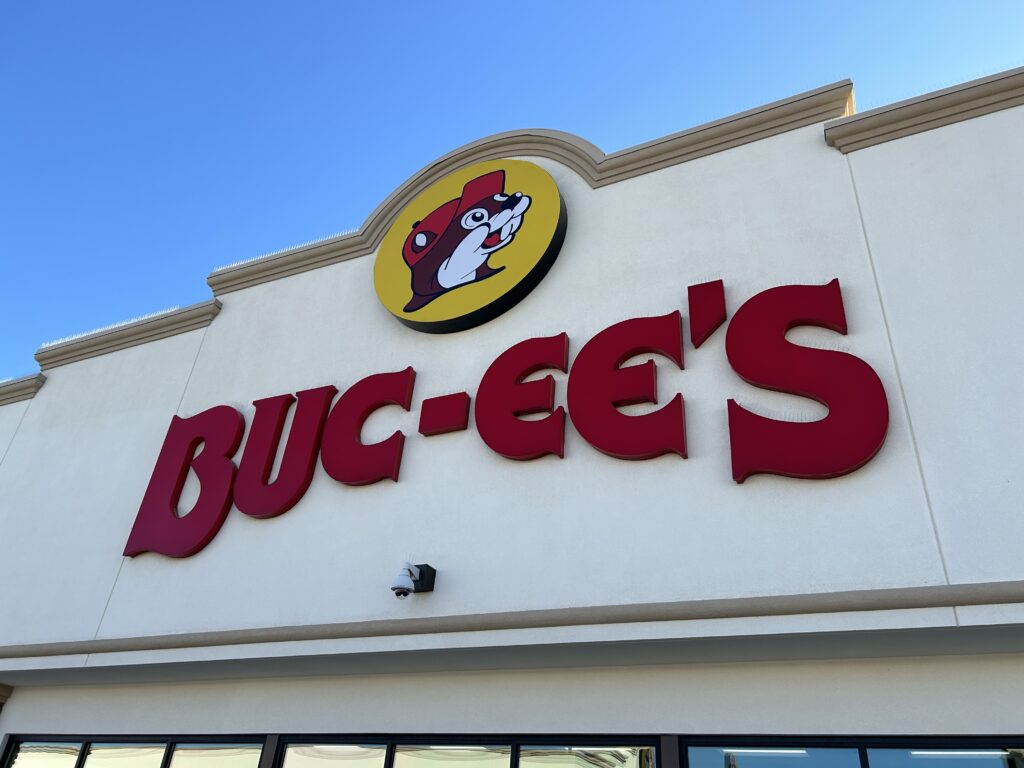
Based on the search results provided, there are a few ways that public-private partnerships (PPPs) can potentially undermine Texas state government:
- Lack of Transparency and Accountability:
- The search results note that the “secrecy surrounding [PPPs’] financial details complexifies the process of evaluating whether PPPs have been successful”2. This lack of transparency can make it difficult for the public to hold the government accountable for the terms and outcomes of these partnerships.
- Higher Costs for the Public:
- The search results indicate that “PPPs are structurally more expensive than publicly financed projects because the private sector’s higher cost of borrowing, resulting in users or taxpayers footing the bill for disproportionately high interest costs”2. This can lead to the public paying more for public services and infrastructure.
- Prioritizing Private Profits over Public Interests:
- The search results suggest that “the public return on investment is lower than returns for the private funder” in PPPs2. This raises concerns that the private partner’s profit motives may take precedence over the public good.
- Reduced Government Control and Oversight:
- In some cases, PPPs can result in the private sector having “effective control” over the partnership, even if the public sector retains majority ownership4. This can diminish the government’s ability to direct and oversee the delivery of public services.
- Potential for Conflicts of Interest:
- The search results note that PPPs operate “at the boundary between the public and private sectors,” which can create conflicts of interest and challenges in aligning the objectives of the public and private partners4.
In summary, the areas of the Texas economy that could be harmed by four more years of Biden’s economic policy include the oil and gas industry, due to a shift towards cleaner energy sources and regulations that could limit fossil fuel production, and border security measures, where the state’s unilateral actions to control immigration could face challenges from federal policies. The federal infrastructure plan is also of concern to private interests seeking partnerships with the federal government
Based on the search results provided, there are a few key ways that Texas is adapting to Biden-related climate change economic policies:
Seeking Federal Funding for Climate Adaptation
- Texas officials, including Governor Greg Abbott and Senators John Cornyn and Ted Cruz, have been actively lobbying the federal government to provide funding for major climate adaptation projects, such as coastal defenses against sea level rise and hurricanes3. This suggests Texas is seeking federal support to address the impacts of climate change, even as the state’s leadership has been skeptical of climate science.
Promoting Renewable Energy
- While Texas has been a leader in fossil fuel production, the state also has a thriving renewable energy sector, particularly in wind power. However, the search results indicate that the state government has taken actions to “penalize” renewable energy and “promote fossil fuels”3, which could hinder the growth of clean energy in Texas.
Developing Climate Action Plans
- The City of Austin is using a $1 million EPA grant to develop a Priority Climate Action Plan and a Comprehensive Climate Action Plan to reduce greenhouse gas emissions and address the impacts of climate change1. This suggests some Texas localities are taking proactive steps to adapt, even if the state government has been resistant.
Regarding the diversity of Texas’ economy, the search results provide some mixed signals:
- On one hand, Texas is heavily reliant on the oil and gas industry, which could be threatened by a shift away from fossil fuels3.This could pose challenges for the state’s economic growth.
- However, Texas also has a thriving renewable energy sector, as well as other industries like technology, aerospace, and manufacturing3. This suggests the state’s economy may be diverse enough to continue growing, even if fossil fuel extraction is reduced or halted.
Ultimately, the search results indicate that Texas is taking some steps to adapt to climate change and Biden’s related policies, but the state’s leadership remains divided on the issue, with some officials actively resisting climate action. The long-term economic impacts on Texas will likely depend on the state’s ability to diversify its economy and effectively transition to clean energy sources.
How does the distribution of wealth in texas compare to other states?
The distribution of wealth in Texas compared to other states can be summarized as follows:
- Income Inequality in Texas:
- Texas has a relatively high level of income inequality, with a Gini coefficient of 0.475, which is the 13th highest among all 50 states2.
- The average income of the top 20% of households in Texas is $228,924, which accounts for 51.0% of all income earned in the state. Meanwhile, the average income of the bottom 20% of households is just $14,556, accounting for only 3.3% of all earnings2.
- This disparity in income distribution is significant, with the top 20% of households earning 15.7 times more on average than the bottom 20%2.
- Comparison to Other States:
- Texas ranks among the states with the highest levels of income inequality in the country. For example, it has a higher Gini coefficient than the national average of 0.4812.
- Other states with high income inequality include New York (0.515), Connecticut (0.502), and Louisiana (0.498), which have Gini coefficients higher than Texas5.
- However, some states like Utah (0.427), Idaho (0.434), and Wyoming (0.435) have lower levels of income inequality compared to Texas5.
- Wealth Concentration:
- The search results indicate that the wealthiest 5% of households in Texas have average incomes 14.3 times larger than the bottom 20% of households, and 4.8 times larger than the middle 20% of households3.
- This suggests a significant concentration of wealth at the top of the income distribution in Texas, similar to national trends of growing wealth inequality.
In summary, Texas has a relatively high level of income inequality compared to other states, with a large gap between the incomes of the wealthiest and poorest households. This unequal distribution of wealth in Texas appears to be a significant issue that mirrors broader trends of growing income and wealth disparities across the United States.
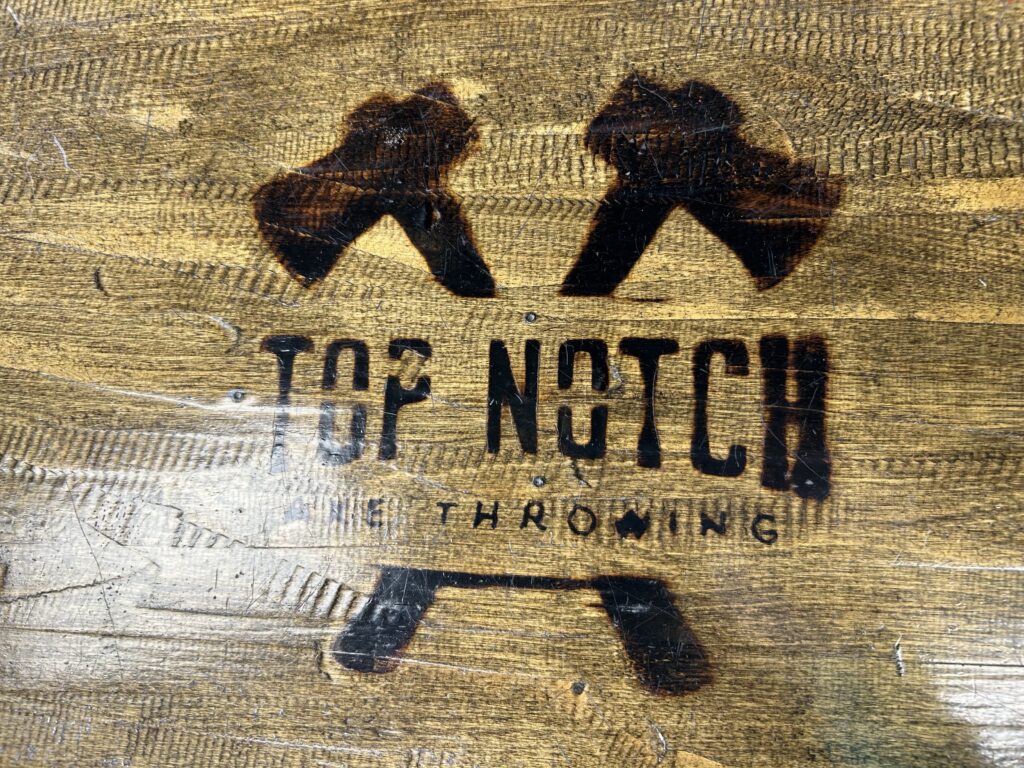
Texas Influence on National Politics
Four U.S. presidents have called Texas their home state:
- Lyndon B. Johnson (36th President, 1963-1969)
- Johnson was born in Johnson City, Texas and was a Texas congressman and senator before becoming Vice President and then President.
- As President, Johnson’s “Great Society” programs expanded the federal government’s role in domestic policy, including the creation of Medicare and Medicaid, the Voting Rights Act, and the Immigration and Nationality Act of 1965.
- Johnson’s presidency had a significant impact on Texas, as many of his domestic policy initiatives were aimed at reducing poverty and expanding social services, which benefited the state.
- George H.W. Bush (41st President, 1989-1993)
- Bush was born in Massachusetts but later became a Texas businessman and congressman before serving as Vice President and then President.
- As President, Bush oversaw the end of the Cold War and the first Gulf War, in which a U.S.-led coalition expelled Iraqi forces from Kuwait.
- Bush’s background in Texas business and politics likely influenced his economic policies and approach to energy issues as President.
- George W. Bush (43rd President, 2001-2009)
- Bush was born in Connecticut but grew up in Texas and served as the 46th Governor of Texas before becoming President.
- As President, Bush’s domestic agenda focused on tax cuts, education reform, and promoting an “ownership society.” His foreign policy was dominated by the War on Terror and the Iraq War.
- Bush’s Texas roots and experience as Governor likely shaped his conservative, pro-business approach to governing and his support for the energy industry.
- Dwight D. Eisenhower was born in Texas, but he grew up primarily in Kansas. He went on to serve as the 34th President of the United States from 1953 to 1961, making him one of the few U.S. presidents with roots in the state of Texas.
- Eisenhower was born on October 14, 1890 in Denison, Texas.2
- His family later moved to Abilene, Kansas when he was a young child.2
- He was elected as a Republican and served two terms as president.23
- Dwight D. Eisenhower’s key accomplishments as president include:
- Interstate Highway System:
- NASA Establishment:
- In response to the Soviet Union’s launch of Sputnik, the first artificial satellite, Eisenhower authorized the creation of NASA (the National Aeronautics and Space Administration) in 1958.23
- This helped propel the United States into the “space age” and the ensuing space race with the Soviet Union.23
- Ending the Korean War:
- Eisenhower negotiated a ceasefire that ended the Korean War, resulting in Korea being divided at the 38th parallel.3
- Domestic Policy and Civil Rights:
- Foreign Policy and the Cold War:
- Overall, Eisenhower’s presidency was marked by significant domestic and foreign policy achievements that had lasting impacts on the United States, from the interstate highway system to the establishment of NASA and advancements in civil rights.
The search results suggest that Texas has had an outsized influence on national politics, with four of its native sons becoming President. The state’s conservative, pro-business climate and energy-focused economy have likely shaped the policies and priorities of these presidents, contributing to a broader “Texanization” of American politics and policy.



Ismael “El Mayo” Zambada, the top leader and co-founder of Mexico’s Sinaloa cartel, eluded the reach of U.S. law enforcement for decades as the criminal organization evolved into the world’s biggest manufacturer and smuggler of illicit fentanyl pills and other drugs to the United States.
Zambada, 76, once ran the cartel in partnership with the flashier and better-known kingpin Joaquín “El Chapo” Guzmán Loera, who is serving a life sentence in a U.S. prison.
Zambada and Guzmán’s son, Joaquín Guzmán López, were arrested in Texas on Thursday after they arrived aboard a private plane.
https://apnews.com/article/sinaloa-cartel-drug-kingpin-arrested-zambada-e9be141a1604b7965844d9aa6e2e70ad
TEXAS GOVERNOR GREG ABBOTT RECOGNIZED AS A GLOBAL INFLUENCE WITH TIME100 LIST HONOR FOR 2024
Texas Governor Greg Abbott has landed a spot on the prestigious TIME100 list for 2024, marking him as one of the world’s most influential figures, according to an announcement made by the magazine. In a recent statement, Abbott expressed his pride and gratitude.
https://hoodline.com/2024/04/texas-governor-greg-abbott-recognized-as-a-global-influence-with-time100-list-honor-for-2024/
https://static1.thetravelimages.com/wordpress/wp-content/uploads/2024/03/img_9207.jpeg?q=50&fit=contain&w=1140&h=&dpr=1.5
https://www.thetravel.com/authentic-experiences-to-add-to-your-texas-bucket-list/
“History will prove that our current state government is the most corrupt ever,” Rogers continued, and is “bought” by a few radical dominionist billionaires seeking to destroy public education, privatize our public schools and create a Theocracy.”
In an interview with the Dallas Morning News’ Watchdog, Rogers said that billionaires Tim Dunn and Farris Wilks are the most powerful men in Texas politics. These billionaires, according to Rogers, manipulate state leaders and that they’re seeking a compliant House.
Glenn Rogers Blasts Texas Government As ‘Most Corrupt Ever’ And Calls Paxton A ‘Criminal’
Everyone Who Has Pulled Out of SXSW in Opposition to the U.S. Army Being a Sponsor
https://time.com/6916015/sxsw-festival-acts-pull-out-us-army-sponsor-backlash/
The U.S. Army is one of six SXSW “super sponsors” for the event, which draws hundreds of thousands of visitors annually for a festival of panels, music showcases, film screenings, and exhibitions in Austin, Tx. This year, as many artists continue to boycott the ongoing event, they have been posting statements via social media, explaining their decisions and citing their discontent with the Army sponsorship, as well as SXSW’s partnership with private defense contractor RTX, a known weapons supplier to the Israeli Army.
Regarding the influence of billionaires on Texas politicians, the search results indicate that two billionaire oil and fracking magnates, Tim Dunn and Farris Wilks, have had a considerable impact on the state’s political landscape. They have donated millions to far-right political candidates and causes, shaping the state’s Republican Party and its legislative agenda. Critics have compared their influence to a “Russian-style oligarchy,” suggesting that these billionaires demand loyalty from the politicians they support and can significantly affect policy outcomes in Texas[3][6].
Two incumbent judges on Texas’ highest criminal court have been ousted and a third is expected to fail in her bid for reelection on Tuesday after Attorney General Ken Paxton targeted the Republicans over a 2021 ruling that struck down the attorney general’s ability to unilaterally prosecute voter fraud.
The Associated Press declared David Schenck and Gina Parker won their races over Judges Sharon Keller and Barbara Hervey respectively. Presiding Judge Keller was first elected to the bench in 1994.
Incumbent judge Michelle Slaughter was expected to lose to challenger Lee Finley.
Paxton targeted the judges as part of a larger political revenge tour in which he attempted to oust Texas House members who voted to impeach him in May.
Criminal appeals court judges targeted by Ken Paxton head to defeat
Nate Paul has been involved in controversies related to hiring employees. In 2019, following an FBI raid on World Class Holdings offices, nearly 20 entities connected to Paul’s company filed for bankruptcy. Subsequently, four of Texas Attorney General Ken Paxton’s employees were dismissed after accusing Paxton of using his office to assist Paul. These employees filed a lawsuit against Paxton, which was settled for $3.3 million. This situation arose after the employees accused Paxton of using his position to benefit Nate Paul, leading to a series of legal actions and investigations.
Nate Paul, an Austin real estate investor, has amassed significant wealth primarily through his investments in the real estate industry. His net worth has seen substantial growth over the years. In 2017, Forbes estimated his net worth to be around $800 million based on his holdings inside and outside of World Class Capital Group[1][3][4]. As of 2024, his net worth is estimated to be approximately $3.5 billion, reflecting the likelihood of criminal activity.
The evidence presented in court to support the prosecution’s claim that Nate Paul was involved with the Texas cartels in a money laundering scheme is multifaceted and compelling. Federal authorities indicted Paul on charges of making false statements to mortgage lenders, wire fraud, and conspiracy to commit wire fraud. These indictments allege that Paul engaged in an eight-year wire fraud conspiracy, misstating partnership bank balances, and wrongfully using limited partnership funds for personal purposes instead of benefiting the partnership as agreed. The prosecution’s case includes detailed financial records, witness testimonies, and a trail of complex financial transactions that point to Paul’s involvement in manipulating funds and concealing the illicit origins of the money.
Moreover, records show that Nate Paul influenced the Texas Attorney General’s office to target his enemies through subpoenas and investigations orchestrated by individuals connected to him. The subpoenas served to executives at Texas banks were written by Paul himself, indicating his direct involvement in influencing legal proceedings. This manipulation of legal processes, coupled with financial misrepresentations and fraudulent activities, forms a strong basis for linking Nate Paul to the Texas cartels in a sophisticated money laundering scheme involving real estate investments and illicit financial transactions.
Attorney General Paxton – previously impeached for misusing his office to help a campaign donor, facing two counts of securities fraud with up to 99 years in prison, under FBI investigation for corruption charges, and in jeopardy of losing his legal license for attempts to overturn the 2020 election – is threatening to close Annunciation House, a 46-year-old migrant shelter in El Paso.